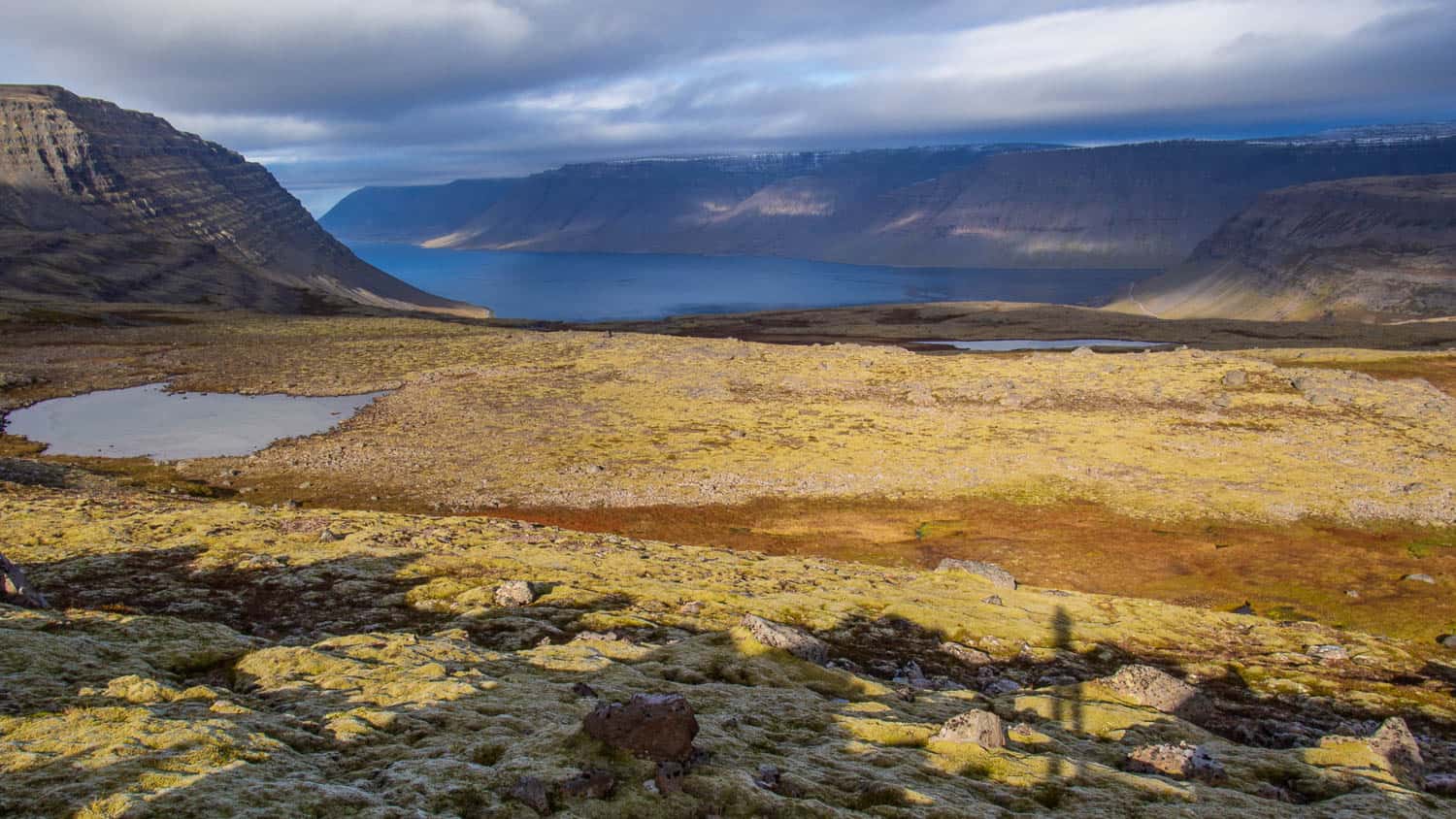

Planning a Trip to Iceland: DOs and DON’Ts (2024)
This page contains affiliate links. Please read our disclosure for more info.
Planning a trip to Iceland is more complicated than to many countries. With its stunning volcanoes, lava fields, fjords, beaches, and waterfalls, it’s no wonder that visitor numbers to Iceland have surged in recent years.
But many tourists underestimate how dangerous this wild and remote island can be.
Some take unnecessary risks and end up needing to be rescued, which is putting strain on Iceland’s volunteer rescue service. Visitors have even been injured or killed after accidents on glaciers, beaches, and cliffs.
This can be avoided, though, and there’s no reason you can’t have a wonderful, incident-free trip by following these Iceland travel tips.
I also include advice for making the most of your vacation in this beautiful country, quirky facts that make Iceland such a unique place to travel, and the latest travel restrictions.
Video: Planning an Iceland Vacation
When is the best time to visit iceland, how long should you spend in iceland, what’s the best way to travel in iceland, before you arrive in iceland, planning a trip to iceland: dos and don’ts, more iceland reading.
Back to Contents
I would happily visit Iceland at any time of year as each season offers a different experience.
Many people consider the summer months of June to August the best time to visit Iceland.
This is when the weather is warmest, although that doesn’t mean it’s hot. In Reykjavik average temperatures in July range from 9 – 14ºC (48 – 57ºF) and it can be colder in the north.
Summer is the time of the midnight sun with daylight hours ranging from 21 hours in late June to 18 hours in early August.
This is the best time of year for hiking, driving the Ring Road (as roads are clear), and seeing whales and puffins. Most attractions and cafes are open.
The downsides of visiting Iceland in the summer are that it’s much busier and more expensive.
Spring and Autumn
To avoid the crowds and high prices, it’s worth considering visiting in the shoulder season months of April/May (spring) and September/October (autumn).
The weather is cold at this time of year but not as extreme as the winter and there’s a good amount of daylight for exploring.
It’s also possible to see the northern lights in these months, although you’ll have more of a chance in April and October.
The downside is that some attractions and cafes are closed.
We loved visiting Iceland in late September when it wasn’t very busy.
We had around 12 hours of daylight and temperatures of –2ºC (28ºF) to 5ºC (40ºF). We enjoyed autumn colours in some locations, the first snowfall on the mountains, and even the northern lights.
See my guide to visiting Iceland in September for more on what to expect.
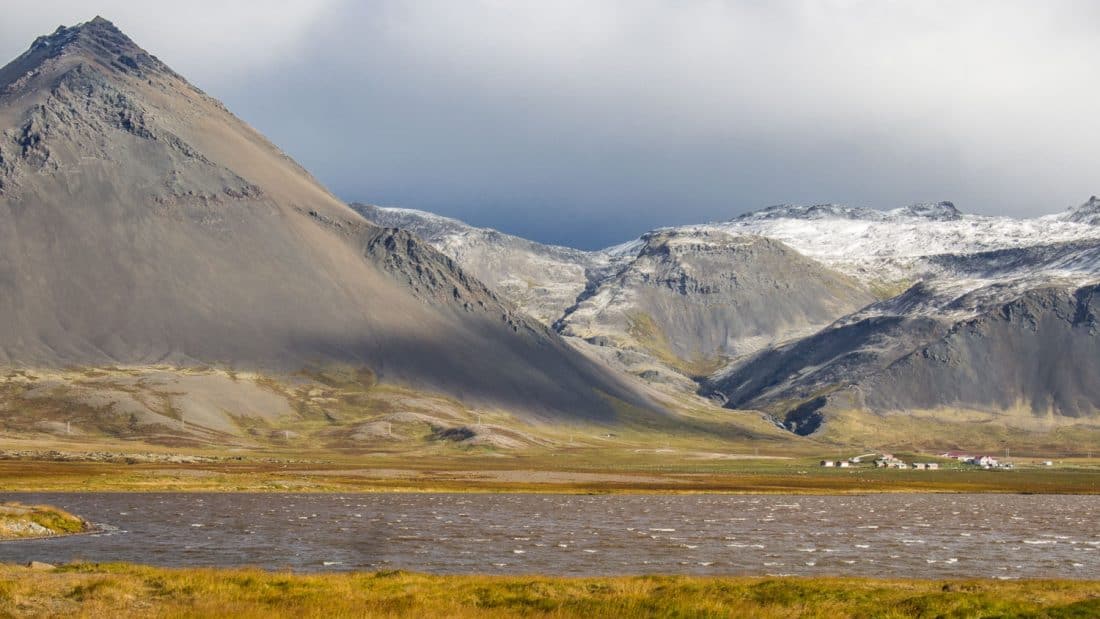
Iceland’s winter from November to March is the quietest and cheapest time of year to visit.
This is the best time of year to visit Iceland for the northern lights, beautiful snowy landscapes, and winter activities like ice caves and dog sledding.
The weather is cold but not as cold as you’d expect (around 0ºC/ 32ºF) and daylight is limited for exploring (only four hours in late December/early January).
The roads are often covered in snow and not all parts of the island are accessible at this time of year—it’s best to stay south. If you aren’t a confident driver, stay in Reykjavik and take tours.
The average length of stay in Iceland is around seven nights.
I recommend visiting for at least five nights—this is enough time to see some of the highlights within a few hours of Reykjavik such as the Golden Circle and Snaefellsnes Peninsula .
If you want to drive the entire 1332km (828 miles) Ring Road, which circumnavigates the island, the minimum time needed is one week. 10-14 days would be much better, though.
We visited Iceland for 12 nights and liked not being too rushed. We were able to have a couple of rest days when the weather was bad. See our western Iceland itinerary for details of where we went.
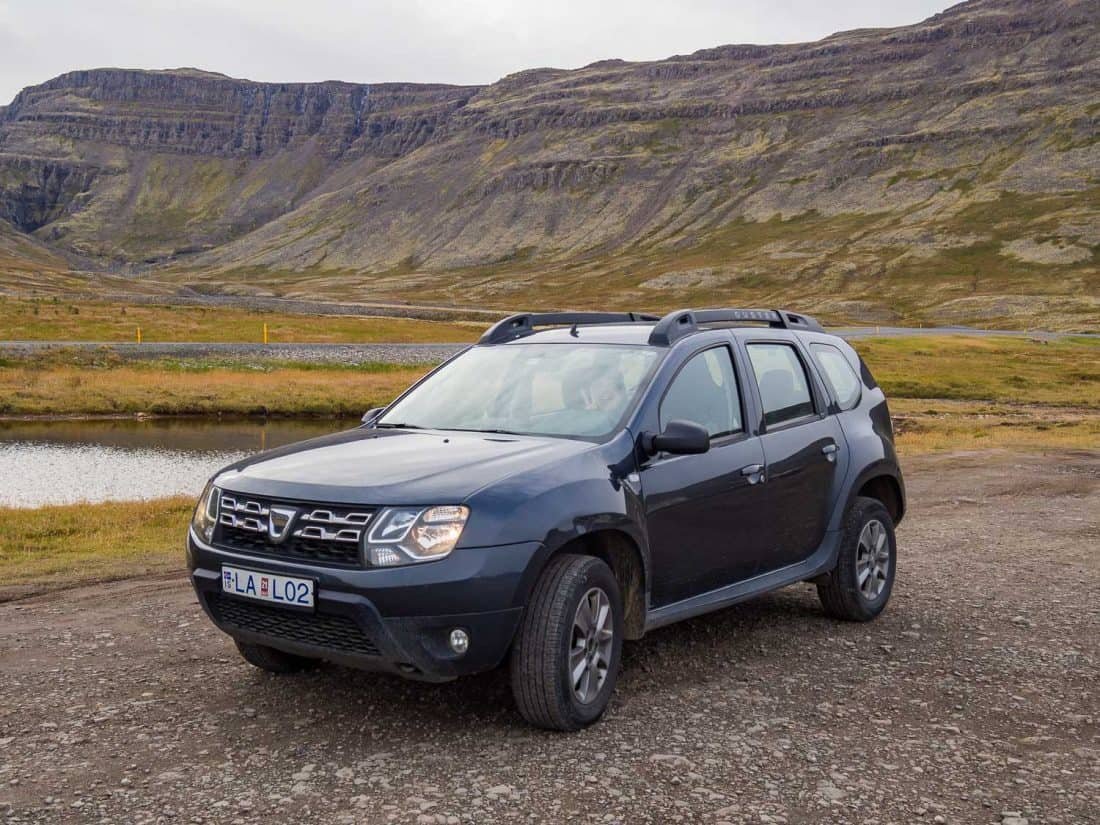
Public transport is very limited so the best way to tour Iceland is with your own vehicle.
If you can drive, the best way to see Iceland is to hire a car and do a self-drive trip around the island.
We use Booking.com Car Rentals to find the best deal. We rented a 4WD car, which we appreciated on bumpy gravel roads in the Westfjords, but it isn’t strictly necessary for most Iceland trips.
We found driving around Iceland easy—there aren’t many roads so it’s difficult to get lost and there’s good cell phone signal for using Google Maps.
Renting a campervan is also a popular way to tour Iceland in the summer. You must park in designated camping zones, though.
Take Tours from Reykjavik
Another way to explore Iceland is to base yourself in Reykjavik and take day tours. You can get a shuttle bus from the airport into the city (which is very walkable).
See Get Your Guide for a wide variety of trips such as the popular Golden Circle tour , whale watching on a luxury yacht , Jökulsárlón Glacier Lagoon , Sky Lagoon geothermal pool , and many more.
This is the best option if you can’t or don’t want to drive or are visiting in winter and aren’t confident driving on snowy roads. It’s also a good way to travel if you are visiting Iceland on your own.
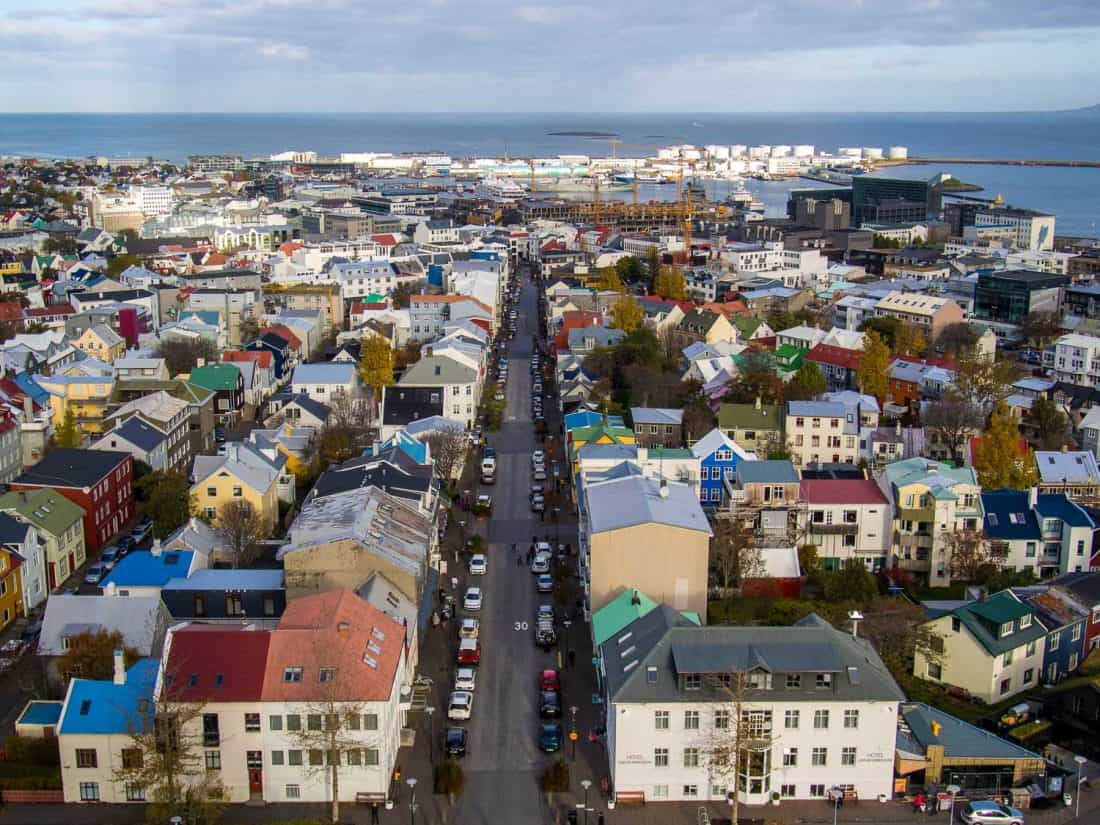
- Save up – Iceland is expensive and you’ll enjoy your vacation more if you aren’t worrying about every penny (on chilly days we really appreciated those hot chocolate and cake breaks). Find out how much our Iceland trip cost .
- Consider visiting in the off-season – Iceland gets very busy in the June to August summer months, so avoid the crowds by visiting at a different time of year.
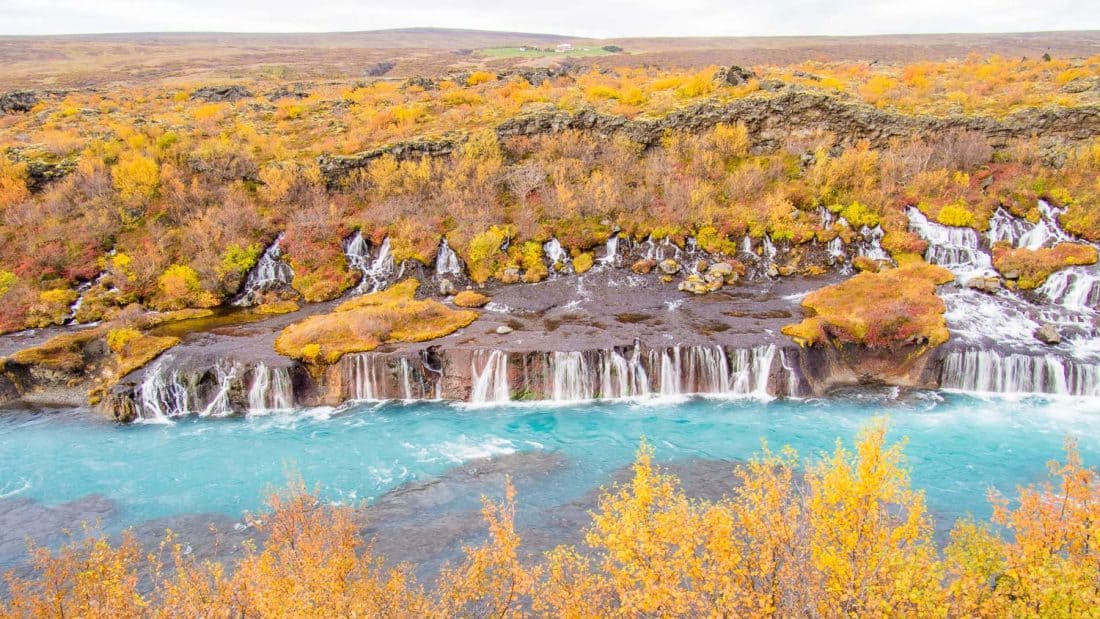
- Plan your itinerary – See our off the beaten track Iceland itinerary for trips of 7 to 12 days or follow the classic ring road around the country (at least 10 days is recommended). Roads in the north are often impassable in winter so stick to the south—here’s a 5 day Iceland winter itinerary .
- Book your accommodation – Especially if you are travelling in the summer high season, you need to book far in advance. You can use sites like Vrbo to find self-catering cabins and save on high restaurant costs. Search on Booking for hotels, guesthouses, and cottages.
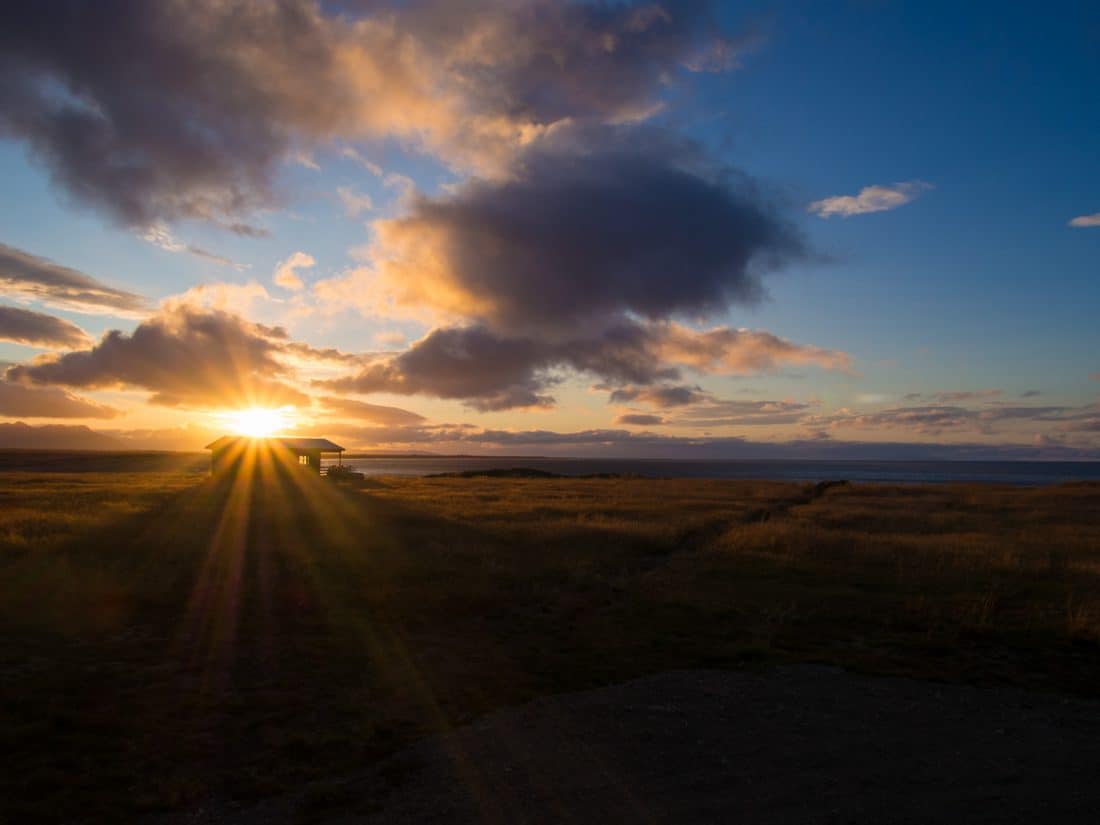
- Buy travel insurance – It’s essential in case anything goes wrong. We recommend SafetyWing (a budget option available worldwide), True Traveller (for UK and EU residents), and Heymondo (available worldwide).
- Book the Blue Lagoon – Iceland’s most popular attraction can book up weeks in advance. It’s near the airport so most people visit after their flight arrives or before they depart. Book the Blue Lagoon with transfers here . We skipped it because it’s expensive, crowded, and we found some gorgeous, isolated hot springs in the Westfjords instead. Next time, I want to visit the new Sky Lagoon in Reykjavik, which should also be booked well in advance.
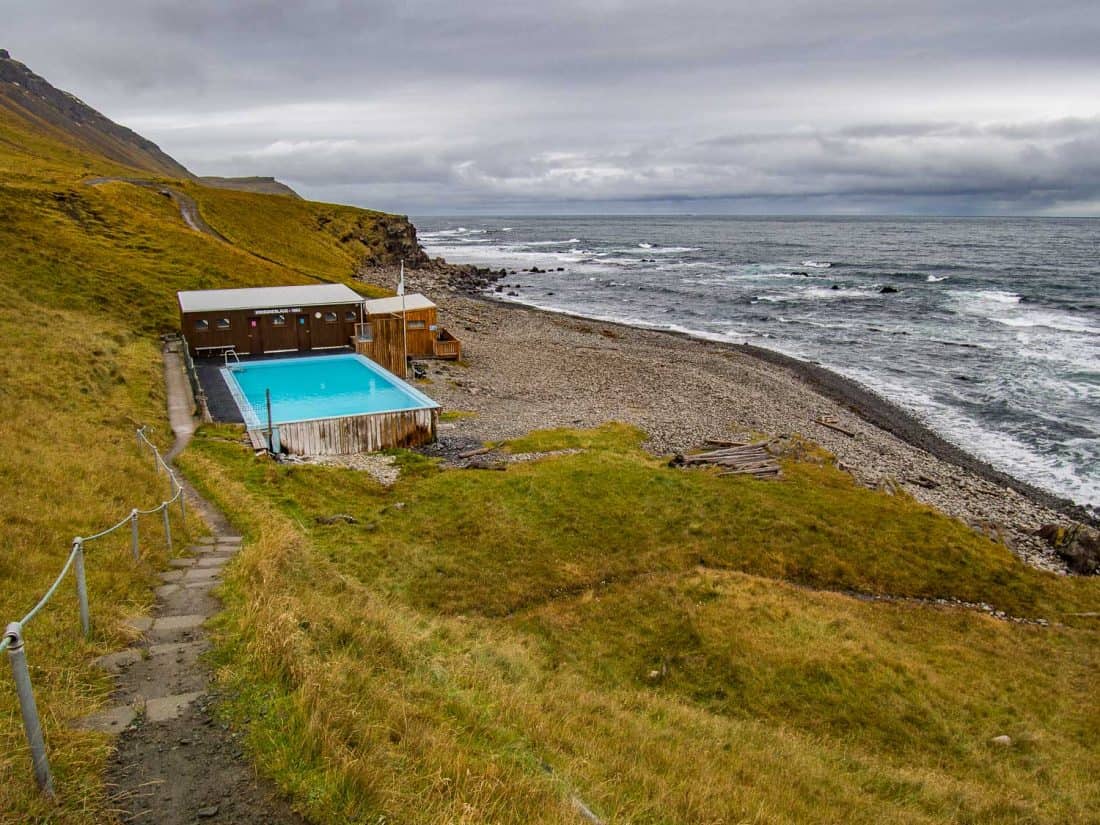
- Read The Little Book of Tourists in Iceland by Alda Sigmundsdottir – For tips by a local on travelling safely and responsibly and to understand the impact the tourism boom has had on the country. If you have time for more than one book, see my picks of the 10 best Iceland books to read before you visit including non-fiction and fiction.
- Pack the essentials – In every season you’ll need warm layers (merino wool is great), waterproofs, waterproof hiking shoes or boots, swimsuit and travel towel (for hot springs), tripod (for northern lights photography), and sunglasses (the sun is often low). See our Iceland packing list for what we took.
- Bring a chip and pin debit or credit card – You’ll need it for self-service petrol pumps.
- Don’t worry about cash – Cards are accepted everywhere. We only needed a small amount of cash on our Iceland trip (about 3000 Icelandic krona worth $21) for unattended hot springs and toilets.
- Read safetravel.is – For tips on staying safe on your Iceland vacation. You can also give them your travel itinerary so they’ll be able to respond if you don’t reach your planned destination.
- Check if an EITAS is required – From 2025, the EU will be introducing an online travel authorisation system for travellers from countries that are currently visa-free (including US, UK, and Canada). You’ll need to apply before your trip and pay a small fee, but full details haven’t been announced yet (and it keeps getting postponed).
- Take the Icelandic pledge
- Be flexible – The volatile weather can mean tours are cancelled or hikes or drives would be too dangerous.
- Check road.is before setting out each day – For details of road conditions and closures.
- Take a walk through a lava field – They are incredible! Our favourites were on the Snaefellness Peninsula .
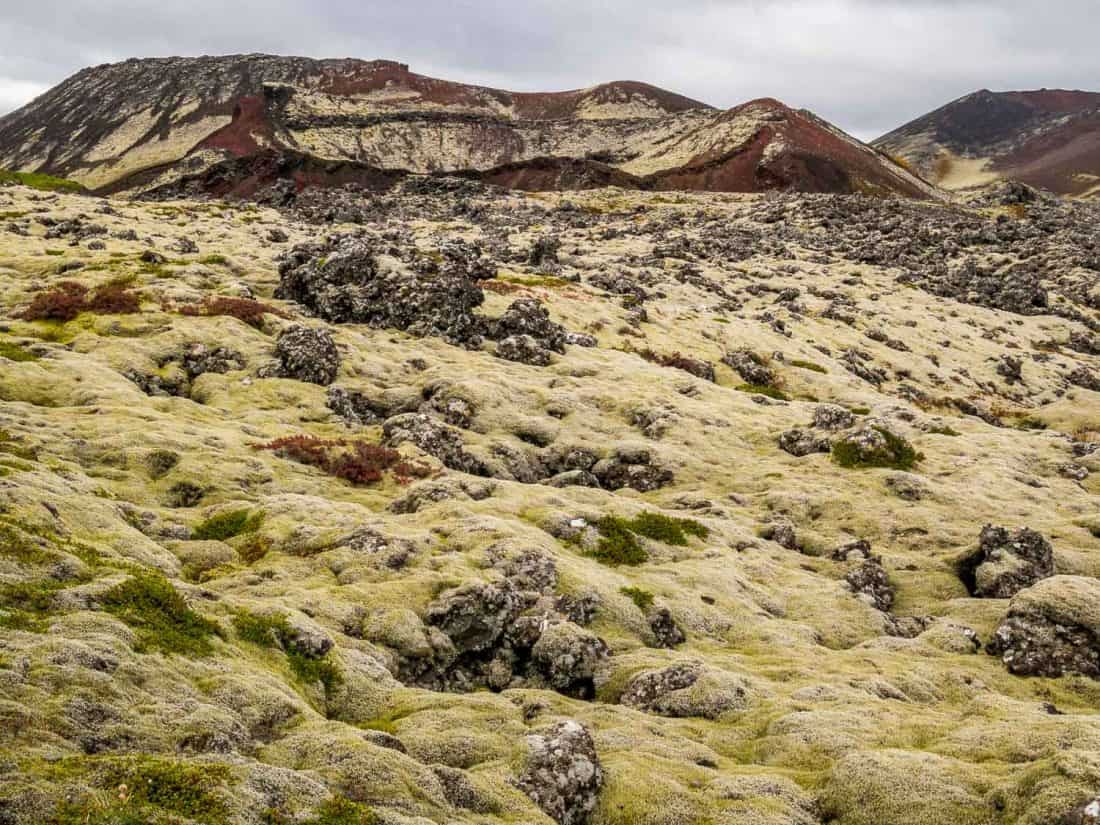
- Expect to see many waterfalls – They are everywhere! My favourite was Dynjandi in the Westfjords.
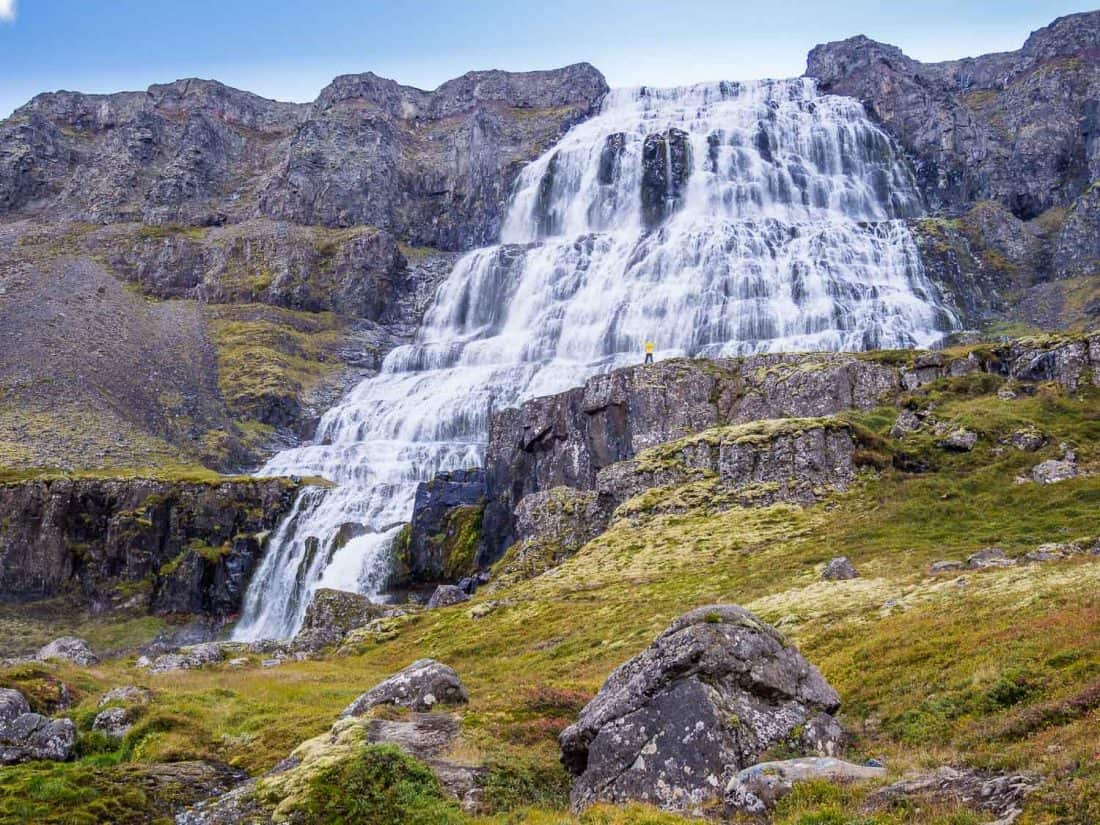
- Drink the tap water – It’s pure and delicious. Bring a lightweight, foldable water bottle like the Vapur with you.
- Look out for the northern lights from September to mid-April – We used the Aurora app and Vedur website to see our chances. We got lucky on a 30% chance day and saw them outside our Bjarkarholt cabin in the Westfjords. It’s best to stay in the countryside where there’s no light pollution. If you don’t have a car, you can take a northern lights tour from Reykjavik .
- Use a tripod and long exposure – To take photos of the northern lights. Most of mine were taken in manual mode at f2.8 with a 10 second shutter speed.
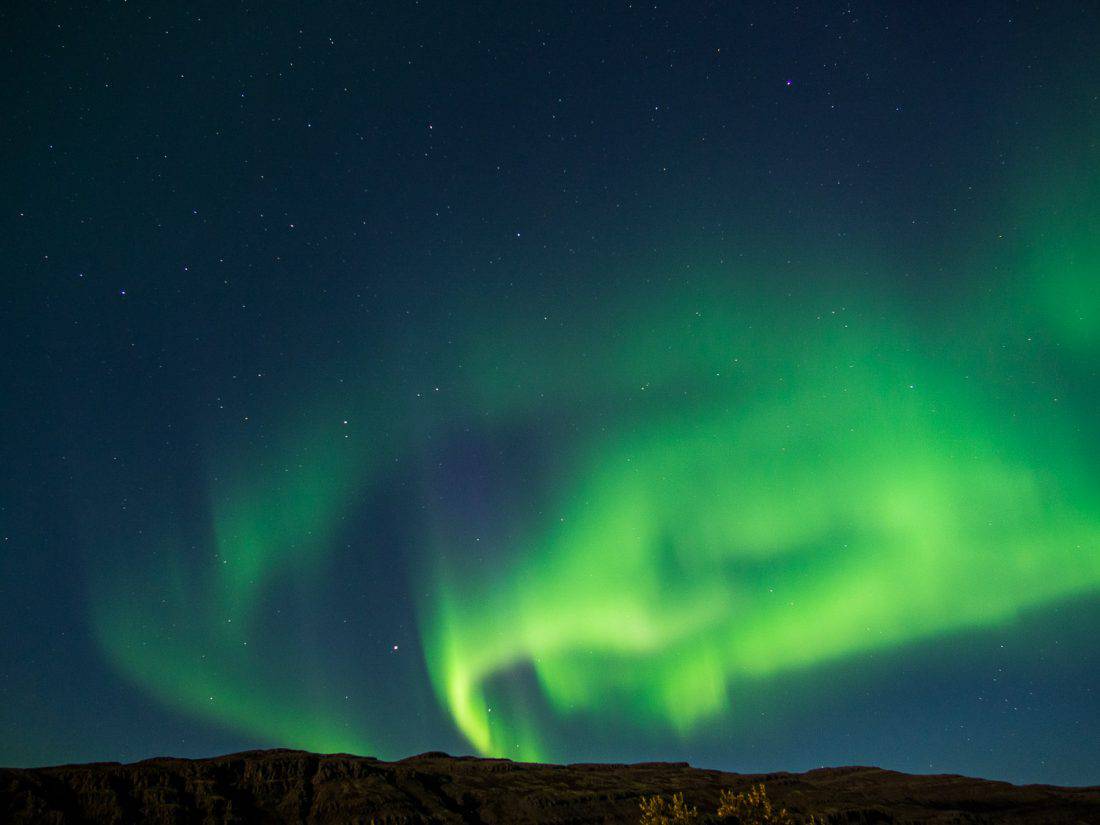
- Enjoy the midnight sun – If you visit Iceland in the summer when it’s light almost 24/7.
- Drive with your headlights on at all times .
- Be careful of sheep on the road – And always report it if you run one over (you won’t be fined).
- Fill up with petrol when you can – You might not come across a petrol pump for a while.
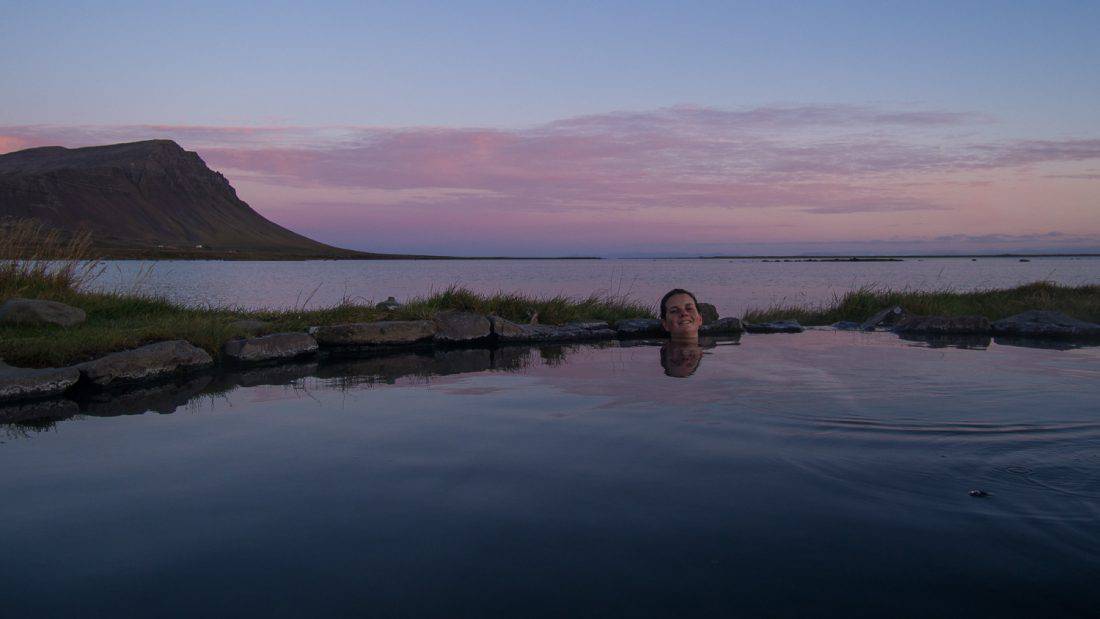
- Relax at geothermally heated swimming pools and hot pots – You’ll find them in even the smallest towns and it’s so lovely to swim in warm water when it’s cold outside.
- Shower naked thoroughly (without your swimsuit!) before entering a hot spring or pool – Public nudity isn’t a big deal in Iceland and you’ll draw far more attention to yourself if you don’t. They are very strict about this! There are separate male and female showers. You wear your swimsuit in the pool.
- Use the toilet whenever you find one (they are in short supply) – Be prepared to pay, usually around 200 ISK ($1.40). It’s worth keeping a small amount of cash for this.
- Admire the cute wooden churches everywhere .
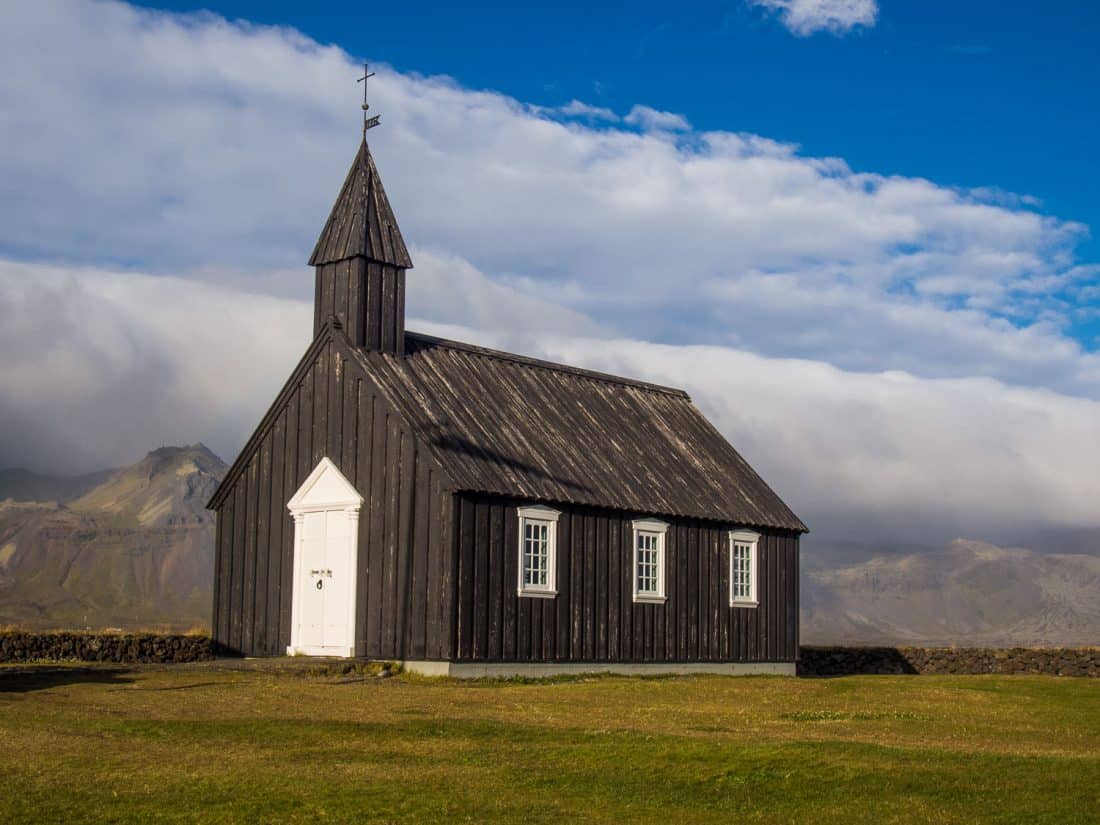
- Look out for seals – We saw them three times lazing on rocks by the sea.
- Ride an Icelandic horse and try its unique, smooth pace, the tölt.
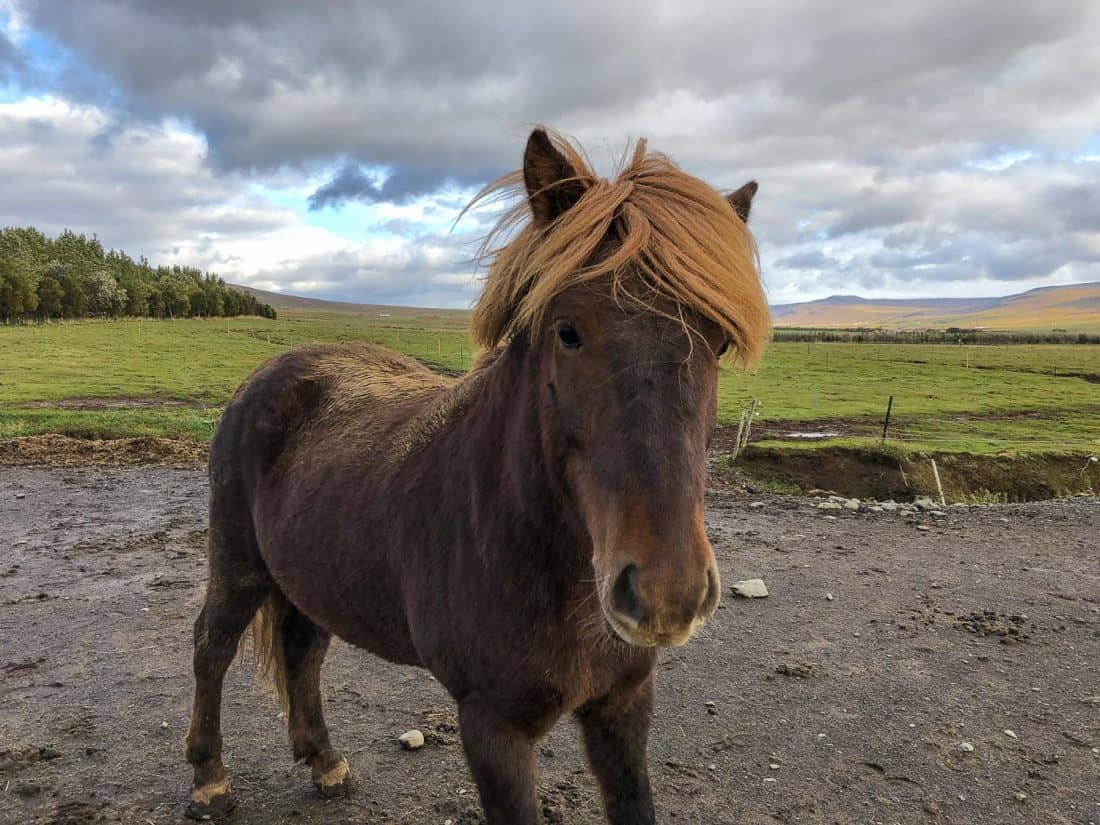
- Create a playlist of Icelandic music – I will forever associate Of Monsters and Men with epic drives through the mountains. Iceland has a huge number of talented bands—check out Björk, Sigur Rós, Solstafir, Ásgeir, Múm and many more.
- Read books by Icelandic authors – It’s a very literary country. Nobel Prize-winning Halldór Laxness is the most famous author, and reading the classic Icelandic Sagas from the 13th and 14th centuries will give you a greater understanding of the country as famous sites from the stories are everywhere. See my 10 favourite books about Iceland including fun, quirky, and mysterious novels.
- Take a walk on a beach – It’s unlikely to be sunbathing weather, but Iceland’s dramatic black, golden, and red beaches are perfect for wild walks.
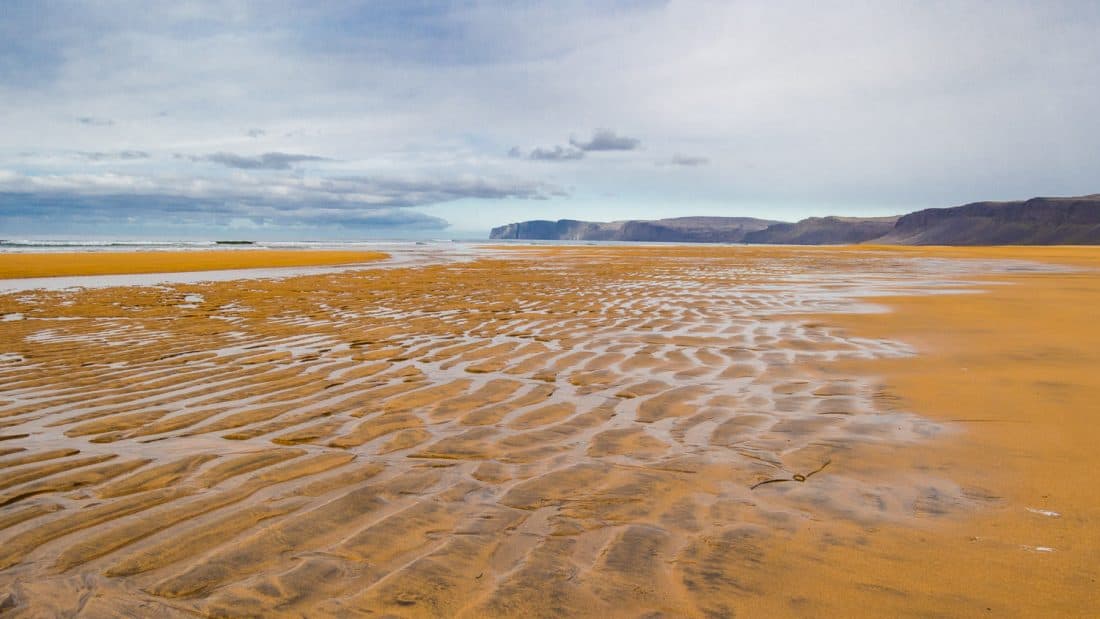
- Shop at Bonus supermarket – It’s the cheapest place to self-cater.
- Pack a picnic if you are road tripping – There often isn’t anywhere to stop for lunch, especially outside the summer when remote cafes close.
- Stock up on alcohol at Duty-Free on arrival at the airport if you want to drink – It’s much cheaper than in the state-run liquor stores (the only place you can buy booze).
- Enjoy delicious hot chocolate and cake (or a cinnamon bun) at one of Iceland’s excellent cosy cafes.
- Check Grapevine , a free English language newspaper – For what’s on in Reykjavik and enjoy its legendary nightlife and music scene on weekends.
- Call everyone by their first name – Titles aren’t used in Iceland. Instead of surnames, Icelanders use patronymics (or less commonly matronymics) made up of their father’s (or mother’s) name plus “son” (son) or “dóttir” (daughter). E.g. Björk Guðmundsdóttir is Gudmund’s daughter.
- Underestimate the weather – Icelandic weather changes fast and can be dangerous. Check the Vedur website or download their app for weather forecasts. Always be prepared with extra layers and waterproofs.
- Drive in a storm – Strong winds can blow cars off the road or volcanic rocks into your windscreen in scary sandstorms.
- Stop on the road – I understand, you will feel the urge to take a photo every few minutes, but always pull over into a parking area, even if the road seems empty.

- Speed – Stick to the speed limit of 50 km/h in urban areas, 80 km/h on rural gravel roads, and 90 km/h on rural asphalt roads.
- Feel the need to tip – It’s not rude to do so, but it’s not expected or customary.
- Wild camp – This is now banned and you must park your campervan or put up your tent in a designated campsite.
- Risk your life for a photo – Respect any barriers that have been put up.
- Get too close to cliff edges or the surf – Tourists have fallen off cliffs and been killed by rogue waves (especially at Reynisfjara beach).
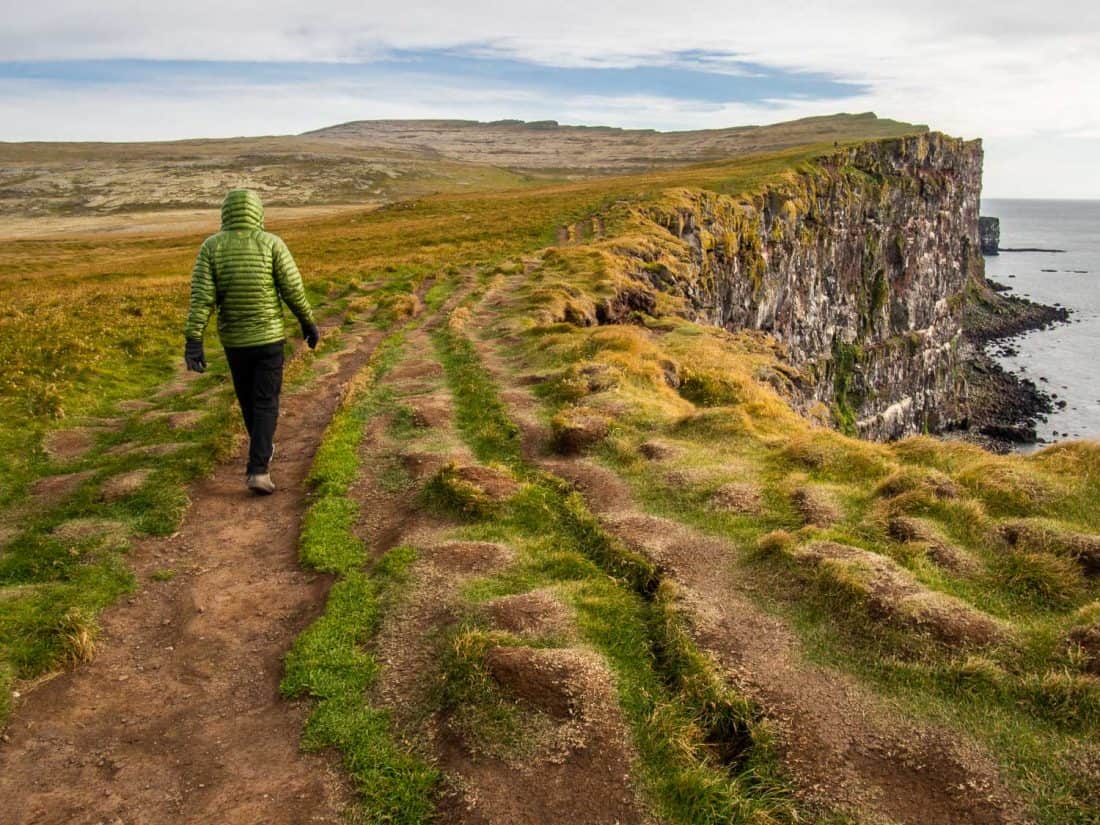
- Walk on the ice at Jökulsárlón glacier lagoon – The ice is not stable and the water is dangerously cold.
- Go onto a glacier without an accredited guide – There are hidden crevasses that you could fall into.
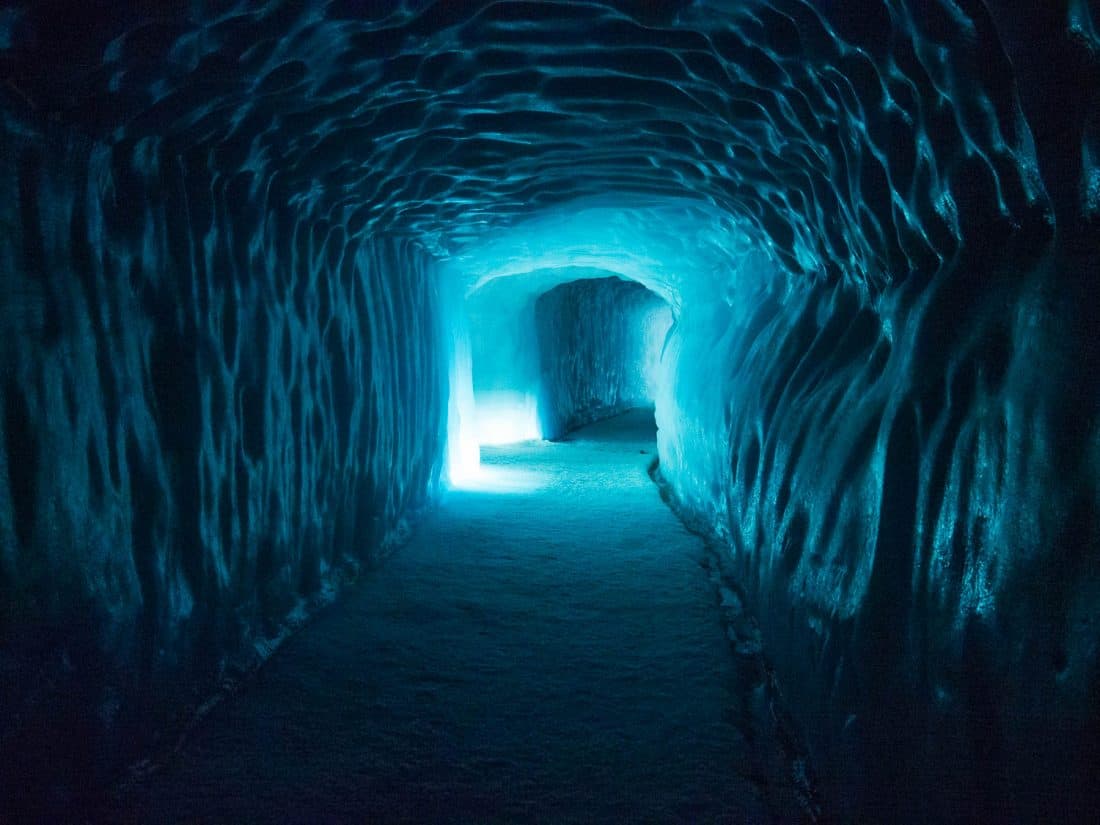
- Drive on F roads without a 4WD vehicle
- Drive off-road in any vehicle – It damages the landscape and you’ll receive a high fine.
- Worry about staying connected – Even the remote cabins we stayed in had good WiFi and we had 3G or 4G signal almost everywhere. If you don’t have an affordable data plan for Iceland, buy an Airalo e-SIM and get online as soon as you arrive.
- Feed horses – Yes, they are cute, but it is bad for their health. It’s best to visit a horse farm like Sturlureykir , where can pay a small fee to interact with them (or go on a ride).
- Take rocks or pebbles as souvenirs
- Litter – Have some respect for this beautiful place.
- Ask Icelanders if they believe in elves (aka hidden people) – The majority do not, although they understand that many of their ancestors did and they are part of their heritage.
- Rush – Iceland’s a stunning country, take your time and enjoy it.
I hope this post has answered any concerns about how to plan a trip to Iceland. Let me know if you have any questions in the comments below or share your own Iceland travel tips.
- Iceland Itinerary: Off The Beaten Path on a Snæfellsnes and Westfjords Road Trip
- 14 Places Not to Miss on the Snaefellsnes Peninsula
- How Much Does an Iceland Trip Cost? Our Road Trip Budget
- 10 Best Books About Iceland to Read Before You Visit
- The Ultimate Iceland Packing List for Men and Women
- Visiting Iceland in September: What to Expect and Things to Do
If you enjoyed this post, pin it!
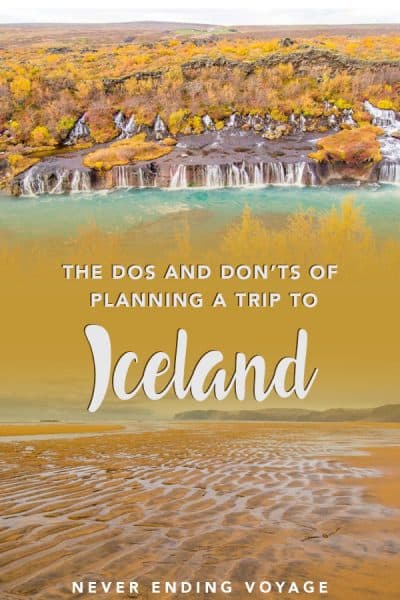
35 Comments
Hi, great blog. I’m thinking of taking my 3 teenagers to Iceland. I don’t want to be stuck in the hustle of a “tour group” experience. Is it possible to do it on my own with just day trips? How is late June? Will we be able to see glaciers and ice caves or are those only in the winter? Thanks!
Reply ↓
Yes, you could do it on your own with day trips if you hire a car and don’t mind a fair amount of driving.
In this case, you might also want to consider a night or two outside Reykjavik though–the Snafellsness peninsula is only a few hours away and is worth the extra time.
Late June is busy and expensive (book asap), but the weather is at its best (but still be prepared for cold) and you’ll have up to 21 hours of daylight.
Langjokull Ice Cave is on a glacier and can be visited year round as it’s man made. You have to visit on a tour from Husafell or Reykjavik.
Enjoy Iceland!
I loved your article. I would like to ask: is it possible to visit Iceland on day tours from Reykjavik? Or is it better to take a 6 days tour of the country? Is it possible to rent a bus from Reykjavik for a group of people?
You wouldn’t be able to see the whole island, but I wouldn’t recommend trying to do that in 6 days anyway. You can certainly see a lot by taking day tours from Reykjavik. Many people who don’t want to drive do this.
I’m not sure about renting a bus. But if you have a really big group maybe contact an Iceland tour company for advice. Organising a private tour might make more sense than joining a group tour.
Credit card use is very pervasive.
However at campsites where laundry and showers are coin-operated, how does one get the coins needed?
We haven’t stayed at campsites so I’m not sure, but we withdrew a small amount of cash from an ATM at the airport on arrival.
Very good article, we just returned from our two weeks in Iceland. and the only thing I would add it’s the wind, not the temperature that is hard to handle. Plus all the Icelandic people we delta with all spoke perfect English, a couple of times I had to ask them where they were from, only to be shocked that they were from Iceland. Enjoy your trip, we did, oh and make sure you get full car insurance!
It’s really helpful for my Christmas Iceland Trip! I hope I can experience a lot as you said!
Thank you very much, Erin, for this super informative blog. I’m planning to visit Iceland sometime in Feb/Mar 2023. Will visit the places of interests you shared. We come from Singapore – hot climate. Might be a struggle to keep ourselves warm in Iceland. :-(
Great information, You answered all my questions
Planning a trip to Iceland now and this has been a super helpful place to start! Thanks so much for a really awesome guide. Reading your 5-day Winter itinerary next as we’re going February 2022 so that could be perfect for us!
Thank you. Very informative, organized, and superb photography.
Thanks, Jay!
After spending 18 months sequestered and being fully vaccinated, I did an 8-day tour of Iceland and although it was challenging getting there from Western Canada, once I got there I loved it! I can verify all the recommended do’s & don’ts are true and worth your while following. The landscape is like no other in the world and it took my breath away despite not having the best weather. The people very friendly & welcoming, the food amazingly delicious, hotels & accommodations modern, simple & comfortable. Our tour and our guide was amazingly knowledgeable & experieced who kept us entertained with great facts, history, geology, birding knowledge & some tall tales. Loved it and would visit again!
Thanks for the trip report, Aida! It sounds like an amazing trip! You’re making me really want to go back.
Are the travel restrictions for Vaccinated people lifted for Iceland? FYI: I’m an american
Yes, you can travel to Iceland now.
I can’t wait to move to Iceland
Hi, I’m an American, do you think the travel restrictions will be lifted by the summer?
Thank you, Jessica
No one really knows but it will depend if the US can get the virus under control by then. It looks like from 1 May, Iceland hopes to open up a little more but that will be based on each country’s situation. Edit: All restrictions have been lifted: https://www.government.is/government/covid-19/covid-19-news/2022/02/23/COVID-19-Lifting-of-all-domestic-restrictions-and-restrictions-at-the-border/
Personally I wouldn’t book anything unless you have free cancellation.
Hi Erin. Thanks for this guide. My wife and I are planning a trip there in September or October. We are US Citizens, so we hope it can happen. We have travel certificates which expire at the end of the year, so we are sort of up against a wall. We have to check to see what the cancellation policy is. Fingers crossed that it can happen.
Good luck with it! It’s so hard to say what will happen with travel this year.
Thank you very much for this guide! I’ve been looking at pre-paid packages and trying to decide whether to do one of those or create my own. Do you have any advice for a solo female traveler? It’s my first solo trip and I am excited but nervous.
I don’t have any experience of solo travel in Iceland but it’s a very safe country and we know plenty of women who loved it. Probably the easiest way would be to stay in Reykjavik and take day tours. If you are a confident drive you could also rent a car and head off by yourself. It’s pretty easy to arrange your own trip. Enjoy!
we are planning a trip this summer. thanks for all the information!
Enjoy, Elana!
The pics are literally breathtaking. Can’t wait to see it all with my own eyes next summer. Thank you for the tips, really valuable for me planning my first encounter with this beauty.
It is one of the most stunning places we’ve ever visited. Have an amazing trip!
This is a great resource! Thanks so much for taking the time to put it together. I particularly appreciate the tips regarding the need for a credit/debit card with a chip and pin for buying gas/petrol, the custom for gratuities, the Icelandic music playlist (perfect for the road trip!) and reading suggestions, and where to buy alcohol and groceries. And my favorite tip is to enjoy the hot chocolate and cake…don’t need to tell me twice!
I’m so glad you found it useful Heather!
Good list! I have two comments:
– Love the thing about tipping! During my trip, I actually asked one waitress what would be an appropriate tip and she said: “We have normal wages here, we don’t need tips”. ??
– I tried to read Independent People by Laxness while in Iceland but I had to give up. There’s only so much interest I can muster about the sheep… ?
Ha! I haven’t read Independent People yet as I heard The Fish Can Sing is a more accessible, lighthearted introduction to Laxness and I did enjoy it.
Erin what a rocking list. All noted. Iceland reminds me somewhat of New Zealand. Insane beauty, kinda expensive and yep, gotta have you head on a swivel sometimes. Especially driving.
Leave a Reply Cancel reply
Required fields are marked *. Your email address will not be published. By clicking the Submit button, you give consent for us to store your information for the purposes of displaying your comment and you accept the terms of our Privacy Policy .
This site uses Akismet to reduce spam. Learn how your comment data is processed .

25 Absolute-Best Places to Visit in Iceland (+Things to Do & Tips)
By Author Jurga
Posted on Last updated: January 10, 2024
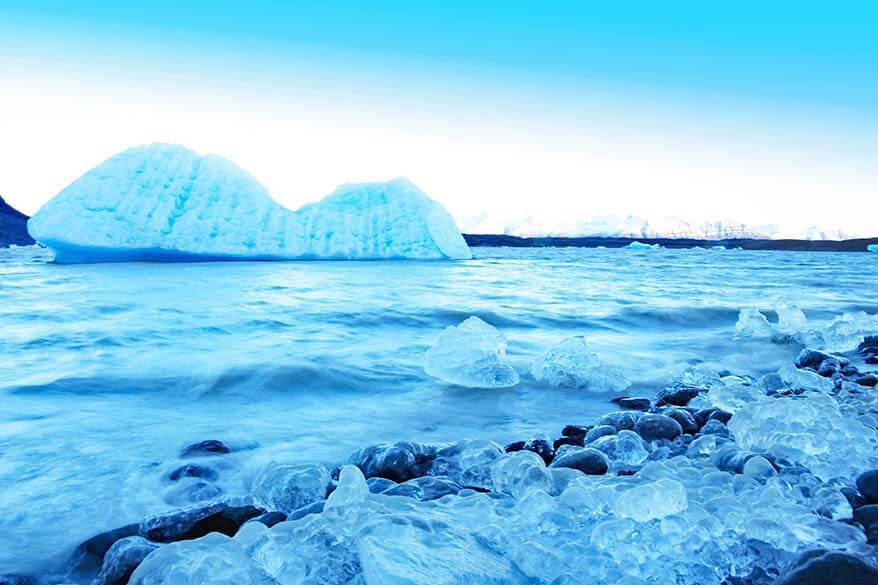
There is so much written about Iceland that it can get really overwhelming to figure out where exactly to go and what are the best places to visit in Iceland . In this article, we cover some of the most popular areas but also some lesser-known places that I think are worth visiting in Iceland the most. Find out!
Good to know: This article with top things to do in Iceland was initially published after our second trip to Iceland. In the meantime, we have visited Iceland 6 times, and so it was time to update it. I’ve now been to Iceland in all seasons and traveled in pretty much all regions. While there is still so much more to be explored, I feel that I can now give you a much better idea of the best areas to visit and the very best places to see in Iceland.
While the list now contains more than the initial top 10 places, it does not list every single attraction or landmark separately. We also didn’t include all the details about everything that you can do in Iceland.
The aim of this article is to give you an overview of the most beautiful areas, the best things to do, and the nicest places in Iceland that are worth visiting the most . So that you have a good idea of where to travel in Iceland without getting too overwhelmed with all the details.
BEST OF ICELAND IN A NUTSHELL: * MUST-SEE: South Coast, Jokulsarlon Glacier Lagoon, Golden Circle, Reykjavik, Snaefellsnes Peninsula. * MUST DO: Blue Lagoon and/or Sky Lagoon (book well ahead!!!). * FUN TO DO: Glacier hiking , whale watching , Silfra snorkeling . * WINTER: Ice caves and Northern lights . * MUST TRY: Icelandic hot dog ( pylsur ), Skyr, lamb, fish stew ( plokkfiskur ). * WHERE TO STAY: Where to stay in Iceland – Where to stay in Reykjavik – Where to stay in Snaefellsnes Peninsula .
TIP: If you are looking for more information about each area mentioned in our guide below, please make sure to read the more detailed articles that we link to from this post. If you are looking for ideas on how to plan your trip and day-by-day itinerary suggestions, please check our guides below:
- 4-day South Coast itinerary .
- 7-day winter itinerary .
- One-week Iceland itinerary for summer months .
- Iceland Ring Road itinerary in 10 days .
- Iceland itineraries for any duration (1-14 Days) .
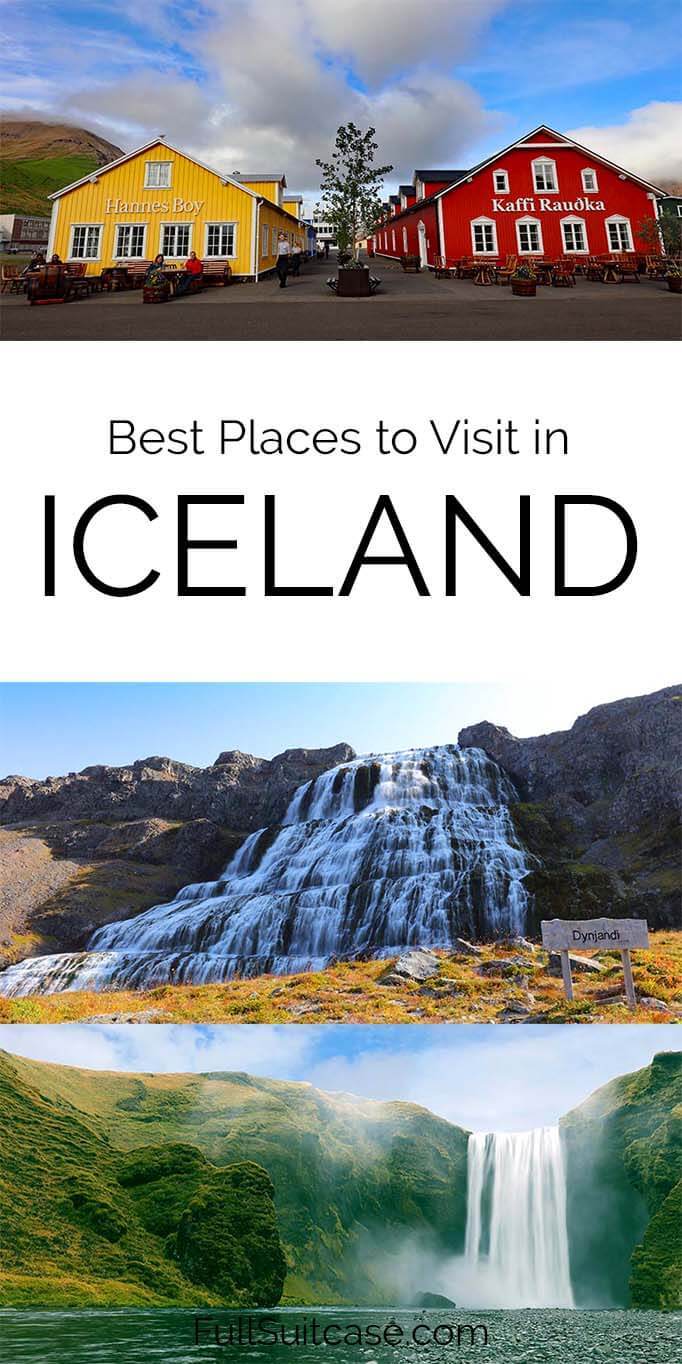
Without further ado, here is a list of the best places to visit in Iceland :
1. Jökulsárlón Glacier Lagoon
Jökulsárlón Glacier Lagoon is not coincidentally the first one mentioned on this list. If there is one place that you really don’t want to miss in Iceland, then it’s Jokulsarlon.
The glacier lagoon is just amazing and the scenery changes all the time. Icebergs move all the time and no two visits are ever the same. In addition to the lagoon itself, you should also visit the so-called Diamond Beach , just across the road. When the weather conditions are favorable, you can see the most extraordinary ice formations scattered all over the beach. Shining in the sunlight like huge diamonds…
For me, this beach is even more special than the lagoon itself. Especially on a sunny winter day or at sunset. Magical!
TIP: You may want to check out the nearby Fjalljökull glacial lagoon as well. It’s smaller and less touristic than Jökulsárlón, and it’s very nice too. Nearby Stokksnes headland is also well worth a visit.
How to visit: You can see the Jokulsarlon glacier lagoon from ashore, or take a boat tour (May-Oct) between the icebergs. You can choose between an amphibian boat or a zodiac tour.
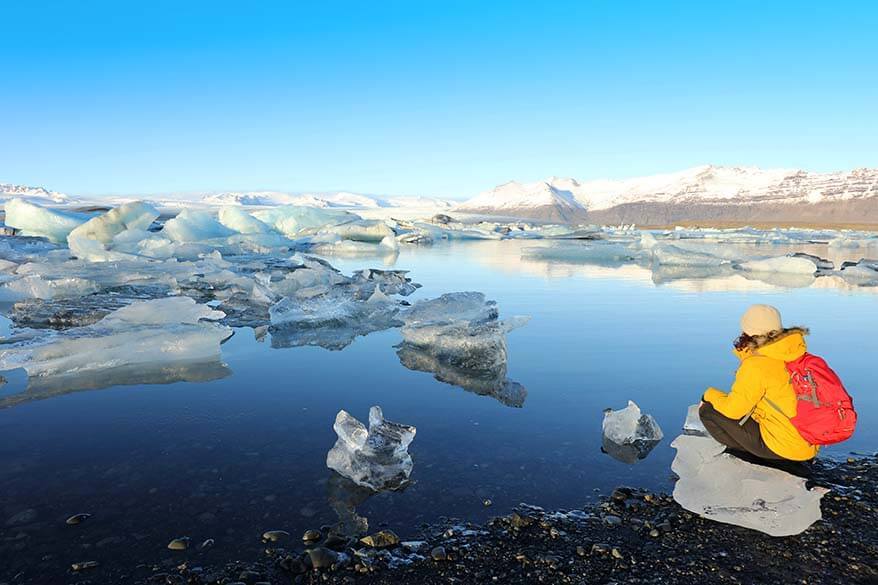
2. South Coast – Vík Beaches
Iceland’s South Coast is one of the most visited areas in the country and rightly so. This area is simply stunning!
The picturesque village of Vik and the nearby Reynisfjara beach and the impressive coastline are well worth it in any season. Vik black sand beach was once ranked as one of the ten most beautiful non-tropical beaches in the world.
TIP: Don’t miss the nearby Dyrhólaey Lighthouse and the stunning rock formations visible from there.
How to visit: There are several parking areas along the coast near Vik. You’ll need a car to get here. Alternatively, you can visit with a South Coast tour from Reykjavik .
Important! Be VERY careful on this beach – the waves here are unpredictable and it’s very dangerous to walk close to the water. Even if the water looks calm, stay as far away as you can. Under no circumstances go into the sea at Reynisfjara beach!
LEARN MORE : Best Stops & Attractions of Iceland’s South Coast
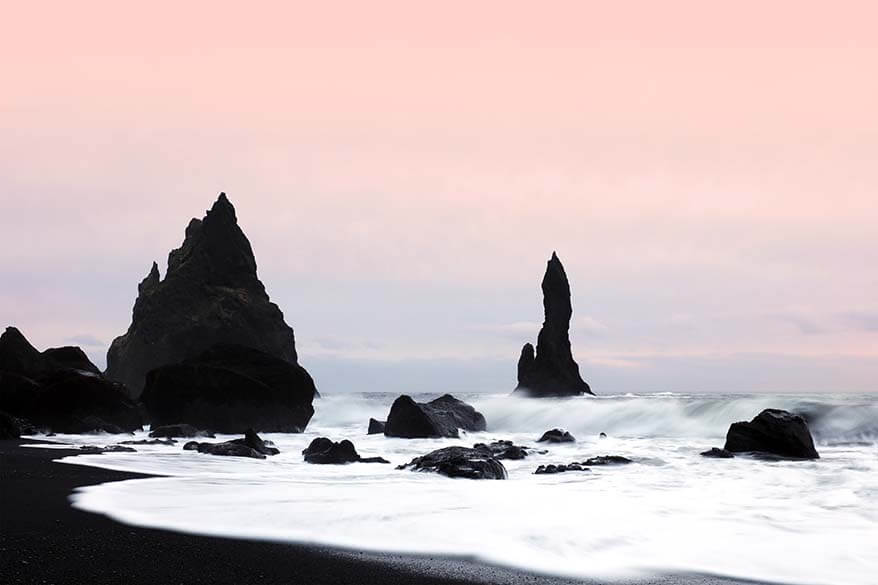
3. Golden Circle
By far the most popular place to visit in Iceland is the so-called Golden Circle . The Golden Circle, formerly also known as the Golden Triangle, refers to three main locations – Thingvellir National Park , Gullfoss waterfall , and Geysir area with a very active Strokkur geyser.
Thingvellir National Park is best known for its continental divide, the Mid Atlantic Ridge. It’s a place where you can see the opening between the tectonic plates of Europe and North America. It’s a beautiful area to explore on foot. Don’t miss the somewhat hidden Öxarárfoss waterfall.
Gullfoss , or The Golden Waterfall, is one of the most beautiful waterfalls in Iceland. Must see!
You just cannot go to Iceland and not see a geyser erupt! Geysir area is a geothermal area where the mother of all geysers – Geysir – is located. While Geysir hasn’t been active in a long time, there is a smaller geyser called Strokkur that erupts at regular intervals every 5-10 minutes. So you never have to wait long in order to see it.
TIP: While extremely touristy, the Golden Circle is popular for a reason. If you can, visit early in the morning or late in the evening in order to avoid the biggest crowds.
How to visit: You’ll need a car to explore the Golden Circle. Alternatively, there are lots of organized Golden Circle tours from Reykjavik .
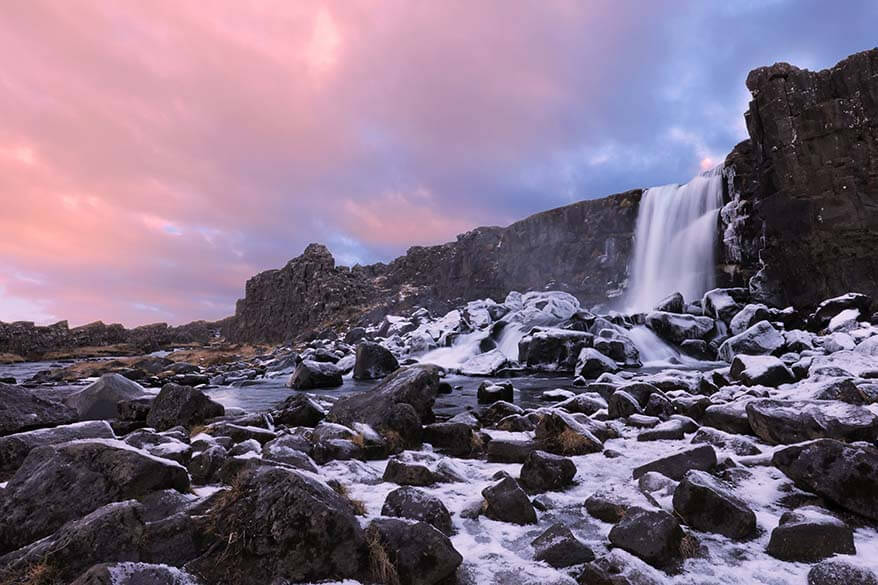
4. Snæfellsnes Peninsula
Somewhat lesser visited than the previously mentioned places, Snæfellsnes Peninsula is another region that you really should see in Iceland. This is one of the places that you can quite easily in all seasons.
Best known for its picturesque Kirkjufell mountain and Kirkjufellsfoss waterfall, this area has so much more to offer than that! Volcanic landscapes, rugged coastlines, stunning rock formations, countless waterfalls, beautiful beaches, colorful lighthouses, quaint little villages, and tiny picturesque churches… These are just a few of the reasons to visit Snaefellsnes.
TIP: If you are visiting in summer and have the time, I recommend at least 2 days for this area.
How to visit: You’ll need a car to get around. Alternatively, join one of the guided Snaefellsnes day tours from Reykjavik .
LEARN MORE: Complete Guide to Snaefellsnes Best Things to Do in Snaefellsnes Peninsula
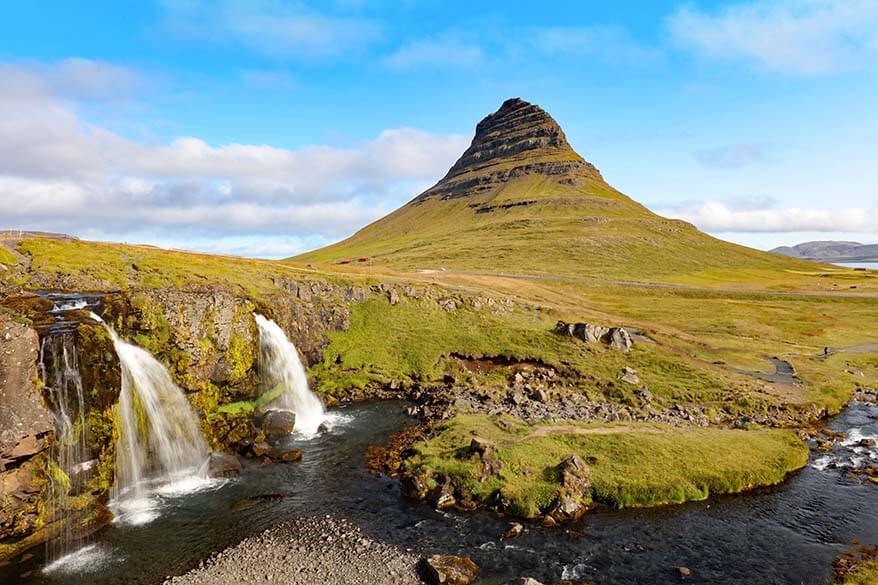
5. Blue Lagoon & Sky Lagoon
The Blue Lagoon is Iceland’s most popular tourist attraction and is considered the no. 1 must-visit place in Iceland. It’s a huge outdoor geothermal pool with a distinctive blue or milky blue color and nice warm temperatures.
Good to know: Blue Lagoon is extremely popular so it’s essential to reserve your tickets in advance. You can book tickets here .
How to visit: Blue Lagoon is located close to Reykjavik KEF airport and you can either get there by car or by taking a Blue Lagoon bus transfer from Reykjavik . It takes about an hour to get there from the city and you will probably spend at least 2 hours in the water, so count at least 4 hours for your visit.
TIP: You can also visit the Blue Lagoon on your way to or from the airport. Bus transfers are available for Keflavik airport as well (see the link above).
Alternative: Instead of Blue Lagoon (or in addition to), you may want to visit the amazing geothermal pool Sky Lagoon . It’s been opened a few years ago and has quickly become a favorite among tourists and locals alike.
Sky Lagoon is located in Reykjavik, much closer to town, and offers amazing sea views and a unique Spa ritual. You can reserve your tickets here (also here, you really have to book in advance!).
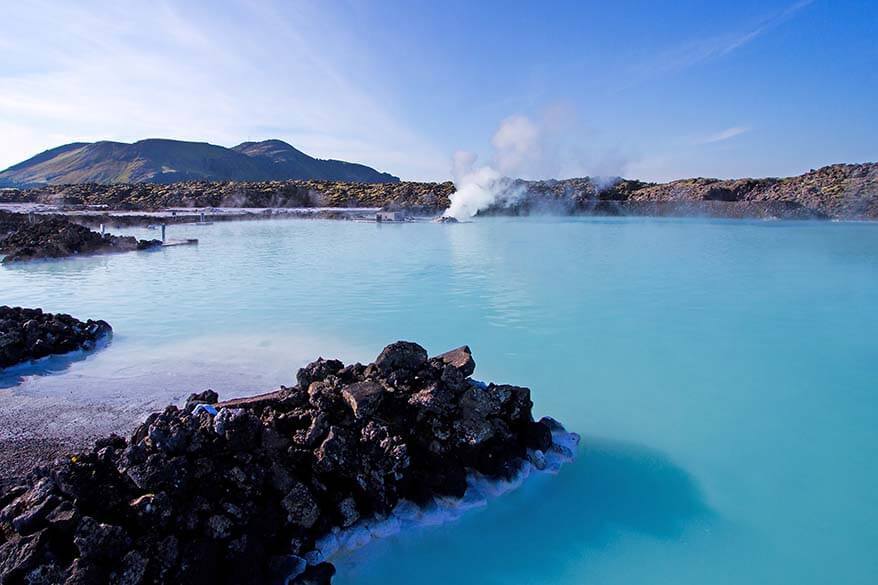
6. Skógafoss & Seljalandsfoss Waterfalls
After Gullfoss, these are the most visited waterfalls in Iceland. Located along the South Coast, both – Skógafoss & Seljalandsfoss – are among the must-see landmarks in Iceland.
Skogafoss is a really majestic waterfall. It’s so photogenic that if you ever see pictures of a waterfall in Iceland, it’s most likely to be Skogafoss. You can also climb the stairs all the way to the top of the waterfall for some great views of the area.
Seljalandsfoss is the only Icelandic waterfall that I know of where you can walk behind the falling water. In the winter, the waterfall is partially frozen and the whole area around it looks like an ice skating rink, so the walk behind it is usually closed. It’s still nice to see and worth a short stop. But it’s most magical when you can walk behind this waterfall and experience how special this place is. Prepare to get wet!
TIP: Don’t miss the hidden Gljúfrabúi waterfall located inside the gorge just a short walk from Seljalandsfoss. It takes just a few minutes to visit – follow the path to the left from Seljalandsfoss and you’ll see informational panels on the right side.
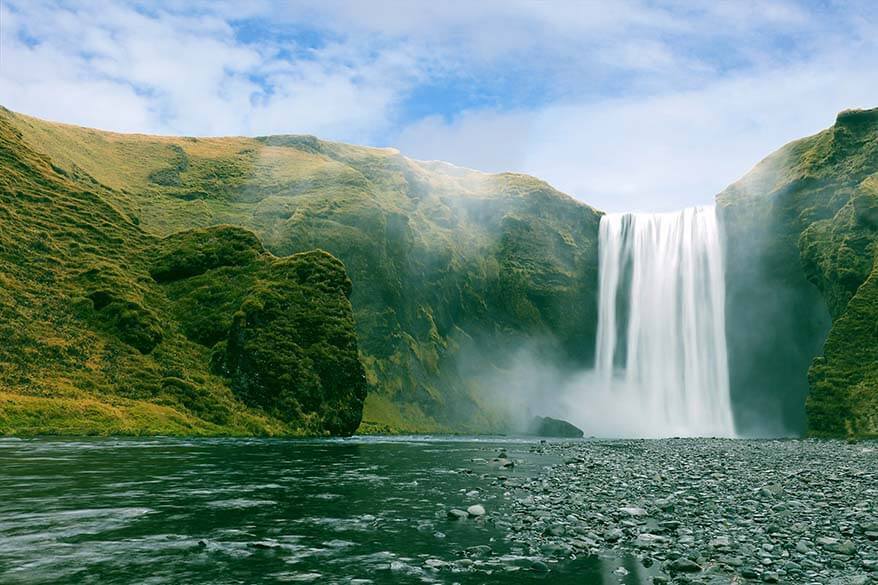
Myvatn Lake in the North of Iceland is another place you really should visit in Iceland. This area is very diverse and has a lot to offer, especially in the warmer season.
Here are some of the best things to do at Myvatn: a walk to the caldera of Krafla volcano and the lava fields, short walk to the pseudocraters at Myvatn Lake , Leirhnjukur hiking trail, Dimmuborgir area of remarkable lava formations and the 45-minute walk to Kirkjan lava tube structure.
Námaskarð geothermal area is also a must-see in North Iceland! It’s an easily reachable compact area with bubbling mud pools and colorful steaming geothermal features. You have to prepare for the smell though.
Myvatn Nature Baths are also not to be missed. This geothermal pool offers beautiful views, and it’s less busy and cheaper than the Blue Lagoon. However, it’s changed a lot in recent years, and so if you travel here in summer, expect it to be very busy. You may want to book your tickets in advance here too!
How to visit: You’ll need a car to get to Myvatn. If you are stopping in Akureyri on a cruise ship, you can visit Myvatn with this popular shore excursion .
LEARN MORE: Things to Do in Myvatn
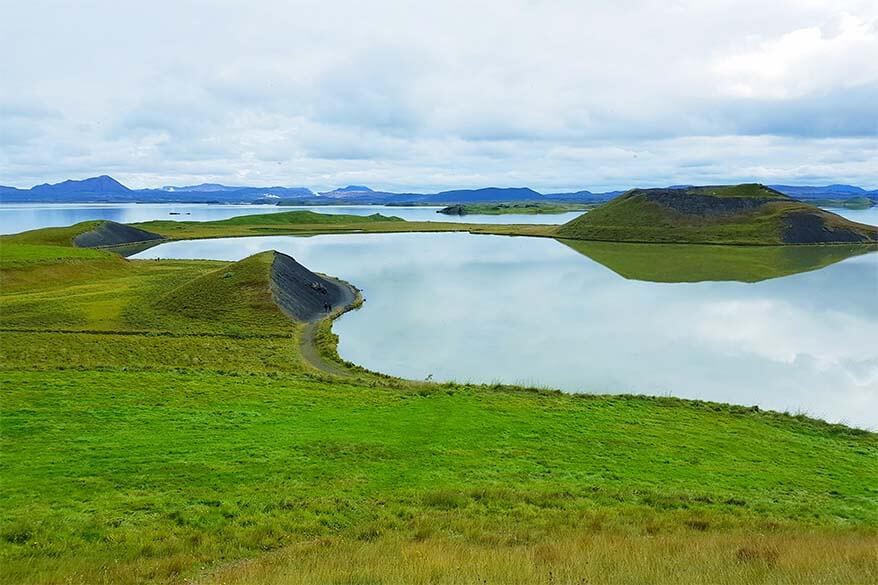
8. Húsavík
Known as the best place to see whales in Iceland , Húsavík definitely deserves a mention as one of the best places to visit in Iceland as well. If you are visiting Northern Iceland in summer, whale watching in Husavik is a must.
The town is very picturesque too and you can visit the Húsavík Whale Museum .
GeoSea – geothermal sea baths are also very popular and boast stunning sea views. It’s one of the most scenic pools in Iceland.
TIP: There are many whale watching tours that run from Husavik , but they’re extremely popular and have to be booked in advance. One of the best options I always hear people mention is this tour with Gentle Giants .
How to visit: You’ll need a car to get to Husavik.
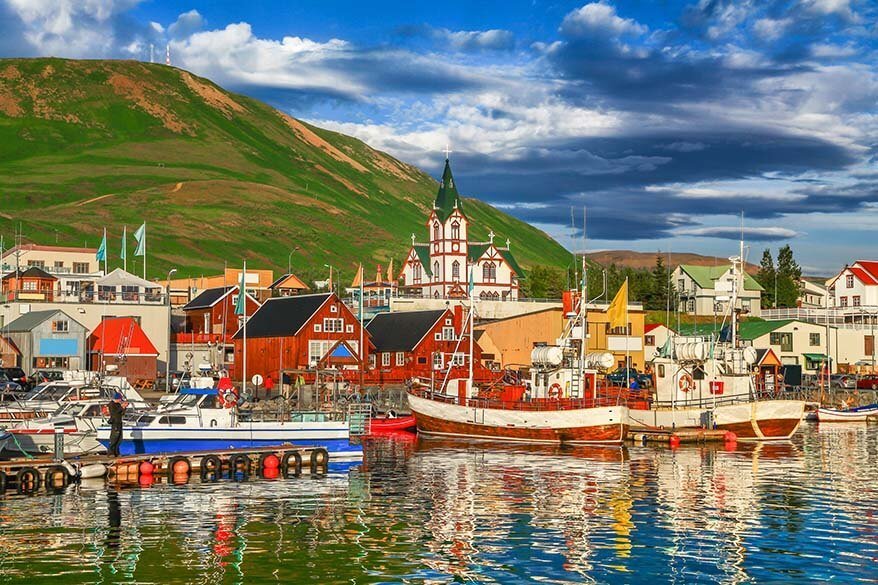
9. Raufarhólshellir Lava Tunnel
Located just a short drive from Reykjavik, Raufarhólshellir Lava Tunnel is one of the most unique places to visit in Iceland.
This underground lava tube was created by a volcanic eruption over 5,000 years ago and is one of the longest lava tubes in Iceland. It’s definitely the easiest one to access and you can visit here all year round.
Good to know: The lava tunnel can only be visited with a guided tour. Tours take about 1 hour and there are several time slots during the day, depending on the season.
How to visit: If you have a car, you can easily drive here on your own (just don’t forget to book a time slot for your visit so that you are sure to have a spot). Alternatively, this is a very nice 3-hour excursion from Reykjavik, and there are several companies organizing tours here.
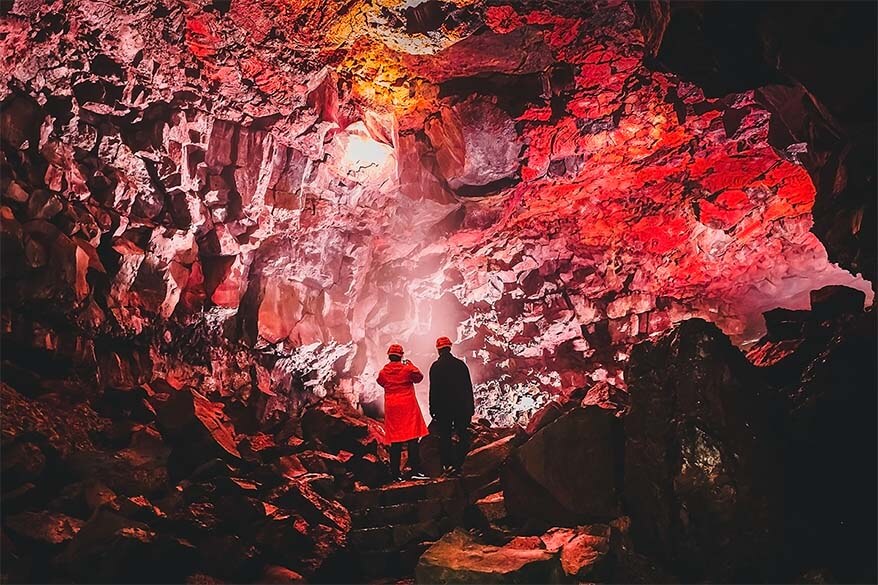
10. Westfjords Region
If you want to get a bit off the beaten path in Iceland and discover some of its most impressive, vast landscapes, then you really should consider visiting the Westfjords region .
It’s quite far away from everything, however, distances are immense, and most roads are gravel. So it’s best to travel here in summer and come well prepared.
Some of the most beautiful places not to be missed in the Westfjords are Dynjandi waterfall (most beautiful waterfall in Iceland), Látrabjarg bird cliffs (best place to see puffins in summer), Rauðisandur beach (endless red sand beach; unique in Iceland), and Ísafjörður town.
You’ll need at least 2-3 days to see the whole region and it will be rushed, but you can also see the main attractions in 1-2 days.
How to visit: You’ll need a 4WD or a 4×4 vehicle in the Westfjords. Make sure that your car insurance covers driving on gravel roads.
TIP: The easiest way to get to the Westfjords is by taking a car ferry from Stykkishólmur on Snaefellsnes Peninsula. That way, you can also just come for one or two days and see the landmarks on the southern side of the Westfjords region.
LEARN MORE: Westfjords One Day Itinerary
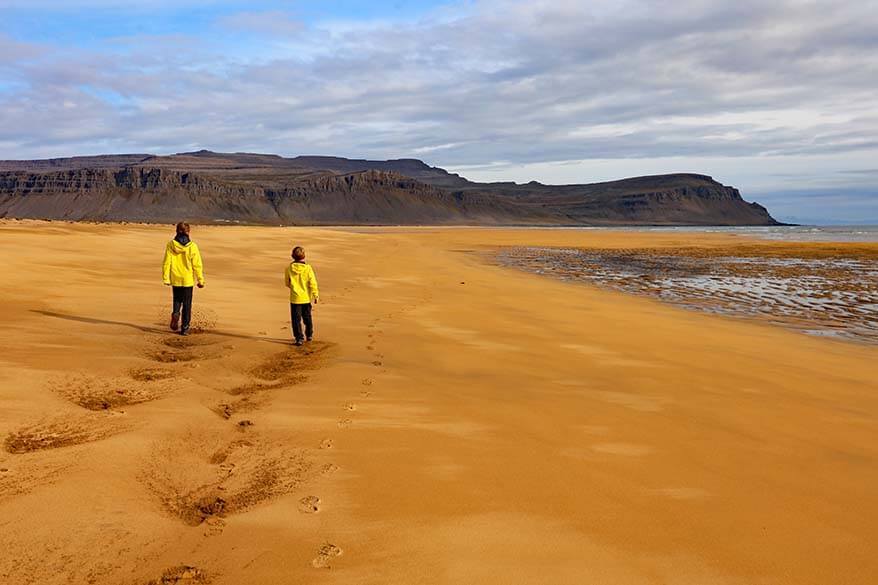
11. Skaftafell National Park
Skaftafell NP is one of the easiest-accessible and most beautiful National Parks in Iceland. It, therefore, deserves a mention on every list of the best places to visit in Iceland.
There are many short hiking trails in this park. The most popular hike is that to Svartifoss – a waterfall surrounded by impressive black basalt columns.
If you have a few hours to spare, consider the Svartifoss – Sjónarsker – Sel walk and the walk to the glacier Skaftafellsjökull. Alternatively, the Svartifoss – Sjónarnípa hike is somewhat longer but even more impressive.
How to visit: Skaftafell NP is located just off the Ring Road in the south of Iceland. You can easily get here in a regular car. There is a Visitors’ Center where you get more information and find detailed hiking maps.
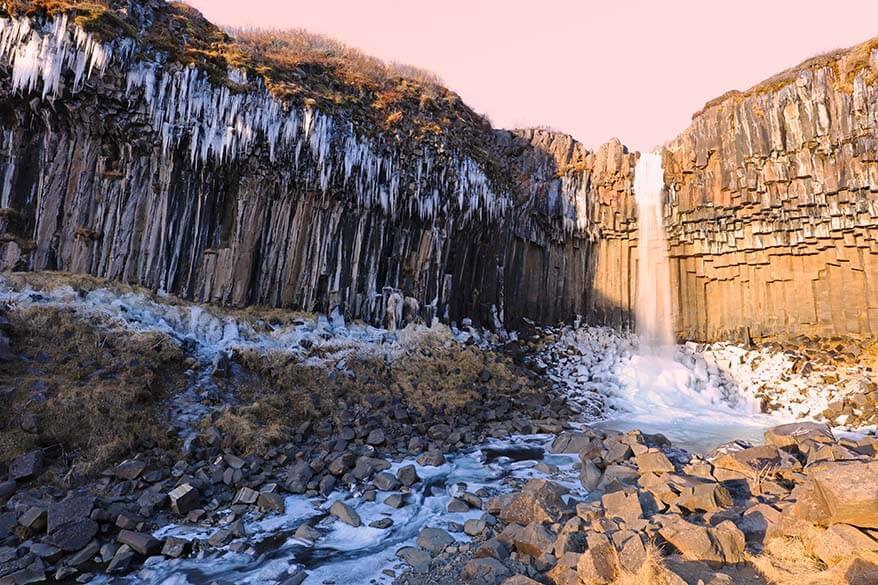
12. Icelandic Highlands
The biggest part of Iceland has hardly any roads and is very little explored, but if there is one part of Iceland that is worth visiting more than anything else, it’s the Icelandic Highlands !
Since the highlands are so vast and there are so many beautiful hidden gems, it would be impossible to mention even a small part of them. At the same time, most areas are very remote and require local knowledge and super jeeps with oversized tires in order to visit them… Furthermore, the highlands are only accessible from approximately mid-June to mid-September.
Some of my favorite places in the highlands that are somewhat easy to visit are Kerlingarfjöll , Háifoss , and Landmannalaugar . Haifoss waterfall is quite easy to visit on your own as well.
How to visit: You’ll need a good 4WD or a 4×4 for all of the places mentioned above, but the easiest way to visit is by joining a tour. If you want to get a taste of what the highlands are about, the most popular highlands tours are those to Landmannalaugar. You can check availability and book Landmannalaugar tours here .
LEARN MORE: Icelandic Highlands Tour with a Private Driver
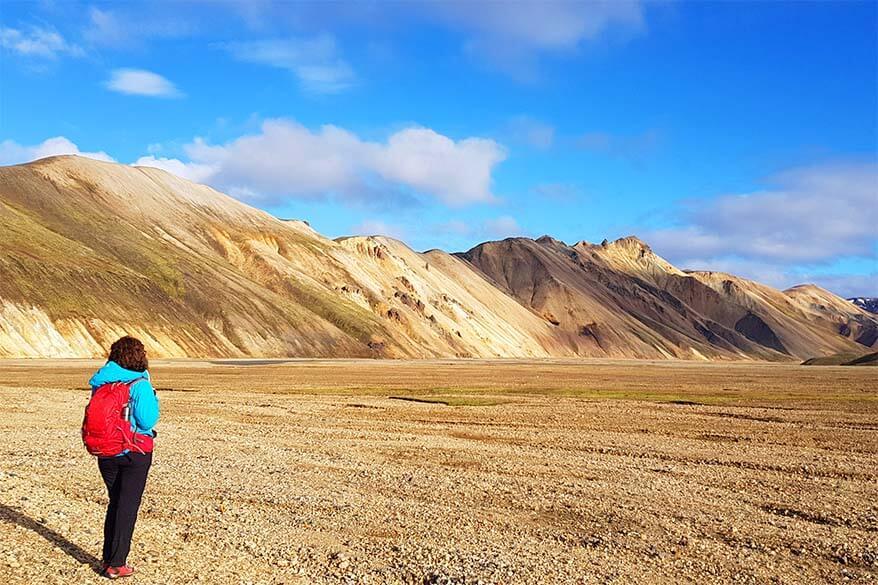
13. Reykjanes Peninsula
One of the easiest areas to visit in Iceland from this list, the Reykjanes Peninsula is often overlooked by most Iceland visitors. Their loss! This stunning area close to Keflavik airport and Reykjavik city is home to the popular Blue Lagoon and is well worth a visit too.
With colorful geothermal areas, endless lava fields, and stunning rugged coastlines, Reykjanes Peninsula is like the best of Iceland in a nutshell.
Don’t miss the Valahnúkamöl Cliffs at Reykjnesviti Lighthouse and Seltún Geothermal Area . Bridge Between Continents is another nice spot, just as Strandarkirkja and Garður . Krysuvikurberg Cliffs are really beautiful too, but require a 4 WD vehicle to get there.
How to visit: You can easily visit most of the attractions of the Reykjanes Peninsula by yourself with a regular car. Alternatively, join one of the guided tours from Reykjavik . Some areas require a 4WD or even a super jeep.
LEARN MORE: Ultimate Guide to Reykjanes Peninsula
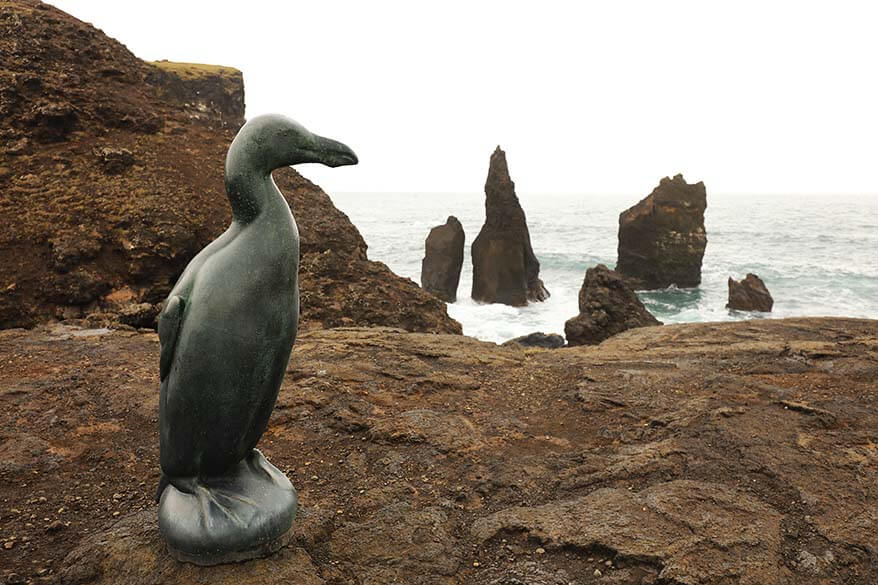
14. Recently-Active Volcanos
This is the newest addition to the best things to do in Iceland – hiking to one of the recently erupted volcanos!
In March 2021, there was an eruption of the Fagradalsfjall volcano on the Reykjanes Peninsula. The nearby Geldingadalir valley was filled with burning lava and the scenery was changing daily. The volcano quickly became the new most popular sight in Iceland attracting locals and tourists alike.
More recently, in August 2022, another volcano erupted just near the first site – Meradalir .
In the summer of 2023, Fagradalsfjall volcano erupted again, but this time it didn’t last long. In the winter of 2023, there was another massive eruption in the same area. It even triggered some evacuations and closures.
At the moment of the last update, these volcano eruptions have stopped. But many of the eruption sites remain a very popular place to see in Iceland, attracting lots of tourists every day.
Good to know: The easiest way to get to the volcano eruption sites is by car or by joining a tour (on foot or by helicopter). There are quite a few volcano tours available . Most of them include pick-up/ drop-off in Reykjavik and some also visit a few of the main highlights of the Reykjanes Peninsula or include tickets to the Blue Lagoon.

15. Tröllaskagi Peninsula
If there is one area in North Iceland that seems to be completely overlooked by international tourists, it’s the beautiful town of Siglufjörður and its surroundings, aka the Tröllaskagi Peninsula . It’s simply stunning!
The fishermen’s town Siglufjörður is extremely picturesque and The Herring Era Museum is well worth a visit. But probably even more impressive is the scenic drive to get there. Road 76 which leads from Varmahlíð to Siglufjörður is probably the most beautiful scenic drive in Iceland.
TIP: Make sure to stop at Hofsós swimming pool . Don’t miss the Grafarkirkja (said to be the oldest church in Iceland)! Víðimýrarkirkja and Glaumbær Farm & Museum are also worth a visit.
How to visit: You’ll need a car to explore this area.
LEARN MORE: Best Things to Do in Siglufjörður and Trollaskagi Peninsula
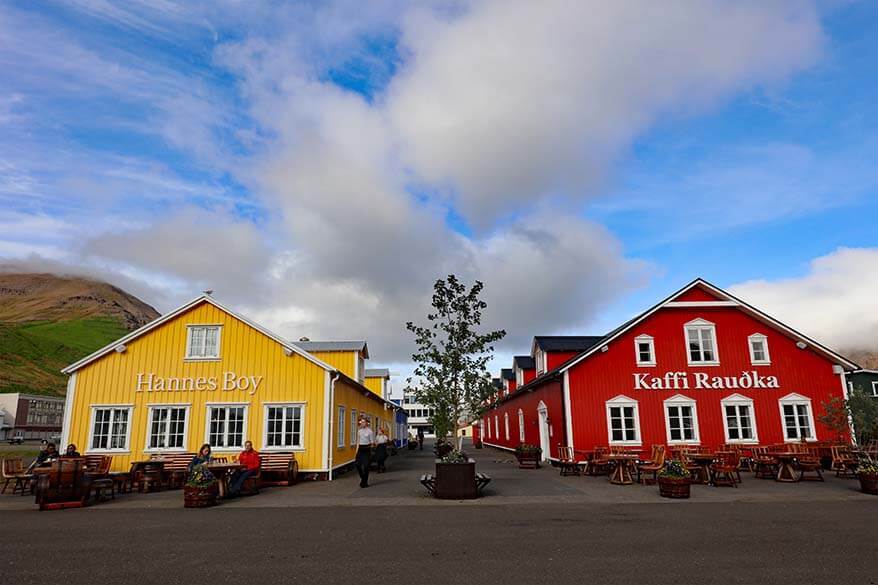
16. Heimaey Island
Part of Iceland’s Westman Islands, Heimaey Island is the biggest island and one of the most beautiful places in Iceland.
It’s a place where you can get acquainted with the more traditional way of living in Iceland and feel what it’s really like to live on a remote island. Especially if you visit off the main season.
The landscapes here are stunning, and in summer, you can see lots of puffins on the island. There is also a whale sanctuary where you can see white Beluga whales.
How to visit: You’ll need to take a ferry to get here. Private tours from Reykjavik are also possible, but very expensive. For comparison, be sure to check this option as well – the prices depend on your group size.
LEARN MORE: Visiting Westman Islands
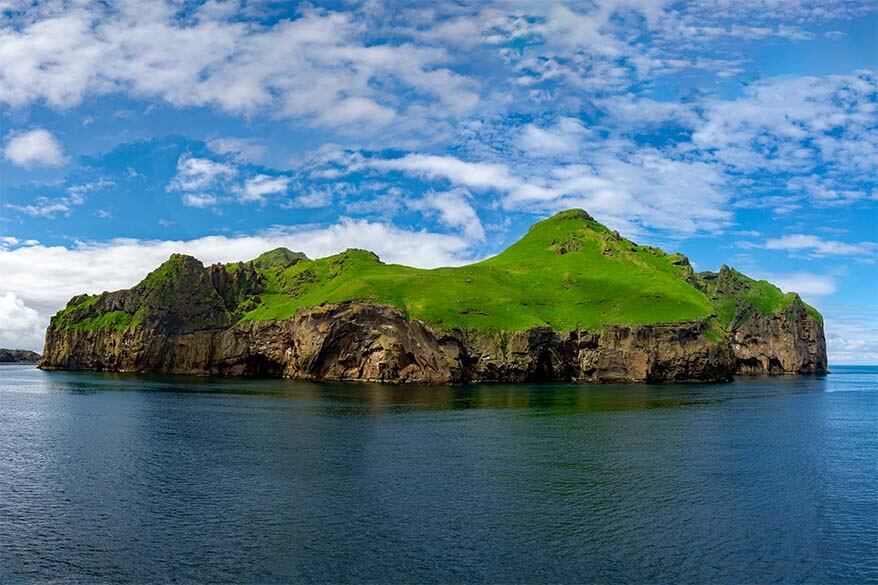
17. Dettifoss & Asbyrgi
There are two more places in Northern Iceland that are well worth visiting and deserve a mention among the best things to do in Iceland – Dettifoss Waterfall and Asbyrgi Canyon .
Dettifoss is Europe’s most powerful waterfall. With 100 meters (330 ft) in width, a drop of 44 meters (144 ft), and an average water flow of 193 m³/s, this is the place where you feel the power of nature as nowhere else in Iceland. Must see!
Asbyrgi Canyon is a somewhat lesser-known place located between Dettifoss and Husavik and it’s well worth a short stop or a longer visit. It always amazes me how such completely different landscapes can be so close to each other and the tranquility of Asbyrgi is just incomparable to the roaring powerful Dettifoss.
How to visit: Road #862 to Dettifoss is paved and easily accessible (road #864 is not and requires a 4WD). Road #861 to Asbyrgi is also paved. However, road #862 north of Dettifoss is gravel and it’s best to have a 4WD if you are planning to drive here. Alternatively, you can reach Asbyrgi from Husavik.

18. Vatnajökull Glacier
With so many glaciers in Iceland, it’s hard to pick just one to mention as the best one to visit. However, Vatnajökull Glacier is the largest ice cap in Iceland. So if you visit just one glacier in Iceland, it will likely be this one.
With a total area of +- 7,900 km 2 (3,100 sq mi), Vatnajokull is immense. It has around 30 glacier tongues (outlet glaciers), each with its own name, and so it’s likely that you’ll see those names mentioned in the description of various glacier tours and activities.
How to visit: You can see various glacier tongues from the Ring Road in southern Iceland. But the best way to visit glaciers in Iceland is by booking a glacier hiking tour , visiting the ice caves , and snowmobiling . Keep in mind that you need to book an organized tour for any activities where you go on the glacier itself.
In winter – from about October to March – you can also see some of the most beautiful natural ice caves in Iceland. You can only visit with a tour and you should book in advance. There is also one place – Katla – where you can visit a natural ice cave in the summer as well . This is the best tour that goes to Katla ice cave and it departs from Vik. There is also a day tour that visits this ice cave from Reykjavik.
READ ALSO: Glacier Hiking in Iceland
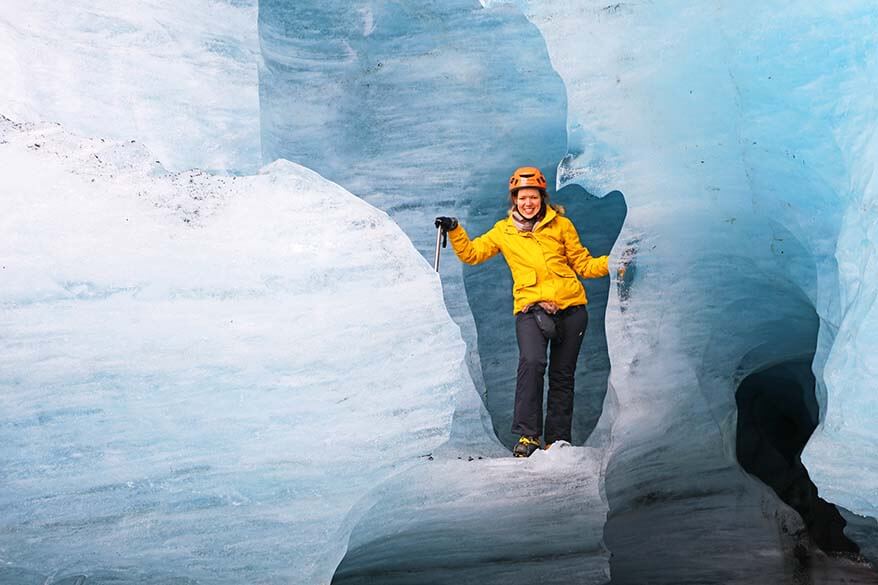
19. East Fjords
Another region that is often overlooked by travelers who just drive the Ring Road from South to North is the East Fjords . It’s a stunning region that is well worth visiting if you pass eastern Iceland!
The nicest towns are probably Eskifjörður and Seyðisfjörður , the latter is famous for its colorful rainbow path leading to the church. In season, Borgarfjörður Eystri is a good place to see puffins.
There are also lots of waterfalls in the area, hiking trails, Laugarfell hot pool, and Petra’s Stone collection in Stöðvarfjörður…
The eastern part of Iceland is where you’re most likely to see reindeer.
How to visit: You will need a car to visit the East Fjords.

20. Fjaðrárgljúfur Canyon
Fjaðrárgljúfur Canyon near Kirkjubaejarklaustur used to be one of my favorite places in Iceland. It was so peaceful and undiscovered. Nowadays, it’s so popular that the walking path along the side of the canyon had to be closed so that nature could recover a bit.
There are other incredibly beautiful canyons in Iceland, but this one is the easiest to access. So if you want to visit a canyon in Iceland, Fjaðrárgljúfur is well worth a trip. Just please be respectful to nature and obey the signs.
How to visit: You’ll need a car to get here. This Jokulsarlon day tour also stops at Fjadrargljufur.
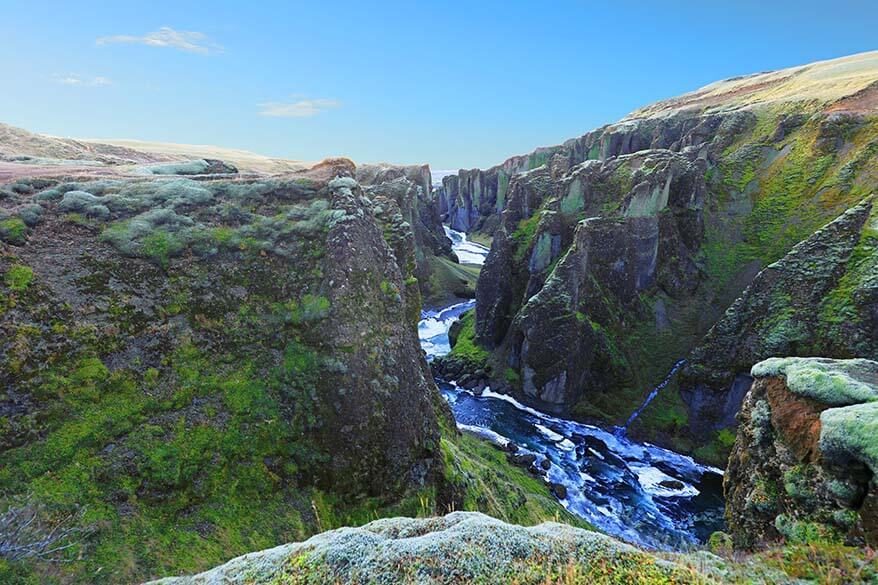
21. Goðafoss Waterfall
Goðafoss , meaning the waterfall of Gods, is one of the most visited waterfalls in Northern Iceland.
It’s extremely beautiful and especially on a sunny day. Often, you can see a rainbow over the falls and it looks simply magical.
How to visit: Located just next to the Ring Road, Godafoss is very easy to get to by car. All North Iceland tours that visit Myvatn stop here as well. Paved walking paths connected by a pedestrian bridge allow you to see the waterfall from two sides of the river.
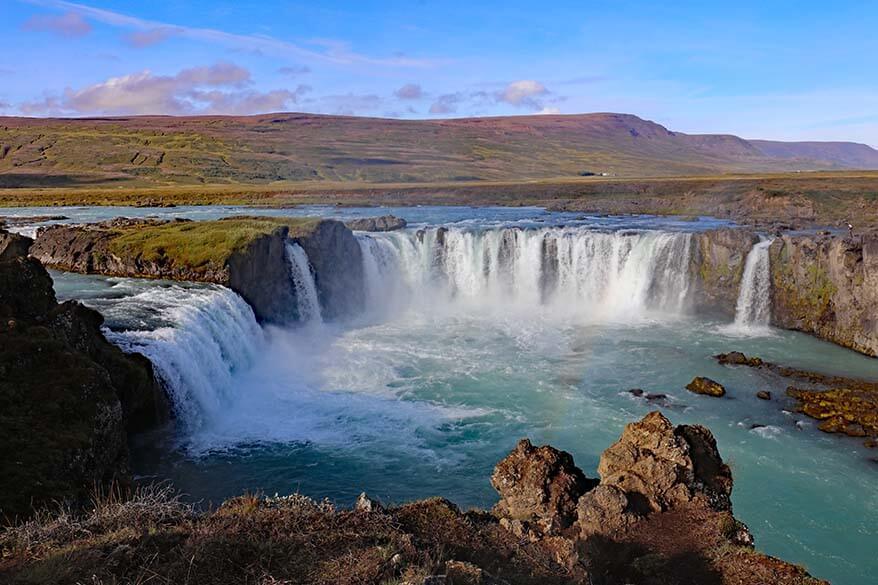
22. Hvitserkur
Hvitserkur is a beautiful rhino-shaped rock along the northern coast of Iceland. While the rock itself is very impressive, the entire area around it is simply phenomenal.
We were not sure if it was worth the long drive, but it absolutely is. I, therefore, think that Hvitserkur deserves to be mentioned among the most beautiful places in Iceland. If you are driving in the north anyway, this is just a rather short detour from the Ring Road.
How to visit: You’ll need a car to get here. The road is gravel but in good condition.
LEARN MORE: Hvitserkur
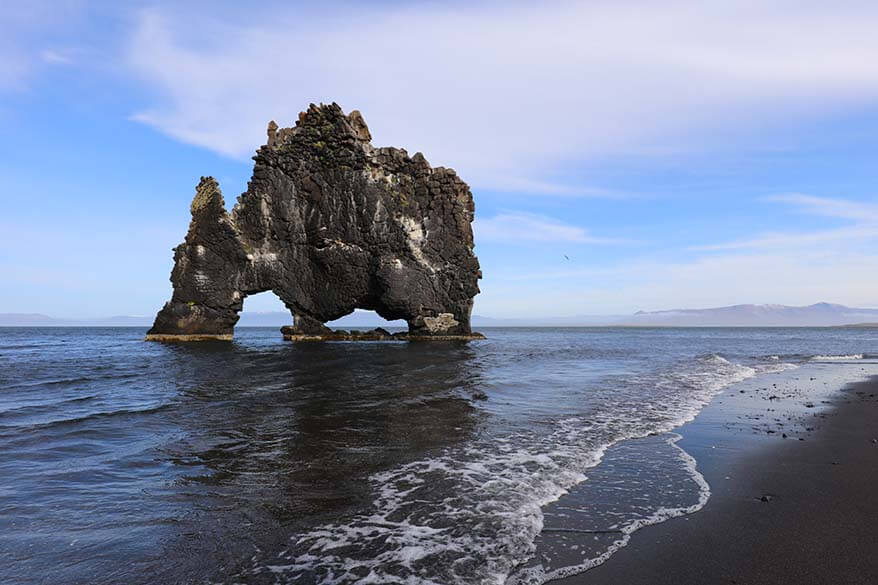
23. Reykjavík
While I think that Iceland’s beauty lies mostly in its nature and people rather than its towns, no list of the best places in Iceland would be complete without mentioning its capital city, Reykjavik .
Reykjavik has changed beyond recognition in the past years and it has more to offer to tourists than ever before.
In the past, I would have told you that one day is more than enough to see all the highlights, which include the views from Hallgrimskirkja church tower, discovering the streets of the colorful town center , feeding ducks at the Reykjavik Lake Tjörnin , visiting Harpa concert hall, seeing the Sun Voyager statue, and visiting some museums.
However, there is now so much more to see and do in Reykjavik than that, with new amazing attractions opening up all over the city all the time. So if you do have some extra time to spare, plan a few days in Reykjavik (see here our guide on where to stay in Reykjavik ).
TIP: My favorite museum that I absolutely recommend in Reykjavik is Perlan . Here you can find our guide to Perlan, the best museum in Reykjavik .
Other great attractions include FlyOver Iceland , Whales of Iceland , Magic Ice Bar , and the geothermal pool with cliffside ocean views, Sky Lagoon .
LEARN MORE: Top Things to Do in Reykjavik & Reykjavik 1-Day Itinerary
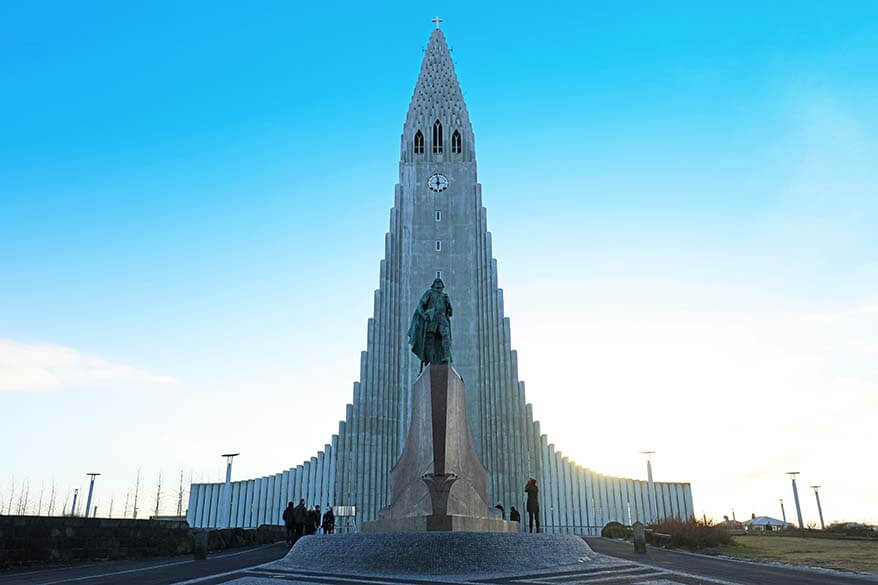
24. Langjökull Glacier
Langjökull is the second-largest glacier in Iceland. Its name means “the long glacier”.
Because of its proximity to the popular Golden Circle, it’s easy to visit Langjökull glacier when you are touring the area or on a day trip from Reykjavik. It’s also possible to reach the glacier from Húsafell which is closer to Snaefellsnes Peninsula.
Important: Keep in mind that you need to go with a local guide who knows the area and potential dangers. You can see what kinds of tours are available here .
The glacier is vast and rather diverse, so there are some unique glacier tours here. There are also some ice caves that you can visit. There is a man-made ice cave that is accessible the whole year round, but there is also a natural ice cave , which is much more impressive, of course.
For many years, the most popular way to visit Langjökull Glacier was by snowmobile which allows you to cover big distances in a short time (there are snowmobile tours starting from Reykjavik or from the Golden Circle).
But if you want to see the ice caves of Langjokull, you should opt for a glacier truck tour instead. You can visit a man-made ice cave from Húsafell , but we recommend the newly-discovered natural ice cave that you can visit from the Golden Circle side instead. This recently launched glacier truck tour is one of the best options if you want to visit a natural ice cave near Reykjavik!
No matter which tour you choose, a visit to Langjökull Glacier is one of the most amazing experiences in Iceland. It will definitely make your trip so much more memorable!
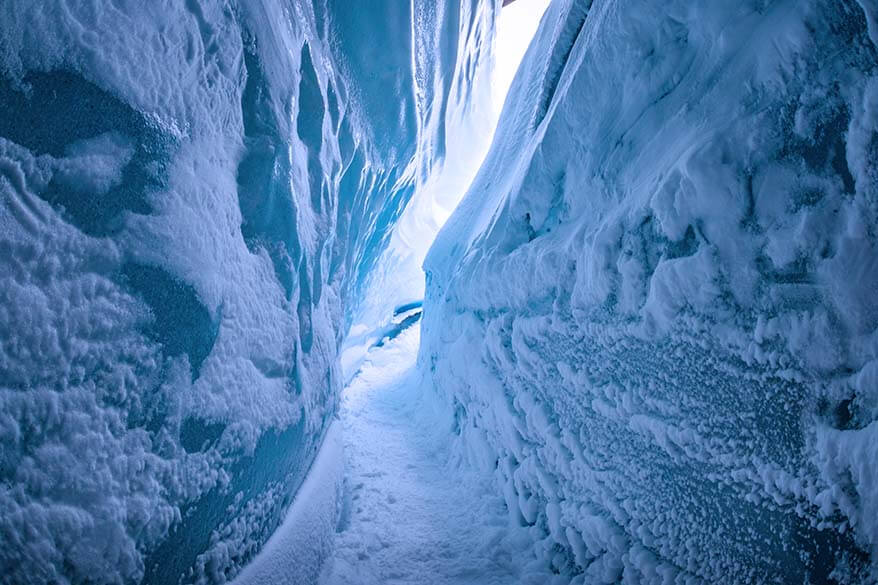
25. Akureyri
For those of you who are wondering why Akureyri is at the bottom of this list… While I think that it’s a nice place to stop for an hour or two if you have plenty of time in Iceland, I also believe that there are so many nicer places to see in North Iceland that are worth your time more.
That being said, if you go to Akureyri, take some time to walk through the old town and also don’t miss the Botanical Gardens . The new attraction here is the geothermal pool called Forest Lagoon . Akureyri is also a popular place for whale-watching excursions .
There are also some nice places to see nearby, so you could use Akureyri as a ‘base’ location for exploring more of Northern Iceland.
If you are just passing by, you may want to stop at the Christmas House just outside of town.
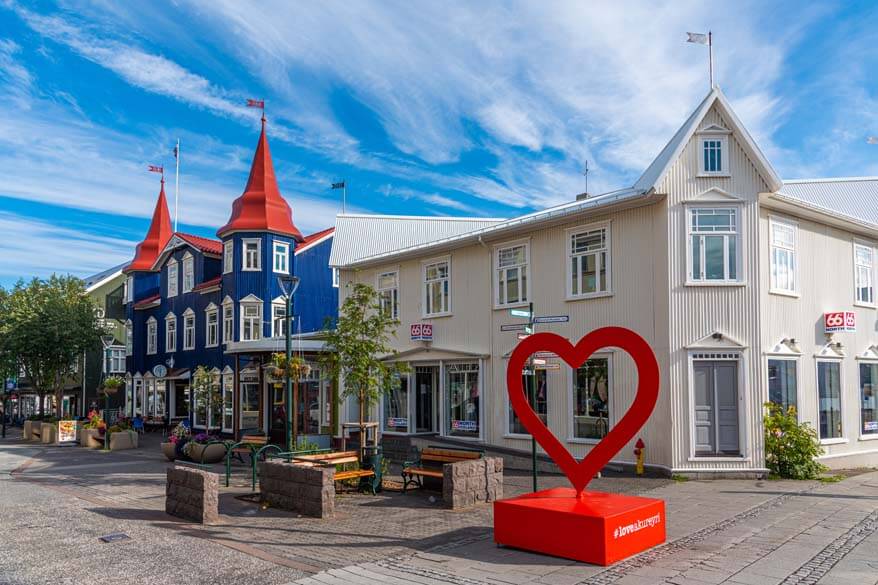
So, this is our guide to some of the very best places to visit in Iceland.
I hope that it will inspire you to discover this beautiful country beyond its most popular tourist attractions like the Golden Circle, Reykjavik, and the South Coast.
Below, is a video showcasing some of our favorite places in Iceland . Take a look! And further down, you can find links to our other guides that should help you plan your own dream trip to Iceland.
How to plan a road trip in Iceland:
- Itinerary Suggestions: Iceland itinerary for 1 to 14 days
- The musts: 4 days in Iceland
- Best summer itinerary for one week: 7 days in Iceland
- Complete Ring Road: Iceland’s Ring Road in 10 days
- Winter trip: Iceland winter itinerary for one week
- A bit off the beaten path: 10 days in Iceland (summer only)
READ ALSO: Where to Stay in Iceland
Planning a trip to Iceland and have questions? Please check our recommended articles below and in our Iceland travel guide .
If you have a specific question about any of the places mentioned in this article or want to share your favorite landmarks or attractions in Iceland, feel free to leave a reply below.
More tips for your trip to Iceland:
- Good to know: Iceland Travel Tips
- When to go: When to Visit Iceland – Summer vs. Winter
- Airport transfers: How to Get to Reykjavik from Keflavik Airport
- Budget: How Expensive is Iceland (& How to Save Money)
- Packing: What to Wear in Iceland in Winter & What to Pack for Iceland in Summer
- Tours: Best Tours and Day Trips in Iceland & Best Winter Day Trips from Reykjavik
- Winter trip: Tips for Visiting Iceland in Winter & Northern Lights in Iceland
- For at home: Nordic Gifts
READ ALSO: Northern Lights in Iceland
TIP: Planning a trip to Iceland and have questions? Join our Facebook Group for Iceland and Scandinavia Travel !
If you found this post helpful, don’t forget to bookmark it and share it with your friends. Are you on Pinterest? Pin these images!
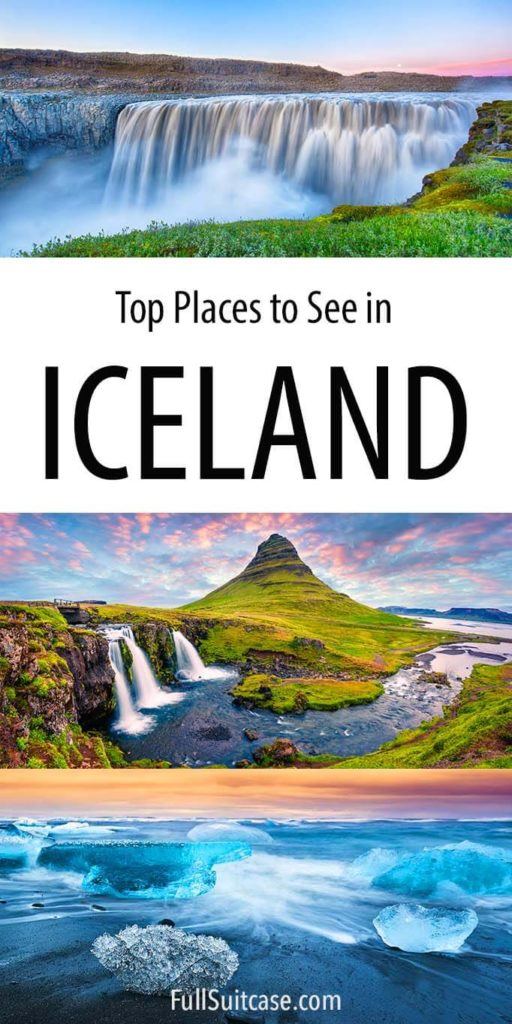
This site uses Akismet to reduce spam. Learn how your comment data is processed .
Gustavo Correa
Monday 11th of March 2024
Hi, Jurga. Very nice and interesting your blog. I'm planning a trip with my family to see the Auroras borealis. I know to see Auroras borealis is very dependent from the time and place you go, is it Iceland a place where you can see the auroras borealis with great certainty? Any recommendations on best dates and place to go for it? Thanks, Gustavo
Monday 1st of April 2024
@Jurga, thanks a lot for your prompt answer. Very valuable and precise information. I'm already reviewing the options in Tromso and will give you feedback on my experience. Already subscribed to your Newsletter. Regards. Gustavo
Tuesday 12th of March 2024
Hi Gustavo, Iceland is a good place to see auroras, but it's impossible to predict. If it's cloudy for days in a row, you may not see anything. But if you are lucky, you may see them multiple times during your winter trip. For more practical information, take a look at our guide to the Northern Lights in Iceland for more information. Also remember that there are so many other great things to do in Iceland in winter! That being said, if auroras are your main interest, then consider other places that are closer to the aurora circle = the chances of seeing them are higher. One of the best places for the Northern Lights in the world is Tromso in Northern Norway. But also there, if you are very unlucky with the weather, you may not see them. The good thing is that being that close to the aurora circle, you can see some amazing displays even when the aurora activity is very weak. That's not the case in Iceland where you need a much higher solar activity in order to see really strong auroras. Here you can find our guide to the Northern Lights in Tromso. Whatever destination you choose, the longer you stay, the more chances you have.
Wednesday 29th of November 2023
Darn if I wasn't booked up for the next 2 years I would go here next summer. I can plan this for 2026 though.
Friday 1st of December 2023
Thursday 30th of November 2023
Ha ha, life's too short for all the trips we want to make, isn't it... But if you are making plans for the future, you really can't go wrong with visiting Iceland. It's so different than anywhere else. In the meantime, enjoy all your other trips!
Monday 23rd of January 2023
Hi, Your blog is great and super helpfu!! I love all of the details. I am going to Iceland in February (less than a month). I am doing a 5 day tour that includes a hike on a glacier. I am going a few days early and have 1 day to do an excursion. I am debating between the Glacier Lagoon and Kalta Ice Caves. We will not be going to Vik on the tour. Any thoughts on which is better? If you recommend the ice caves, I was planning on use viatour, but the Kalta tour is no longer available. Any suggestions on tour companies? Thanks, Alissa
Tuesday 24th of January 2023
@Jurga, Hi Thanks for the reply! Unfortunately, I can't get my money back and have already booked my tickets. Here is the tour that I am doing. I have some free time in in Reyjavick on my own before the tour starts and was thinking of doing an excursion. Unfortunately, 2 excursions won't work. I tried to past the website and highlights for my tour, but I couldn't. I will email you the link. Any thoughts would be appreciated.
Hi Alissa, I'm not sure I'm following - you are going on a 5-day tour in winter and it doesn't include Jokulsarlon Glacier Lagoon and doesn't visit any ice cave??? All the best winter tours - even those that take just 2-3 days include both of these in their itinerary (see a 3-day tour and a 2-day tour). Plus, the ice caves that these tours visit are nicer than Katla, but they are too far to visit from Reykjavik in just a day (that's why it's best to go on a 2-3 day tour). Not knowing what you will see on your tour, it's difficult to suggest much. Except that maybe you should book another tour that has a better itinerary... Sorry, but I can't imagine how they wouldn't at least include Jokulsarlon Glacier Lagoon in a 5-day itinerary... It's really one of the must-see places in Iceland. Or are you talking about some other glacier lagoon? Or maybe you didn't read the description of your tour in detail... Anyway, if you want to visit Katla, there are still plenty of tours available for February (see on GetYourGuide - it's better than Viator anyway ;)). Hope this helps. Have a great time in Iceland - no matter what you end up visiting, you'll love it!
Friday 28th of January 2022
thank you so much i got all of my homework done because of this!
Glad to help, Landon. We have lots more info and travel itineraries for Iceland that can help you plan the trip. Happy travels!
Sunday 22nd of August 2021
Hello, this article is very helpful. My daughter wants to go to Iceland for her sweet 16 and I was wondering what the odds of us catching the northern lights in November are? What do you recommend so that I can make her bday memorable? Thanks in advance!
Thursday 6th of October 2022
@Jurga, You recommend not driving on your own - would you say this is due to unpredictable weather or because it is generally not safe to drive on your own in Iceland? Wondering if when I visit, if my home base is in Reykjavik, would it be a good idea to rent a car for a couple days to do a few day trips on our own as opposed to hiring a guide for a few?
Tuesday 24th of August 2021
Hi Jessica, in general, November is a great time to see the Northern Lights in Iceland, but it remains a natural phenomenon (and the weather will have a big impact as well), so you can never guarantee that you'll get to see them. I was once in Iceland in November for a week and we had the best weather and the most amazing aurora displays a few times during the trip. But you can also have snowstorms and cloudy skies and not see much. So don't plan the trip just for the auroras - there's so much to see in Iceland and the Northern Lights will be just a nice extra if you get to see them.
I recommend either staying in Reykjavik and booking day tours or taking a multi-day tour with a local guide/driver if visiting Iceland in November. Don't drive on your own! If you stay in Reykjavik, you can visit some cool geothermal baths - Blue Lagoon, Sky Lagoon, and take some nice tours. There are just so many choices, it's hard to suggest something specifically not knowing what your interests are. This might give you some ideas: * Best half-day trips from Reykjavik * Best winter tours from Reykjavik Don't miss the Golden Circle and especially the South Coast! There are also museums, nice restaurants, and other activities in town. Here are just a few suggestions: * Perlan museum * Fly over Iceland experience
For more info on the Northern Lights, please check this article: Northern Lights in Iceland.
One more recommendation comes to mind - you could stay in Reykjavik for the majority of the trip and book a 2-day tour for the South Coast. 2 days is a good time to see the highlights of the South Coast and visit Jokulsarlon Glacier Lagoon which is quite far to be done in a day. In addition, most 2-day tours include a visit to an ice cave and that can be the most amazing experience that your daughter will never forget! Take a look at this highly-rated 2-day tour for more info.
Hope this helps.
- Skip to right header navigation
- Skip to main content
- Skip to secondary navigation
- Skip to primary sidebar
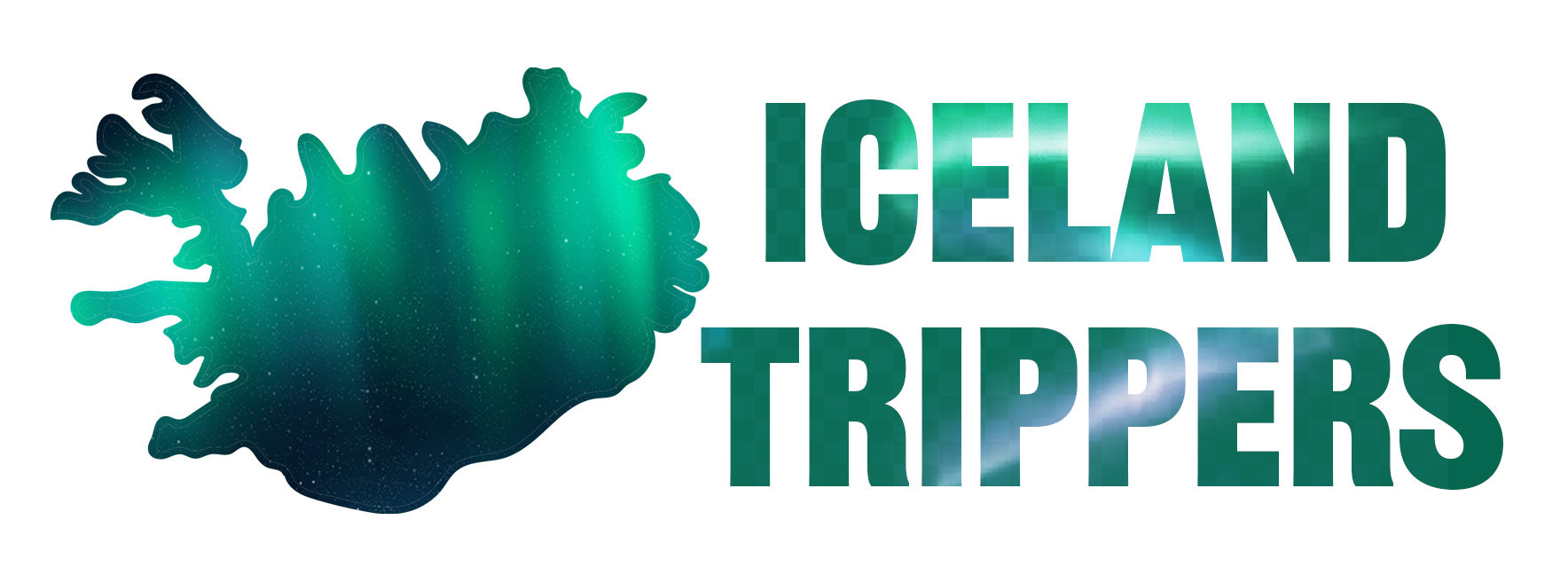
Learn how to easily plan your dream trip to Iceland with helpful guides and tips!
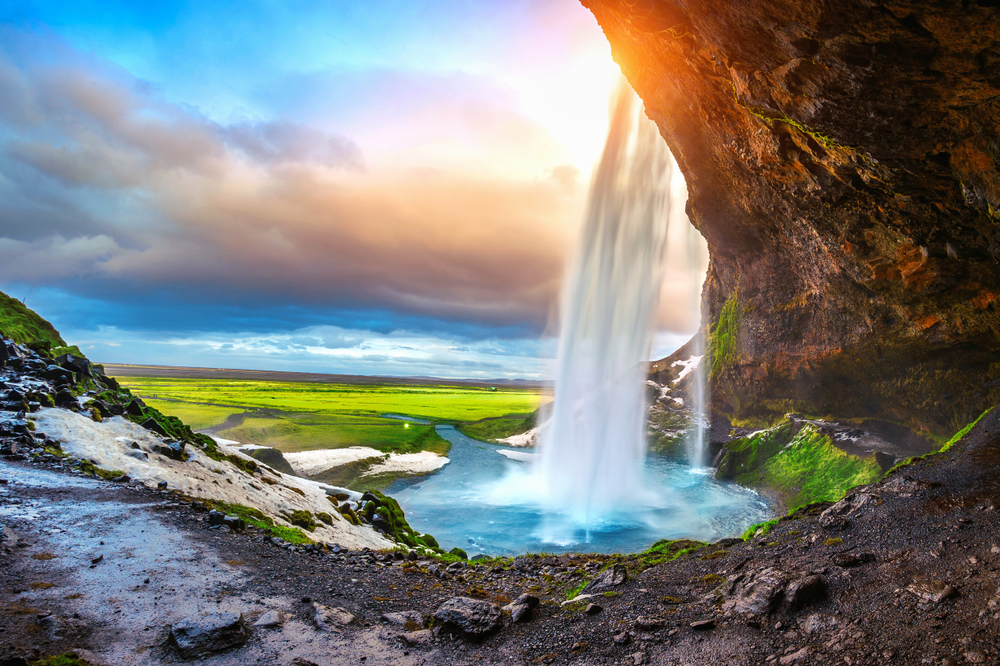
Best (And Worst) Time To Visit Iceland (Month By Month!)
February 19, 2022 // by Iceland Trippers // Leave a Comment
Deciding on the best time to visit Iceland for your needs is one of the most important parts of planning an Iceland trip. If you are unsure where to start, we have made it super easy for you by explaining what you can expect month by month.
This complete guide to the months and seasons of Iceland will fully prepare you for your trip. All of the most common questions are answered, such as when to see special things like the Northern Lights, lupine flowers, and puffins.
Planning your trip to Iceland last minute?
Make sure to book your hotels and tours in Iceland in advance to ensure availability! The longer you wait, the more difficult it gets. Here are my top picks for your trip :
Top Experiences And Tours In Iceland:
- Golden Circle Full Day Tour From Reykjavik (Likely to sell out!)
- Silfra Snorkeling Tour (Includes photos + only small group)
- South Of Iceland Full Day Trip (Our pick!)
- Whale Watching In Reykjavik (On a luxury yacht)
- Northern Lights Bus Tour (Great to go with a local)
- Ice Cave Tour And Glacier Hike (Likely to sell out)
Tickets You MUST book in advance:
- Keflavik > Reykjavik Bus Airport Transfer (Skip the line!)
- Sky Lagoon Entrance Ticket (Includes 7-step spa ritual)
- Blue Lagoon Entry Ticket With Drink (Likely to sell out!)
Top picks for places to stay in Iceland:
- Hotel South Coast (Great central location)
- Grandi Reykjavik (Includes free breakfast)
- Hotel Kria (Close to black sand beach)
- Hotel Skaftafell (Mid-range price)
Iceland is amazing , but it is also a country that must be taken seriously. Winter in Iceland is beautiful, but you must plan accordingly if that is when you are planning to visit. However, even summer has its drawbacks.
Not to worry, we have all the information you need to check off all of your Iceland dreams. The best months to visit Iceland might depend a little bit on the season, but it depends the most on you!
Get a FREE printable “Hidden Gems In Iceland” E-book by joining our private Iceland Facebook Group and sharing your photos and asking for tips and tricks.
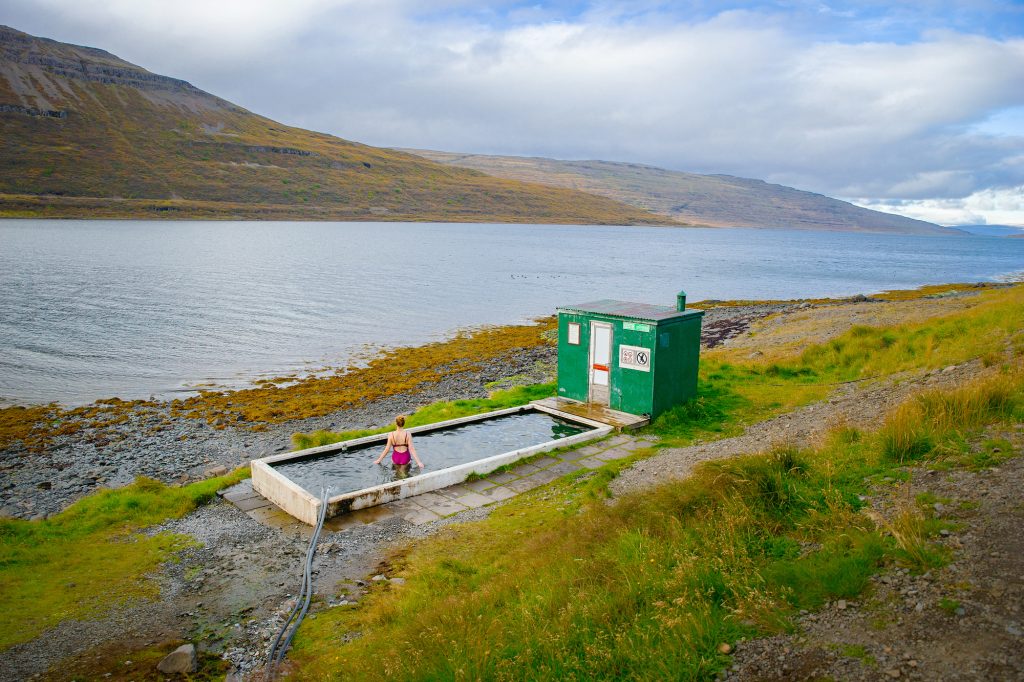
High and Low Seasons for Visiting Iceland
Like any popular tourist destination, Iceland has an “on” season and an “off” season. These times are otherwise referred to as high and low seasons (with the in-betweens being called shoulders).
The high season is when the majority of the tourists come to visit. This is generally due to the nice weather and ease of access. This is when most people plan their Iceland itinerary !
But just because the weather is colder in the low season does not mean you should not visit! Many people enjoy the low and shoulder seasons more because there are fewer crowds and it is cheaper, making it the best time to travel to Iceland for a lot of people.
You might be surprised to learn that there are indoor and outdoor activities for all of the seasons. Iceland is beautiful inside and out no matter when you visit.
High Season: June-August
Summer, summer, summer! This is the high season in Iceland for the obvious reasons: weather and temperature. It is undeniably the best weather to visit Iceland with much more sun and higher temperatures.
However, this is also by far the most expensive time to visit Iceland. Airfare, hotel fees, food prices–everything costs a pretty penny during the summer.
Not to mention the crowds. The high season is high season because it is when most people visit Iceland.
While the cost and the crowds are pretty big negatives, the high season has phenomenal positives as well. Especially if you are wanting to go to Iceland for the great outdoors. Most roads will be open during this time as well.
At the end of the day, it is all about your priorities. If weather and being able to spend the maximum time outside every day is your top priority, you are going to want to come to Iceland during the high season.

Shoulder Season: Sept-Oct & April-May
Shoulder seasons are the traveling industry’s best-kept secret. Okay, so it is not super-secret, but it still is not something people talk about as much as they should.
We hear about the high and low seasons all the time, but not so much about the shoulder seasons. They are the very beginning and the very ending of the classic tourism season.
This means that there are still more people than in the low season, but not the huge crowds of the high season. Prices are a little higher too, but still generally reasonable.
The best part of the shoulder season is that the weather is still reasonable. It may not be as great as the high season, but still totally tolerable!
Low Season: November-March
The low season in Iceland is during the typical winter months. For a country named after ice, Iceland’s winters are not that bad!
While there are some road closures, the country is still quite explorable and traversable during the cold months. And if you are coming to see the Northern Lights, this is the time to do it!
This is also the time to come if you are on a serious budget and need to take advantage of the low season prices. Traveling does not have to empty out your bank account.
The lack of crowds makes it the best season to visit Iceland on a budget! There are some trade-offs for coming during the off-season in Iceland, but there are some definite benefits too. This is actually our favorite time to go!
As we said above, the best time to visit Iceland depends on your Iceland priorities!
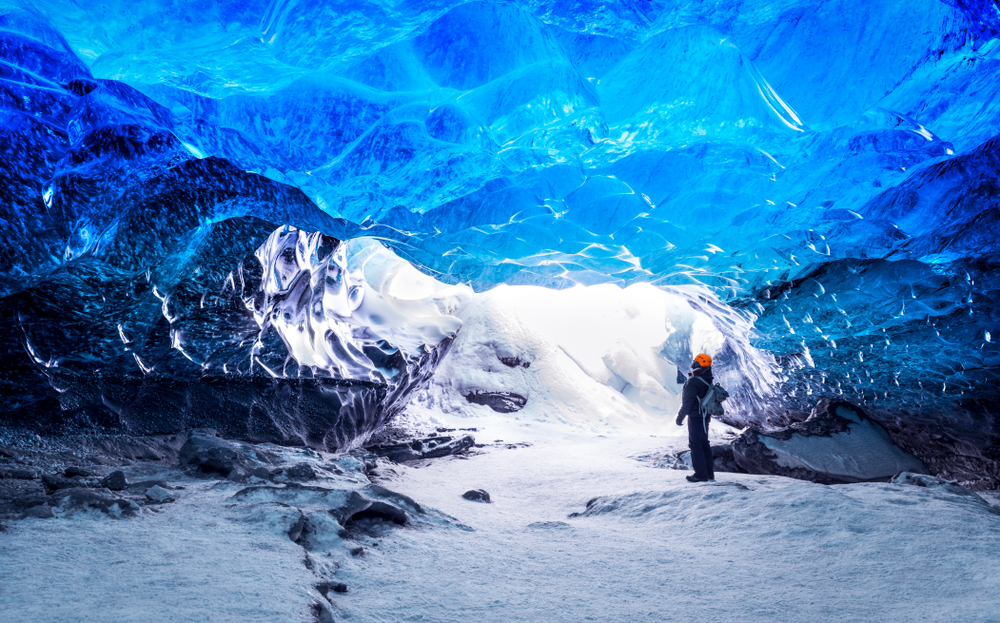
Visit Iceland in Summer if You:
-Love the idea of 24-hour sunshine. Ah, the midnight sun–you are not alone if this is on your bucket list ! If you have dreamt of Iceland’s 24-hour daylight, the summer might be the best time for you to visit.
-Are enamored with the brilliant green of summer. Iceland starts greening back up in the spring, but summer is the best time to visit Iceland if you want to see green everywhere.
The iconic lupine flowers bloom in June and July as well, creating swatches of purple across the landscape. If you want to photograph these flowers make sure to time your trip right.
-Want the best chance to spot whales. Whale watching is a popular tour in Iceland. The magnificent beasts can be spotted offshore from April through October, but the peak time to see them is in the summer.
In summer, more species are in the area and boat tours are less likely to get canceled because of weather.
-Plan on camping. Since the weather is calmer and less unpredictable during the summer, camping in Iceland is a better option for this season. You will have the least rainfall and less wind. This is especially good if you are tent camping.
-Are not bothered by crowds. Everyone loves the gorgeous, summer Iceland scenery. And we mean everyone . Iceland is a super crowded place in summer so keep that in mind.
If you hate crowds, you can still do alright coming in the summer. You will just want to visit the less popular places in the country. They may be less popular, but Iceland is amazing no matter where you go.
-Are totally invested in the traditional sense (read: financially). If you are not concerned about how much your trip to Iceland is going to cost, that saves you a lot of seasonal concerns.
Iceland is stunning in the summer, and we cannot blame you for wanting to visit when everything is so vibrant.
Just keep in mind that it is already expensive to travel to Iceland, let alone during the summer. During the high season, top tourist destinations and locations charge top dollar for everything.

Visit Iceland in Winter if You:
-Want to spot the Northern Lights. You can see the Northern Lights in the fall, but there is a caveat. You will have to stay up until around 2 am. If staying up all night is not your vibe, then winter is the best time to go to Iceland to see the Northern Lights!
In winter, there are not many daylight hours. The sun is only up from around 11 am to 3 pm. However, the increased darkness means a better chance of spotting the Northern Lights. Around midnight is the best time to spot them, but earlier or later is possible too.
-Want to visit an ice cave. The incredibly-formed ice caves are some of the best natural features in Iceland and can only be visited in the winter. Tours are lead from November to March.
-Love a good winter wonderland. There is just something magical about the way snow completely changes Iceland’s landscape. Many people absolutely love coming to Iceland during this time of year because of this.
If you love the beauty of winter, then it is the best time to visit Iceland! Keep in mind that snow has drawbacks since some roads will be closed.
-Want to stand out from the crowd. While a lot of people enjoy Iceland in the winter, the number of people who go is nothing compared to the summer.
If you are looking to do something a little different and unique, winter just might be the best time for your visit to Iceland. It certainly is not a bad time!

Visit Iceland in Fall if You:
-Do not like crowds but still want to see the Northern Lights. Even though this is the off-season, it is prime viewing time for the Northern Lights.
This is because the weather is so nice! You do not have to freeze to see the Northern Lights, just come during the fall.
An extra bonus is that there are really not very many tourists during this time. Fall is the best time of the year to visit Iceland if you want to miss the crowds and do not mind coming when it is a little colder.
-Love fall colors. Iceland is not a country that is typically praised for its fall foliage, mostly because there are not many trees. However, what trees there are turn golden along with the grasses, to create a beautiful landscape.
-Want to experience the Iceland Airwaves music festival. If you have not already heard about it then you might not know what a big deal the Iceland Airwaves music festival is. But if you have heard of it then you already know that it is a must-see!
It is a super popular music festival that happens each fall in Iceland. Usually, it is held sometime in November, but do an internet search to find the exact date.
If you love music, this festival is a great addition to your Iceland plans! Fall is the best time to go to Iceland to check it out!

Visit Iceland in Spring if You:
-Love puffins! Spring is the best time to visit Iceland if you want to see puffins . These adorable birds start arriving around April for their yearly nesting.
Puffins are some of the cutest birds out there, and you can find them all over! If you are coming to catch sight of or photograph them, just check in advance to make sure they will be in the area where you are going.
-Want to road trip without snow. As we said above, some of the roads can close in the winter. Spring is the best time to come to Iceland for better weather and open roads. That melting snow also helps to make the waterfalls flow stronger.
Not to mention that the world is coming back to life in the most beautiful way! There is something about the colorful bursts of color against the gray of winter that makes spring like no other season.
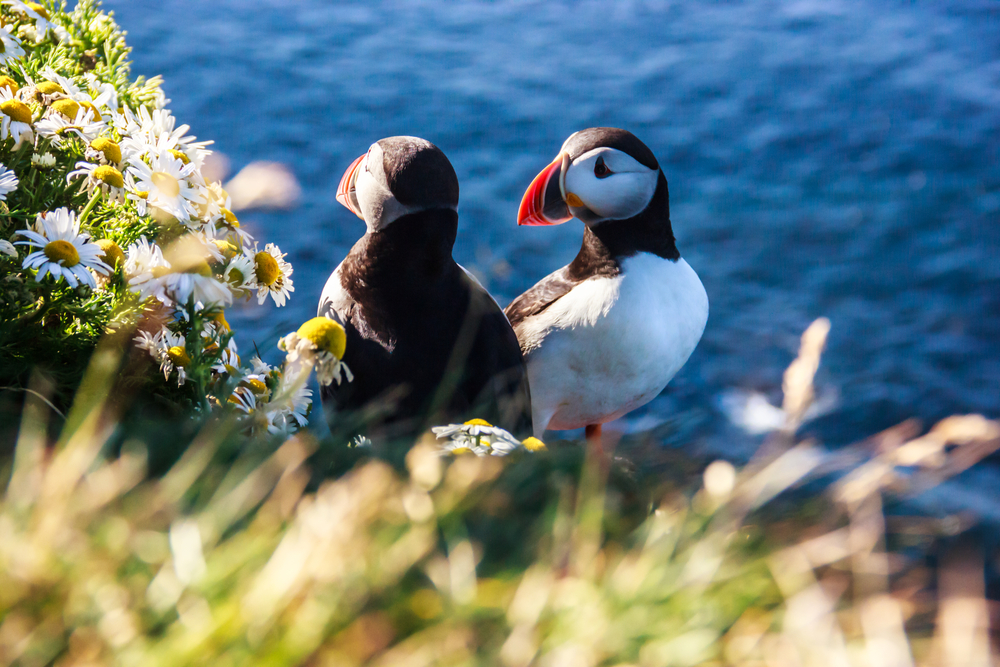
Best Time to See Northern Lights in Iceland
If you are interested in the Northern Lights, you are interested in Iceland! While there are many different places to see the Northern Lights in the world, Iceland is hard to beat.
Especially considering that there are places where you can watch them from a hot tub! The Northern Lights In Iceland are a huge draw, and if they are the reason you are coming you are not alone!
If you are wondering what is the best month to see the Northern Lights in Iceland, there are a few choices. It is possible to see the Northern Lights any month between the end of September and the end of March.
Just like the sun is out all night during summer, the nights are very long in the winter. The closer to mid-winter you visit, the longer the night and thus the higher chance of seeing the lights.
You definitely will not be able to see them during the summer! Winter is when you should book your Iceland trip if the Northern Lights are a priority.
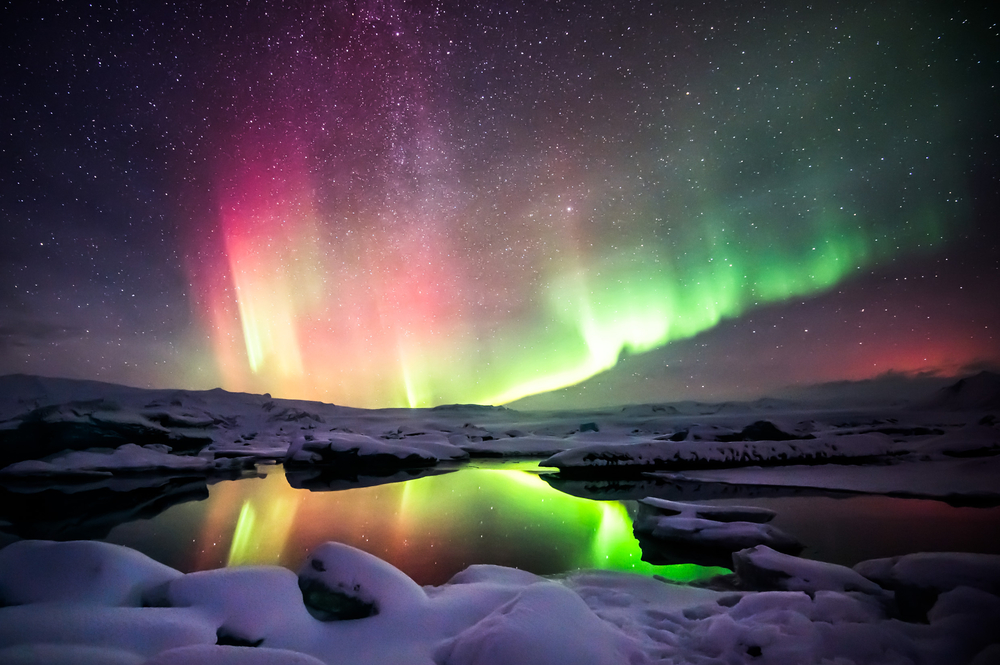
Cheapest Time to Visit Iceland
Unfortunately, Iceland is one of the more expensive countries to visit. We have gone over and over because we believe the experience is worth the money .
However, there are things you can do to make your trip much less expensive. One of those things is visiting during the Iceland off-season.
If it is your goal to do Iceland without dumping a ton of cash, we absolutely recommend the shoulder seasons or winter. Visiting right before or right after the high season of summer can save you a lot of money.
If saving money is a high priority, winter is absolutely the best time to visit Iceland. And pro tip: use grocery stores to cut down on costs even more!
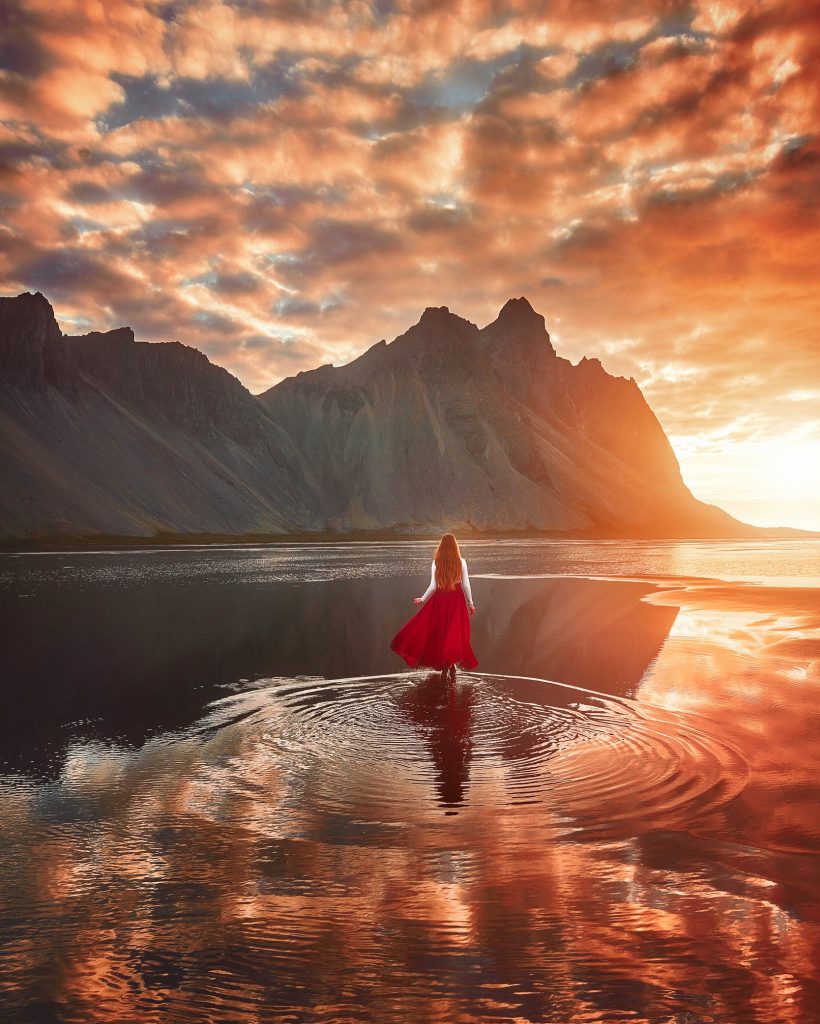
Iceland Weather Breakdown by Month
So far we have been referring to entire seasons, but we know that is kind of broad. Especially when you are planning the trip of a lifetime!
That is why we are going to break everything about Iceland Weather down month by month . This way you can know exactly what to expect.
After all, sometimes the best time to visit Iceland is simply when it best fits into your life. Whenever you make the trip, our month-by-month breakdown will help you make the most of it.
Iceland Weather in January
Happy New Year! January is a great time to visit Iceland. During this time of year you will find highs of about 36 ° F and lows of about 27 ° F.
Is that warmer than you expected? For a country named after ice, Iceland’s winters are actually quite moderate when compared with a lot of other places in the world!
That being said, January in Iceland is the coldest and windiest month. You will want to bring warm clothing and dress appropriately! Expect lots of snow and ice.
Iceland Weather in February
Honestly, the temperatures do not change much in February. What does change is the hours of daylight!
At the beginning of January, you will only get about 4 hours of daylight a day. By the end of February, this increases to about 10 hours.
February is a great month to come because there is more daylight but the crowds and costs are still at a minimum. Check out our post on things to know before you visit Iceland in February!

Iceland Weather in March
March continues with the increase in daylight hours, with about 13 hours of sunshine a day by the end of the month.
Winter weather continues in Iceland in March , although it starts sticking more to the mountaintops and less to the streets. As with most places, the weather is also better in southern Iceland than in northern Iceland.
However, it is still cold pretty much everywhere. We are getting closer to spring, but you would not really know it yet. The temperatures are still averaging between 27 ° F and 36 ° F.
Iceland Weather in April
The weather finally begins to make a bit of a change in April. Temperatures range between 32 ° F and 41 ° F during this warmer month.
What is more, there is a lot less snow! Spring starts to show its face about this time, with the country beginning to green back up again. Migratory birds start to return, including puffins.
We are also looking at around 17 hours of daylight in April as we officially move out of the low season and into the shoulder season. Don’t forget to check out this post about visiting Iceland in April!
Iceland Weather in May
May is seriously one of the best times to visit Iceland! Especially if you love the sun! The days have 20 hours or more of sunlight. It is also the driest month, with the least rainfall.
The highs are also much closer to 50 ° F, which means you almost do not even need a jacket depending on where you are from.
Of course, you will still want to bring your jackets . While the weather is much more temperate, there will still be some cold days. However, it is totally livable and the country is also becoming so much more green!
Iceland in May is also still shoulder season, which means you will not have to try so hard to find your own space while enjoying the sunshine.
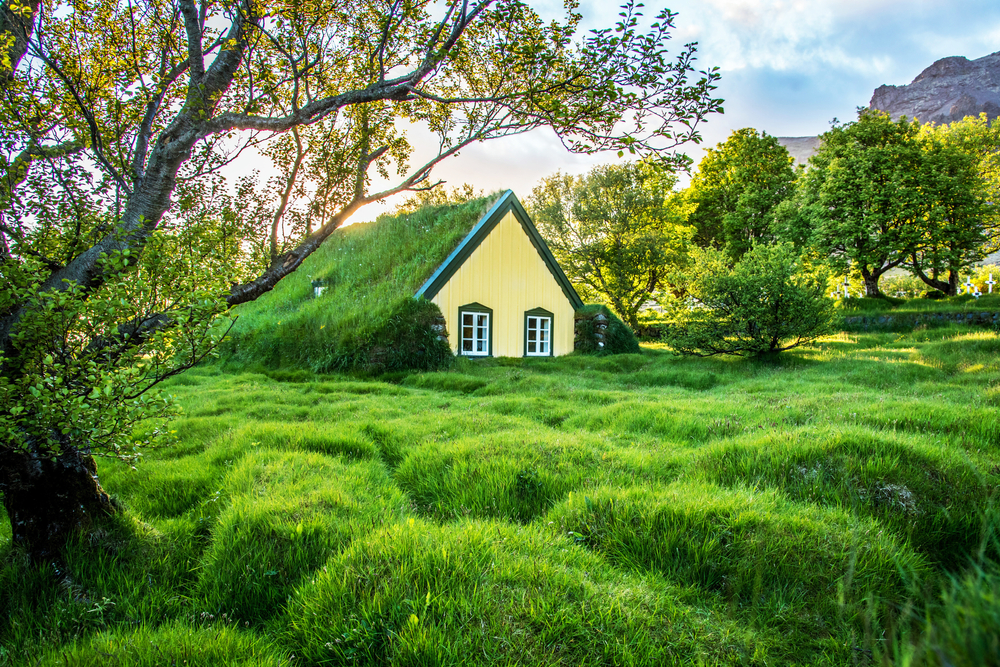
Iceland Weather in June
Welcome to high season! While it is called the high season because it is most popular among tourists, June in Iceland is also the high season for the longest days.
If getting the most out of each day is important to you, then June is the best month to visit Iceland. You can explore for many more hours in daylight.
June nights only last for about 3 hours, beginning around 11:30 PM! Yeah, blackout curtains are a big thing in Iceland summers!
While the highs average around 52 ° F, they can get much higher than that. June is the beginning of summer, and also the beginning of real warmth.
Iceland Weather in July
Now, if you are interested in heat rather than warmth , July might be a better time to visit Iceland. It is the best time of year to visit Iceland for heat, as the hottest month of the year. It is also the least windy month.
The weather in Iceland in July is generally extremely pleasant during this time of the year. While the nights are a little longer, at about 4 hours long, they do not increase by much!
Keep in mind that “hot” does not mean the same thing in Iceland as it does in other places. The average highs are around 56°F. That is part of why it is one of the most popular times to visit because it does not get any warmer than this.
Iceland Weather in August
August is the last month of the high season. While the beginning of the month is still as warm as July, temperatures start to go down by the end of the month.
August is the best time to go to Iceland if you do not mind the crowds due to the fairly standard daylight hours. The sun sets around 9 PM and rises around 5 AM. August has the least cloudy days as well.
Do keep in mind that August in Iceland goes quickly from summer to fall. By the end of the month, the slight bite to the air will have you wishing for warm pumpkin pie and spiced apple cider.
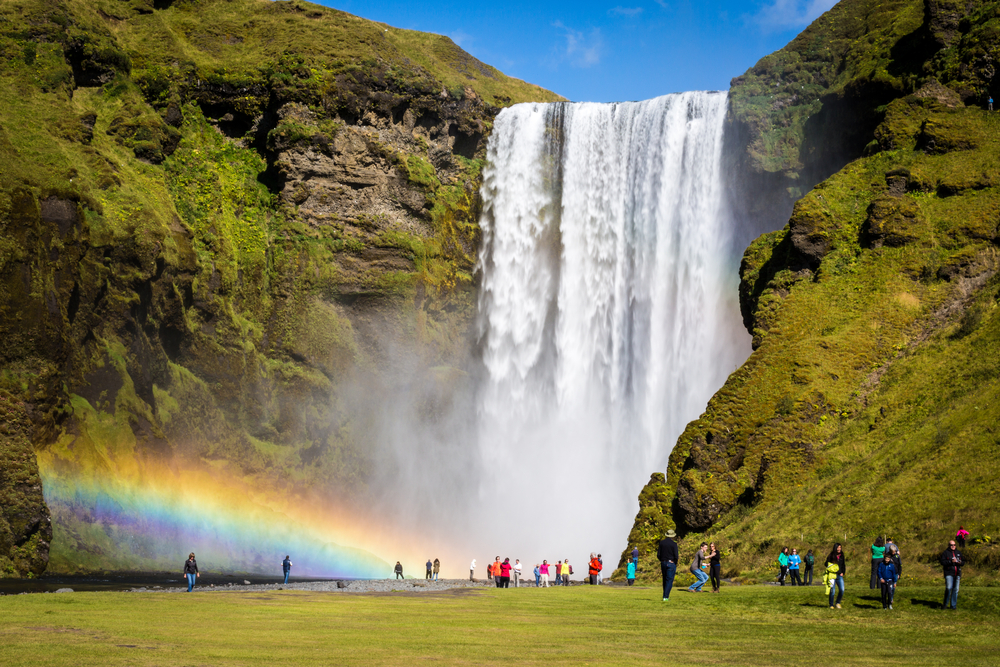
Iceland Weather in September
September still has great sunshine for Iceland, but it does go down to just below 12 hours by the end of the month. It is the warmest month with a chance to see the Northern Lights.
Temperatures are still quite nice, and we are back in shoulder season. This means that you can enjoy the nice weather and decent daylight hours without all the crowds of summer.
By the end of the month the likelihood of snow increases. If you visit Iceland in September , you will want to pack your warm clothing!
Iceland Weather in October
October in Iceland is still technically part of the shoulder season, but it is starting to feel much more like the low season of winter. Daylight is down to about 8 hours a day.
In addition, the average temperature is dropping back down to about 41 ° F. While it is not absolute winter yet, the weather should be taken into consideration at this point.
Bring warm clothes and waterproof ponchos. October is the wettest month in Iceland with an average of 14 days with precipitation.
Although it is colder, October is the best time to visit Iceland if you want to explore with as few crowds as possible. The roads are still open and you can still go pretty much everywhere you want.
Iceland Weather in November
Welcome to winter and the off-season in Iceland. November begins the coldest time of the year, although December and January are colder. This is when the snow starts to fully cover the island.
The average temperature is 38 ° F, but it can get much colder. Daylight only lasts about six hours.
We love to visit Iceland in the low season, and really do think it is one of the best times to visit Iceland. You just have to be prepared for the lower temperatures and the weather.
Iceland Weather in December
The last month of the year is one of the coldest months, second only to January. Temperature highs only reach about 39 ° F. It gets as cold as 21 ° F.
In addition, Iceland in December sees quite a lot of precipitation and snow. Daylight hours are generally pretty short.
However, this does make it and January the best time to visit Iceland for the Northern Lights! However, it is also the cloudiest month, meaning the lights can get obstructed.
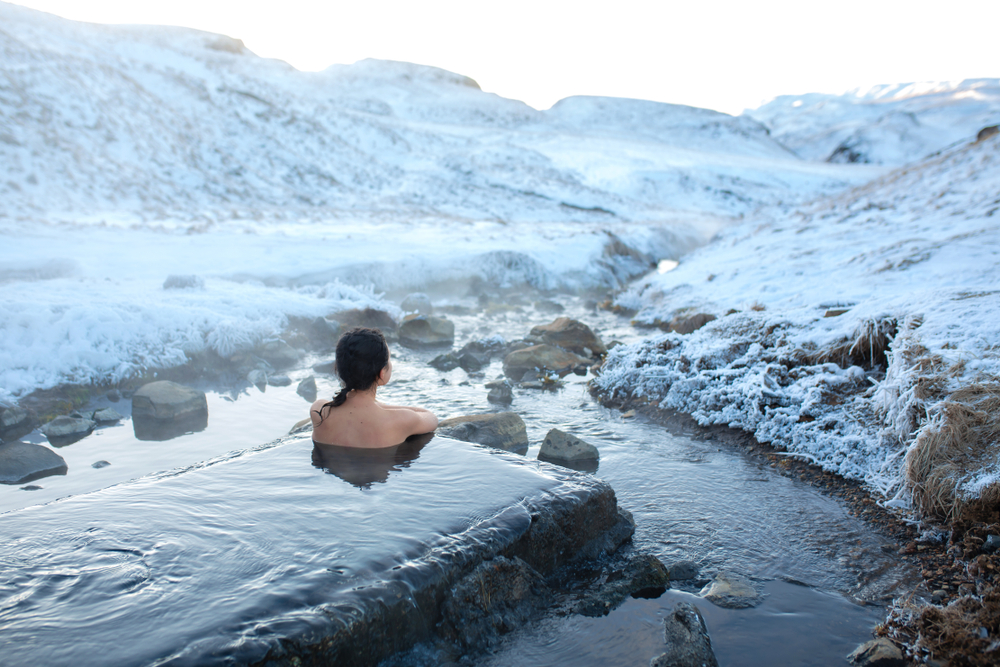
Iceland Events and Activities by Month
While the weather is a big deal, sometimes it is not as important as what you can do. After all, most weather is survivable if you plan and dress accordingly.
If you are more curious about what is going on than what temperature it will be, we have you covered! We have broken down the events and activities you can do during each month of the year.
You might be surprised by some of your options, especially during the winter!
Iceland in January
Can you even go wrong with New Year’s Eve when you are celebrating in a different country? Especially Iceland!
The country takes this holiday seriously with partying on New Year’s Eve, sleeping on the first, and shopping on the second.
And then there is Christmas–that is right, Christmas extends into January in Iceland, with the last day being on the 6th. If Christmas is your favorite holiday, then the end of December and the beginning of January is definitely the best time to visit Iceland.
Another great January tradition in Iceland is Thorrablot . This pagan celebration was canceled when Iceland went Christian but has had a resurgence in the last couple of centuries.
It is a week-long celebration of an Icelandic tradition that will not disappoint. If you want to feel like a local, prepare yourself for some things you have never eaten before, like rotten shark meat, boiled sheep’s head, and congealed sheep’s blood.
Iceland in February
February is beloved for the Winter Lights Festival . As a celebration of bright and happy things, you will love the way they light the streets with brilliant fluorescence to chase the darkness of winter away.
Öskudagur is basically Icelandic Halloween. The kids dress up in great costumes, and instead of the “trick or treat” chant, sing for their candy.
The Icelandic Food and Fun Festival is a fantastic festival that celebrates Icelandic cooking. And not even the kind that uses blood and rotten shark meat! It is all about using ingredients native to Iceland and enjoying all the culinary joys the country has to offer.

Iceland in March
Did you know that Iceland had its own prohibition period? Beer with an alcohol level of over 2.2% was banned for the majority of the 1900s but legalized again in 1990.
Iceland celebrates this legalization with the unofficial holiday, Beer Day, on the first of March every year! We think you can probably guess what the main activities are. (Drinking beer.)
DesignMarch is similar to the Food and Fun Festival in that it is a celebration of Icelandic creativity. The event features purely Icelandic products and goods.
Continuing in a similar fashion, the Reykjavik Folk Festival honors centuries of traditional music and song.
Iceland in April
Iceland celebrates Easter for days just like Christmas. Honestly, we do not know why more countries do not do holidays like this! Celebrating with just one day is so minimal!
Easter lasts from Holy Thursday to Easter Monday in Iceland. It is generally spent with family, rather than with huge parties.
April’s other holiday is the first day of summer. Given the dark of winter and the light of summer, and the very small in-betweens, Iceland actually does not traditionally recognize spring and autumn as seasons. So summer starts in April!

Iceland in May
The Reykjavik Art Festival is a big deal in May! People come from all over the world to participate in and experience creativity and fun.
If art is not your thing, May still might be the best time to visit Iceland with the Rite of Spring Festival. We know, we know, we just told you there is no spring in Iceland.
But when Iceland gave up its traditional calendar, they adopted spring and autumn into their new calendar. And they like to welcome spring with heartfelt jazz and folk music!
Iceland in June
It should come as no surprise that a country that willingly eats rotten shark meat celebrates the sea! Iceland’s Festival of the Sea happens in June, and it honors the country’s long tradition of seafaring.
Iceland also celebrates its independence from Denmark every June 17th. Like the 4th of July in the United States, Iceland National Day is a country-wide affair filled with parades, concerts, and general enjoyment of Icelandic culture.
Summer Solstice takes advantage of the Midnight Sun with all-night rock concerts. You can also join the locals in watching the sun set and rise all within the course of 2-3 hours.
Another unique Iceland festival is the International Viking Festival . It is a days-long holiday event that pays tribute to Iceland’s fierce Viking history.
Iceland in July
Innipukinn Festival is another music festival that happens in July. If you are not already getting the sense that you can hit up a music festival basically anytime you visit Iceland, well, you can. Icelandic people really love their music, okay?
They mix things up a bit with LungA , a festival specific to the Icelandic town of Seyðisfjörður . This festival still has music (as any good festival does) as well as art!

Iceland in August
Verslunarmannahelgi–say that five times fast, we dare you! Honestly, if you can pronounce it once we will be impressed. Verslunarmannahelgi happens the first weekend of August and is a quick bank holiday (kind of like Labor Day in the US). People generally celebrate by going camping.
Gay Pride comes the second weekend of August, and nowhere celebrates it as Reykjavik does! With parades, parties, and concerts, this is truly a vibrant and fantastic event.
If you like running, (like, really like) then the third weekend of August is the best time to visit Iceland! This is when the Reykjavik Marathon occurs, and it is another event that attracts people from all over the world!
The marathon wraps up with Menningarnott , a fantastic cultural celebration with cultural events, fireworks, and you guessed it, great music!
Iceland in September
The capital city of Reykjavik has two festivals in September, making it the best time to visit Reykjavik if you are wanting to have some fun during the shoulder season.
First is the Reykjavik International Literary Festival . This one is not just a big deal to Iceland, it is actually the biggest literary festival in Northern Europe!
Next is the Reykjavik International Film Festival . There is just something about literature and film that make them go hand in hand. Both of these festivals draw people from all over the world, but especially the film festival!
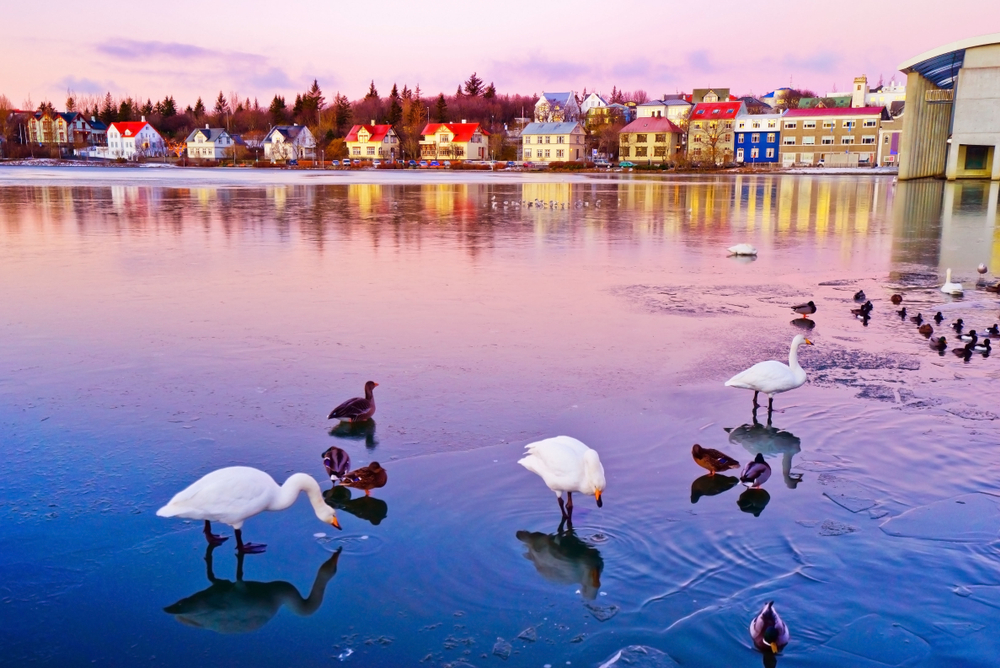
Iceland in October
Iceland Airwaves is another music festival but centers on indie and alternative music rather than the traditional folk and rock music of so many other festivals. Of course, folk and rock music still abound!
Iceland also celebrates Halloween in October, although they have not been celebrating it as long as other countries and do it a little differently. It is more of an adult holiday, but still features costumes!
Iceland in November
November does not have a whole lot going on in the realm of festivals and events. What it does have, though, it makes sure to do well.
Frostbiter is Iceland’s Horror Film Festival. So while Iceland does not have much going on in November, it is still the best time to visit Iceland if you love horror!
Iceland in December
Sorry not sorry, but Iceland has the best Christmas lights. Seriously, you have to check them out! Because the country is so dark all the time in December, they go all out with the Christmas lights.
And the way they make such a contrast against the dark? Unbeatable.
Everything about Iceland Christmas is simply unbeatable. From the concerts to the food to the country’s own unique and fun traditions, you will absolutely love it.
New Year’s Eve is filled with fireworks, bonfires, and singing. There are even costumes!
And they do not wrap things up and go to bed at midnight. Iceland New Year partying lasts long into the early hours of the next day.
December is the best time of year to travel to Iceland if you love all the December holidays!
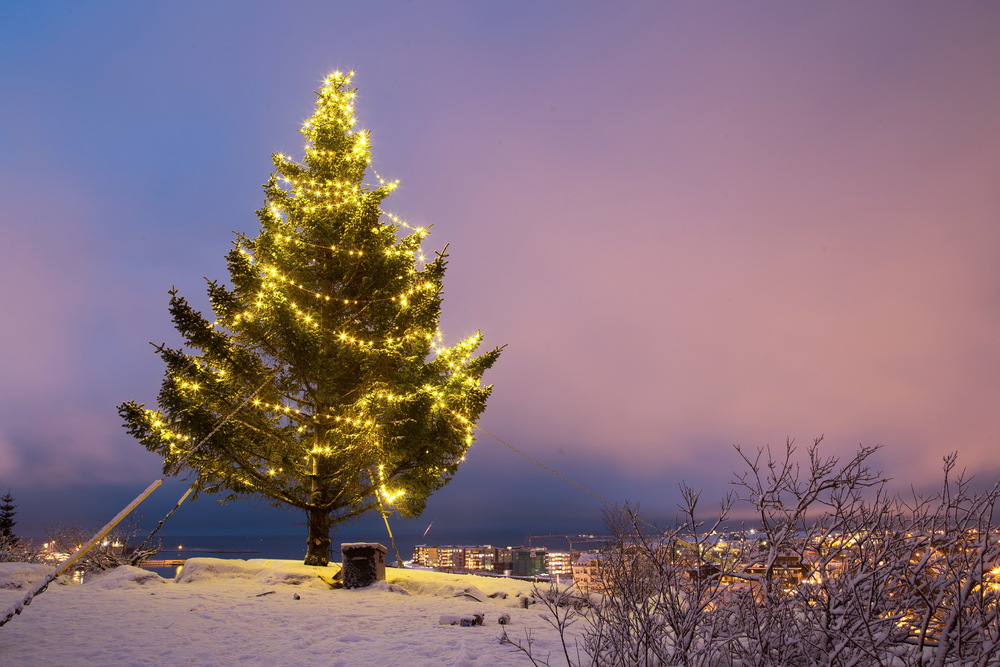
When is the Worst Time to Visit Iceland?
Honestly, there is really no bad time of year to visit Iceland as long as you plan accordingly. After reading this article, you should have a good idea of what each month has to offer in terms of weather, natural events, and festivals.
As long as you visit when you want to and pack according to the season , you will be in Iceland at the right time.
If you want to see the Northern Lights, summer is the worst time to visit Iceland. But, if you want clear roads for your rental car and warm weather, then winter is the worst time to visit.
So, When is the Best Time to Visit Iceland?
At the end of the day, the best time to visit Iceland is 100% up to you! Whatever your interests are and your budget will determine when you should visit this amazing country.
After all, this is your trip to Iceland. Plan it around what you want to see and do.
Do you want the midnight sun and purple, lupine flowers? Come during summer. Hate crowds and overpaying, but want decent weather? Give shoulder season a try. Does your Iceland bucket list involve the Nothern Lights or ice caves? Winter is your best bet!
Iceland is gorgeous year-round, and you really cannot go wrong no matter when you visit!

We hope our guide to the best time to visit Iceland has been helpful! Feel free to let us know when you decide to go in the comments below. What is your favorite time to travel to Iceland?

Reader Interactions
Leave a reply cancel reply.
Your email address will not be published. Required fields are marked *
Save my name, email, and website in this browser for the next time I comment.
- Search Please fill out this field.
- Manage Your Subscription
- Give a Gift Subscription
- Sweepstakes
- Travel Tips
These Are the Best Times to Visit Iceland
Here are the best times to visit Iceland for ideal weather, fewer crowds, and more.
:max_bytes(150000):strip_icc():format(webp)/Brandon-Presser-97a4675f1bb3487b88f06e5e2234eac6.jpeg)
Elizabeth Rhodes is a special projects editor at Travel + Leisure , covering everything from luxury hotels to theme parks to must-pack travel products. Originally from South Carolina, Elizabeth moved to New York City from London, where she started her career as a travel blogger and writer.
:max_bytes(150000):strip_icc():format(webp)/elizabeth-rhodes-25083778bc654f69b30ce8417affc82c.jpg)
Over the last decade, Iceland has become one of Europe's "it" destinations thanks to its ethereal — and highly photogenic — landscapes featuring ancient glaciers and rugged fjords.
Before you book your flight to this popular island nation, you'll want to think about everything you want to see and do on your trip because the time of year can determine what's available. Some attractions, like Iceland's famous hot springs , are open all year, while natural phenomena like the northern lights and midnight sun are best viewed during specific months. Here's a breakdown of the tourist seasons in Iceland:
- High Seasons: June to August and late December
- Shoulder Seasons: September to October and May
- Low Season: November to April, excluding holidays
Read on to learn about the best time to visit Iceland for whale watching, northern lights spotting, and more.
Irjaliina Paavonpera/Travel + Leisure
Best Times to Visit Iceland for Smaller Crowds
The busiest months in Iceland are June, July, and August, when most natural attractions are open and easily accessible. Iceland can stay relatively warm through the first week of October, so planning a September visit can be ideal since most crowds have thinned as children return to school. May, too, provides ample daylight for sightseeing, warmer temperatures, and fewer crowds.
The off-season between November and April is ideal for those looking to escape the hordes of tourists, as long as you don't mind the dark (by mid-winter, expect only five or six hours of daylight). Though some roads are closed, it's a glorious time to enjoy hot springs, backcountry skiing, and tours by snowmobile or jeep. You'll also have a better chance of spotting the northern lights. Tourism tends to pick up again during the holiday season, so avoid December if you're looking for a crowd-free vacation.
Courtesy of Visit Iceland
Best Times to Visit Iceland for Good Weather
During the summer months — July and August — the temperature in Iceland hovers around 50 to 55 degrees Fahrenheit, making it a popular time to visit. And June, with its 24 hours of daylight, sees just about as many tourists as the peak of summer. But even during this season, rain and intense wind are not uncommon. The island's fickle climate often means you can experience all four seasons in a single day.
The weather remains pleasant in September, with temperatures between 43 and 52 degrees Fahrenheit. May is similar, but if you're keen on exploring some of the more remote hills and fjords, it might not be the best time to visit, as some roads remain closed while they thaw from winter's snowy cover. For serious hikers, the best time to visit Iceland is during the summer, when all the mountain roads and famous trails are open and accessible.
Best Times to Visit Iceland for Lower Prices
Getting to Iceland can be relatively affordable, especially compared to other European destinations. Travelers from the United States and Europe frequently find flight deals — keep an eye out for sales on Icelandair and low-cost airline Play to save even more on your journey.
Accommodations, tours, attractions, and meals can be pretty pricey throughout the year, but you might be able to save money by visiting during the off-season, which is typically late fall through early spring, excluding December. Summer is usually the most crowded and expensive time to visit.
Best Time to Visit Iceland for the Northern Lights
You'll need three essential factors to see the aurora borealis: darkness, clear conditions, and a surge in solar activity. The northern lights are often elusive and can easily be marred by transient clouds. To avoid disappointment, travelers should never plan their trip to Iceland solely for the northern lights because the island's weather is too capricious (statistically, there are more clear nights in Yellowknife, Canada , for example.) The best way to optimize your chances of seeing the northern lights in Iceland is by visiting from mid-October through March, when you have extended hours of darkness, and by getting out into the countryside to reduce ambient light pollution.
Best Time to Visit Iceland for Whale Watching
According to Icelandic marine biologist Edda Elísabet Magnúsdóttir, the peak months to go whale watching in Iceland are June and July. During the summer, Reykjavík sees higher numbers of minke whales and dolphins, while orcas congregate in West Iceland along the Snaefellsnes peninsula during the first half of the year.
In northern Iceland, you'll have a wider window to enjoy visits from humpbacks, minkes, and dolphins, which ply the Atlantic from May to August; a few humpbacks even stick around until the end of the year. Blue whales pass through in the summer, too. For best results, head to the charming small town of Húsavík , where you can spot more than 20 species of whales on boat tours that leave from the harbor.
Best Time to Visit Iceland's Hot Springs
Hot springs are intrinsic to Icelandic culture for social as well as wellness benefits. Reykjavík's public pools are open year-round (and are especially invigorating during the dead of winter), but Iceland also has hundreds of hidden "hot pots" that tap directly into the geothermal activity under its lava-ridden surface.
Expert Icelandic mountaineer and cofounder of Midgard Adventure , Sigurdur Bjarni Sveinsson, offers the following advice for hot water hunters: "Check them out during September or, even better, the first half of October, when they're all still accessible by mountain road, but the crowds of tourists have significantly died down."
For travelers who want to visit the Blue Lagoon , the most famous geothermal spa, the best time to visit is during the off and shoulder seasons, when crowds are thinner.
Worst Time to Visit Iceland
Thanks to Iceland's stunning landscapes and seasonal natural phenomena, there's really no bad time to visit. Northern lights seekers flock to the country during the darker winter months, while visitors chasing more daylight opt for summer. Of course, those traveling in the spring and fall can take advantage of more moderate weather and daylight, so the best time to visit Iceland depends on what you want to see and do during your trip.
That said, the warmest months of the year are easily the worst time to visit if you're hoping to avoid the onslaught of tourists. July and August see the highest number of travelers, with big-ticket attractions like the Blue Lagoon, Golden Circle, South Coast, and Jökulsárlón being particularly overrun. If you're planning to visit during that time, consider exploring more remote corners of the island like the Westfjords or East Iceland, which have their own cache of fjords, vistas, and waterfalls that are just as impressive as the natural attractions surrounding the capital — if not more.
14 things to know before visiting Iceland in 2024

Feb 6, 2024 • 7 min read
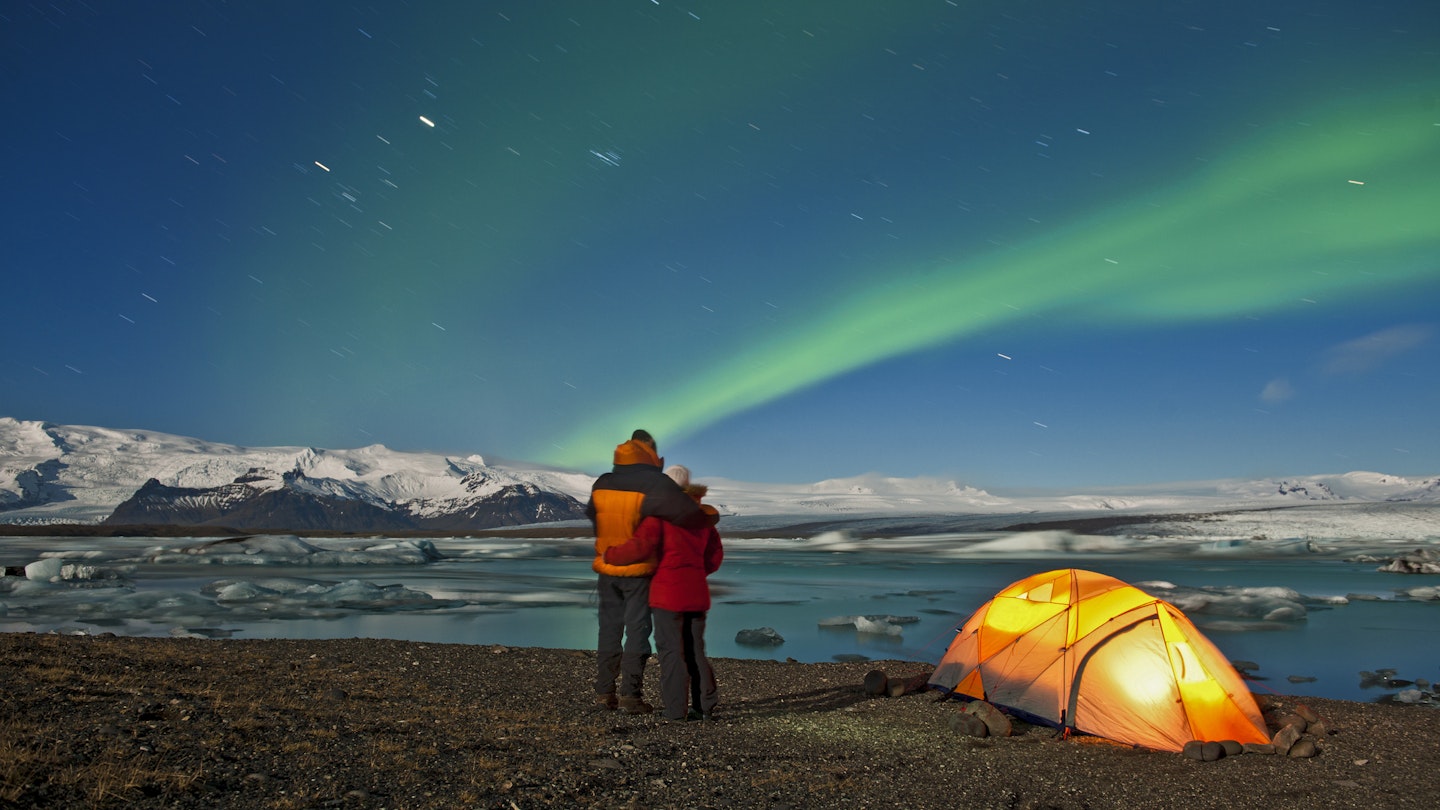
Here's everything to consider when planning your trip to Iceland © Cavan Images / Getty Images
The number of visitors to small, ravishingly beautiful Iceland is soaring.
But this tiny country wasn't always so popular, and there are many important things to be aware of ahead of your visit. In these wild landscapes, small errors can lead to life-threatening situations for both the visitor and the search and rescue operations mounted to save them.
This handy guide will help first-time visitors avoid social embarrassment, travel responsibly and have a safe and informed trip.

1. Keep up-to-date on Iceland's volcanic eruptions
Travelers heading to Iceland in 2024 will be aware there has been a series of volcanic eruptions on the Reykjanes Peninsula in south-west Iceland, not far from Keflavik International Airport, the main entry point to the capital Reykjavik . No flights have been affected so far, and the rest of Iceland is safe to visit.
The volcanic activity has only affected the town of Grindavik and the local area. All roads to Grindavik and the surrounding area are closed due to danger related to new crevasse openings. Hiking in the area is also prohibited. Icelanders have asked "lava chasers" to respectfully stay away.
The Blue Lagoon , one of Iceland's most popular attractions, also closed for a series of days due to seismic activity in the area but has since reopened.
The UK Foreign Office recommends checking alerts and advice from Icelandic Met Office and Safe Travel Iceland .
2. Use common sense to stay safe in the wild
Some tourists have been a little foolish in Iceland's incredible landscapes. Visitors have been seen strolling onto the Sólheimajökull glacier in sneakers and light jackets; a family attempted to drive across Langjökull glacier in a small SUV. We've also watched a teenager jump into 2°C (35°F) waters at Þingvellir National Park for a dare and witnessed tourists being sucked into the waves at black-sand Djúpalónssandur beach, one of Iceland's best .
Though Iceland's dramatic terrain can be perilous, there are usually no safety rails beside cliff edges and no ropes alongside plummeting waterfalls. Icelanders prefer not to mar beauty with obvious signs, or railings, instead they rely on people to be smart. If there are signs or barriers, heed them!

3. Plan ahead when hitting the road
Having your own wheels in Iceland is a wonderful treat: it allows you to roam the grand countryside at your leisure. Always prepare before setting out: investigate driving times and road conditions (via the Icelandic Road Administration ), weather forecasts, safety issues and, if you're walking in nature, trail conditions and requirements.
Plan an itinerary that's realistic for you. Ask locals, who will know the tricks and troubles of each place. You don't want to be caught on a hillside in fog or sleet (whether on foot or in your car) with no food and water and no idea how to get back to safety.
Safe Travel is a site run by ICE-SAR (Icelandic Search & Rescue), with travel and weather alerts and information, a smartphone app (useful in emergencies) and procedures for filing a travel plan.
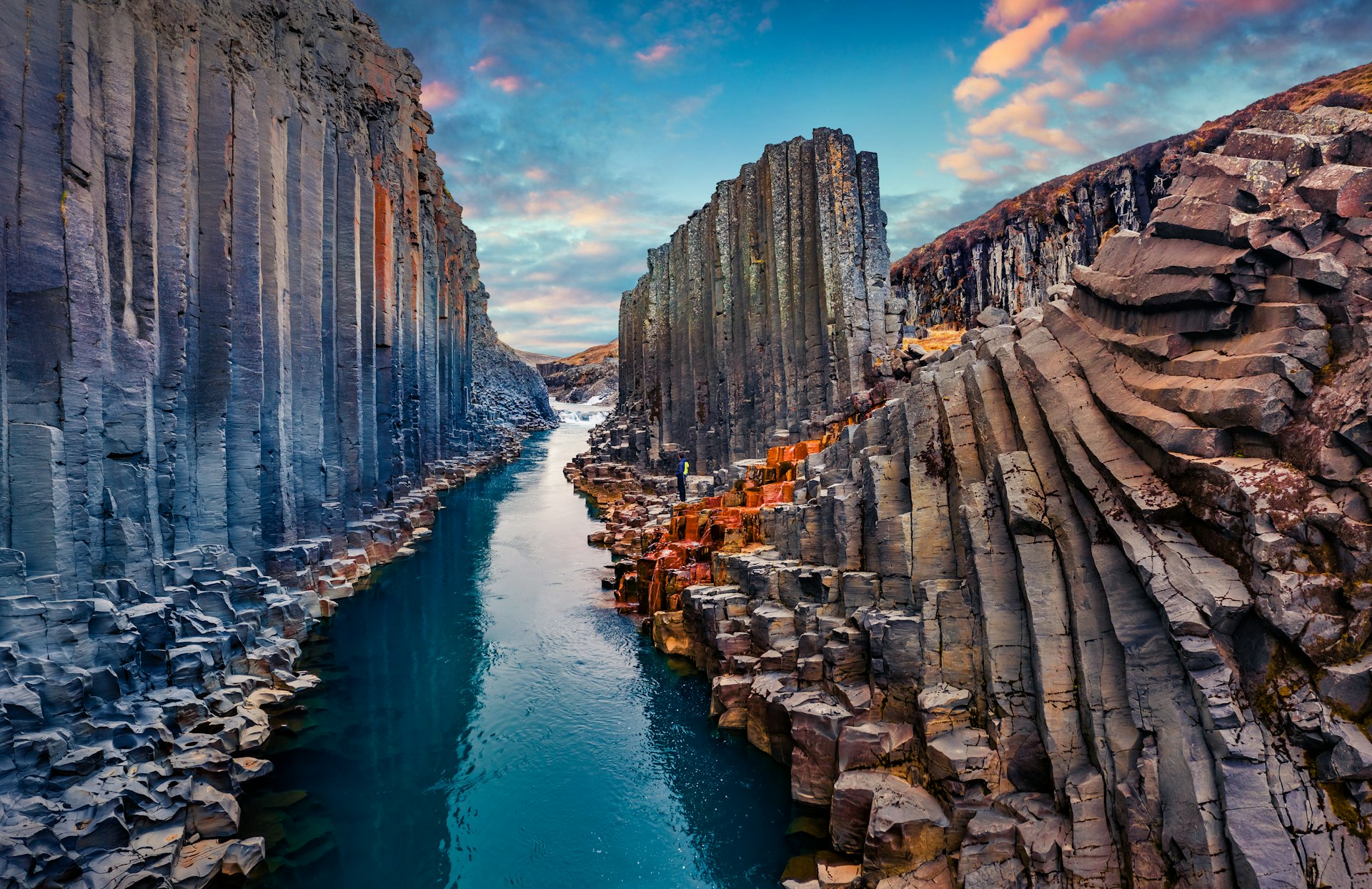
4. Do not drive off-road
Never drive off-road. It's illegal and incredibly damaging to the fragile environment. Cavalier tourists leave tracks where they've flouted the rule, and those tracks entice others to do the same. Even with a 4WD, stick to marked roads.
5. Always shower with soap before taking a dip in hot springs
Part of the unique gift of Iceland's volcanic landscape is the excellent natural hot springs you'll find from the town center to the fjord side. It's practically a national pastime to hit the local hotpot, soak and gossip. It is, however, an absolute mandatory hygiene and etiquette rule to wash thoroughly with soap before donning your swimsuit to enter the hot springs and pools.
Most pools are untreated with chemicals, so cleanliness is a real factor. Whether you're at the famous Blue Lagoon or the remote Krossneslaug, there's no quicker way to disgust an Icelander than to jump in dirty. You should also take your shoes off and put them on the rack provided as you enter the changing room.
6. Dress appropriately for hikes and pack proper outdoor gear
Bring good maps and appropriate gear, plus (you've heard it before): common sense. Consult a proper hiking or cold-weather packing list. Consider this – if you had no access to a car or building, would you be warm and dry enough in what you are wearing?
Never go hiking in jeans. Don't climb on glaciers without proper guidance. Don't try fording rivers in subcompact cars. And don't go camping without hardcore waterproof tents. With proper gear you can relax and enjoy all that beauty, no fear required.
Being prepared can open up great wilderness areas such as the Westfjords' beautiful Hornstrandir Nature Reserve , known for its Arctic foxes, spectacular birding cliffs and unspoiled hiking and camping.
If you need additional equipment once in Iceland, Reykjavík has a bevy of suppliers for gear purchase or rental, including Fjallakofinn .
Another good information source is Ferðafélag Íslands (the Icelandic Touring Association), which runs many huts, campgrounds and hiking trails.
7. When driving, stick to the right road for your vehicle
Know which roads are accessible in the type of vehicle you're driving. Beyond Iceland's main Ring Road (Route 1), fingers of sealed road or gravel stretch out to most communities until you reach the F Roads, bumpy tracks only passable by 4WD.
F roads are truly unsafe for small cars. If you travel on them in a hired 2WD, you will also invalidate your insurance. Steer clear, hire a 4WD or take a 4WD bus or super-Jeep tour. Similarly, trying to ford a river in a 2WD vehicle or low-slung 4WD is asking for trouble.

8. Take a tour of the more remote or dangerous landscapes
Iceland's tour operators are a professional and knowledgeable bunch and can get you out into rugged country via super-Jeep, amphibious bus, snowmobile, helicopter and more. Going on a tour can offer insights and guidance through dangerous landscapes you shouldn't tackle alone.
9. Understand the impact of tourism on Iceland
Iceland has a population of around 366,000. Before travelers started arriving in droves (with numbers that topped 2 million per year in 2019), most Icelandic sights , from thundering waterfall Skógafoss and basalt beach Reynisfjara to the wild interiors at Landmannalaugar & Þórsmörk, had no need for big car parks, safety placards or hordes of park rangers.
Developing an infrastructure that can cope with its appreciative new visitors while maintaining the untouched feeling of one of the world's most unique landscapes has been a major challenge for Iceland.
10. Travel responsibly and sustainably
Remember the basics of responsible travel: don't litter, reduce your environmental footprint, leave places better than you found them, and protect wild animals and natural flora. This applies to popular sights like the Golden Circle as well as the wild interior where it's just you, the glaciers and volcanoes.
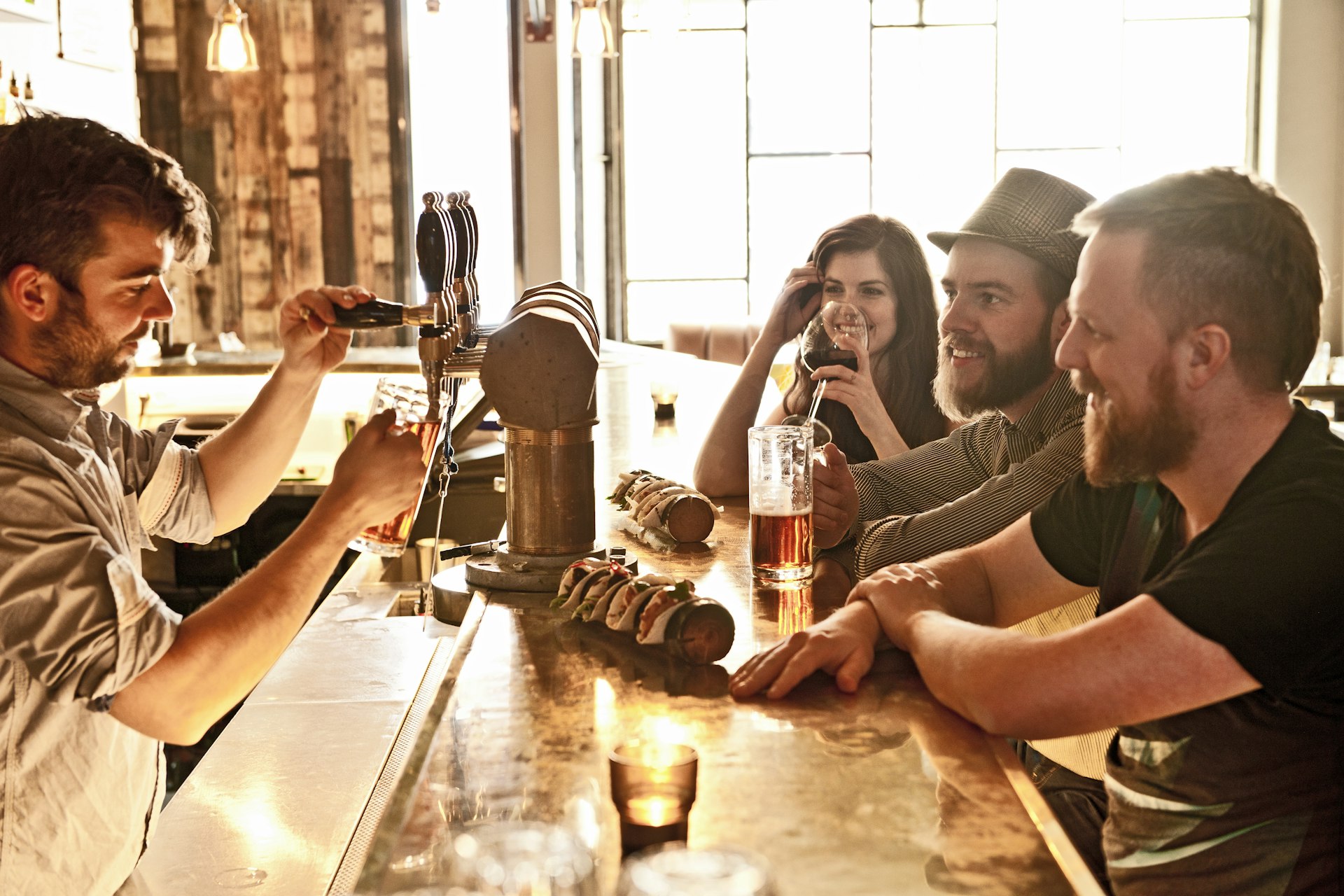
11. Appreciate the open-minded creativity of Icelanders
Icelanders are a generally hardy and open-minded group with a dry but vibrant sense of humor. They tend to speak impeccable English and are game for a chat, or to tell you about their favorite places to go. Respecting local etiquette and laws (along with not whingeing about the weather, or how hard it is to get to the natural wonders) will go a long way in endearing you to them and open opportunities for local connections.
They are also broad in their curiosities – it seems like half of Icelanders are in a band or making some sort of art or craft. They're used to thinking big and having fun. Why not get out there and join them.
12. Take the weather seriously
You may encounter bus tours and droves of visitors in popular places, but Icelandic weather is highly volatile, no matter where you are. A sunny day can quickly turn to snow flurries, and the stakes get even higher as you head into the true wilds. Never underestimate the weather – plan ahead with forecasts from the Icelandic Met Office .
13. Remove your shoes indoors
Icelanders often remove their shoes when they head inside. Pack flip-flops or slippers for indoors.
14. Yes, you can drink the tap water
It's pure and wonderful; Icelanders will look at you askance if you ask for bottled water.
This article was first published July 2015 and updated February 2024
Explore related stories
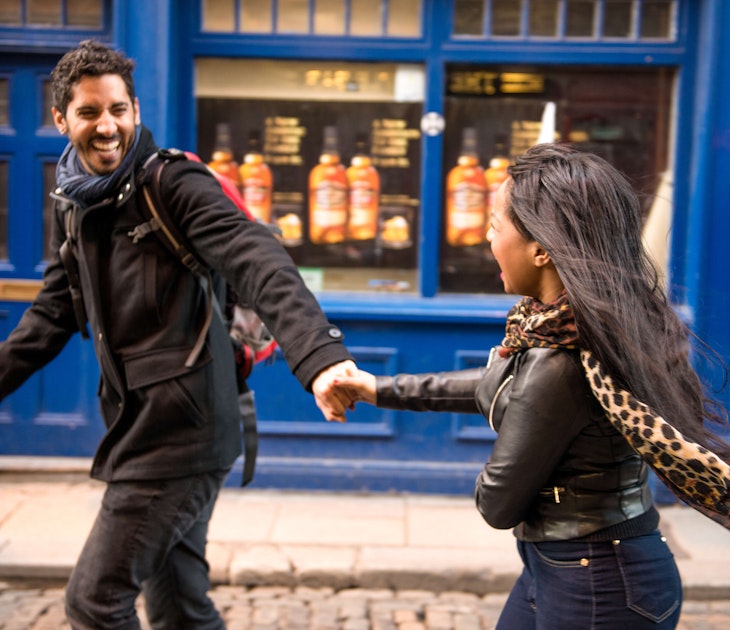
Destination Practicalities
Mar 30, 2024 • 4 min read
Who wouldn't jump at the chance to visit the Emerald Isle? Here’s how to check if you need a visa before setting off on your Irish adventure.

Mar 28, 2024 • 17 min read
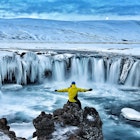
Mar 12, 2024 • 8 min read

Mar 7, 2024 • 5 min read

Jan 2, 2024 • 8 min read
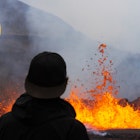
Dec 19, 2023 • 6 min read

Dec 1, 2023 • 6 min read
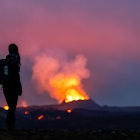
Nov 13, 2023 • 5 min read
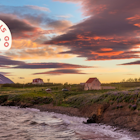
Nov 3, 2023 • 4 min read

Jan 2, 2023 • 12 min read
Thanks for visiting nordicvisitor.com! For the very best browsing experience on our website, we urge you to upgrade to the most recent version of your browser . Some of our site features may not function properly on older versions.
Iceland is open: volcano update
- Search Suggested Results View All Results
- EUR (€)
- GBP (£)
- Self-Drive i
- Privately Guided i
- Guided Small Groups i
- Multi-Day i
- Northern Lights i
- Honeymoon & Romance i
- Solo Travel i
- All Types & Themes
- All Iceland Tours
- Best Sellers
- Special Offers
- Book With Confidence i
- ICELAND IS OPEN i
- Iceland Volcano Update i
- Why book with us i
- Travel Update
- Booking Terms i
- Sustainability Policy i
- Iceland at a Glance i
- Useful Information i
- Iceland Attractions i
- Iceland Blog i
- Scandinavia
- Switzerland
- United Kingdom
- Manage Booking
- Privacy policy
Iceland Bíldshöfði 20 110 Reykjavík +354 578 20 80 View Map
Sweden Scotland View Details
BEST WAYS TO SEE ICELAND
No matter the time of year, there are many ways to experience Iceland's incredible attractions. From short breaks in Reykjavik with guided day tours, to longer journeys around Iceland's scenic Ring Road, an adventure awaits you with a custom tour designed by the local travel experts at Nordic Visitor.
WAYS TO TRAVEL IN ICELAND
There's no singular "best way" to visit this amazing country. Depending on the season and how many days you can stay, there are many options for seeing Iceland's top attractions.
5 days or less You can visit some of Iceland's most famous sights, including the Blue Lagoon and Golden Circle route, with as little as 3 days in Reykjavik. Guided excursions from the capital city are available year-round, even at Christmastime. Within Reykjavik itself there are numerous attractions, including thermal pools, whale watching cruises, northern lights tours in wintertime, museums, art galleries and more.
5 – 7 days With up to a week in Iceland, you can branch out from Reykjavik and explore more of West or South Iceland on a short road trip, an activity-packed Reykjavik city break or a guided small group tour. This allows more time to engage in outdoor activities and take in sights such as waterfalls, glaciers, hot springs, geothermal pools and more.
7 days or more in Iceland With a minimum of one week, you can take a journey around the Ring Road (Route 1) and experience each region's dramatically shifting landscapes, from mossy lava fields and rocky sea cliffs to volcanic black sand beaches and moonlike geothermal areas. However, to experience this scenery at a relaxed pace, as well as discover some hidden gems along the way, we recommend a self-drive tour or guided small group tour of at least 10 days or more. With 14 days or more in the summertime, you can even experience the remote, beautiful West Fjords region.
When to visit Most of Iceland's popular attractions are accessible year- round. If you want long daylight hours for driving and sightseeing—and the mildest weather, then May to September is a good time to visit. For a chance to see the northern lights, plan your visit between October and mid-April when the nights are dark.
Need some help finding your perfect trip to Iceland? The local travel experts at Nordic Visitor can suggest a tour package or even tailor an itinerary depending on your interests. Visit this page to get started on planning your once-in-a-lifetime travel experience in Iceland.
— WHY US?
Why book with nordic visitor.
- Hassle-free & seamless travel experience
- Flexible & customisable tour options
- Value for your money
- Professional service from local experts
- 24/7 emergency helpline during tour
Explore at your own pace with a car
Enjoy the freedom of a road trip, but with a helping hand. Here are some self-drive tours in Iceland you might like.
Iceland Full Circle Classic
South & west iceland classic, iceland complete classic, south iceland at leisure, iceland ring road express, iceland full circle at leisure, iceland grand tour, iceland road trip, south & west iceland at leisure, south iceland classic, south iceland & into the glacier, iceland full circle classic - winter, south iceland at leisure - winter, south & west iceland classic - winter, christmas & new year’s in iceland, northern lights & new years eve fun, glacier lagoon & northern lights, iceland full circle at leisure - winter, south & west iceland at leisure - winter, south iceland & into the glacier - winter, romance around iceland, highlights of westfjords, north & west iceland, highlights of westfjords & west iceland, south iceland classic - winter, 4x4 highland adventure in the south, join a guided small group.
Explore Iceland with like-minded travellers and an experienced local guide with one of these small group tours.
Natural Wonders of Iceland
Highlights of the Ring Road
Scenic South Iceland
Geysers, volcanoes & glacier lagoon, complete iceland, iceland full circle & the westfjords.
1166521 ISK
1049869 ISK
The Best of South & West Iceland
Wonders of the westfjords, natural wonders of iceland - winter, northern lights circle tour, winter highlights & northern lights, ice cave & glacier lagoon.
Best of South & West Iceland - Winter
Enjoy a city break with day tours.
Stay in Reykjavik and see the countryside on planned excursions. Here are some of our favourite multi-day tours.
Best of South Iceland
Golden circle, south coast & blue lagoon, best of south & north iceland, golden circle, south coast & mývatn, classic south coast, golden circle classic, golden circle & blue lagoon, active iceland, snowmobiling, ice tunnel & golden circle, new year’s & northern lights, best of south iceland & new year's eve party, a new year’s to remember, northern lights, super jeeps and nye party, christmas & northern lights, christmas in iceland, reykjavik, waterfalls, northern lights, new year’s in iceland, golden circle, northern lights & nye party, a christmas to remember, super jeeps, glaciers & blue lagoon, best of south iceland - winter, golden circle classic - winter, golden circle, blue lagoon & northern lights, best of south & north iceland - winter, golden circle, south coast & lake mývatn, active iceland - winter, classic south coast - winter, northern lights adventure in the westfjords, reykjavik, northern lights, golden circle express, golden circle express - winter, travel with your own local guide.
Experience Iceland’s famous sights and hidden gems on your terms with one of these privately guided tours.
The Natural Wonders of Iceland - Private
1599766 ISK
Highlights of the Ring Road - Private
1043480 ISK
South & West Iceland Classic - Private
1208962 ISK
Scenic South Iceland - Private
Iceland luxury adventure - summer, glaciers, geysir & blue lagoon retreat.
1177270 ISK
Iceland Luxury Escape at Leisure - Summer
2434168 ISK
South Iceland at Leisure - Private
1013560 ISK
Iceland Luxury Escape - Summer
Best of south iceland & blue lagoon retreat.
1638870 ISK
Northern Lights Circle Tour - Private
1217702 ISK
Winter Highlights - Private
Iceland luxury escape - winter, northern lights, south iceland & blue lagoon retreat.
1794264 ISK
Golden Circle & South Coast - Summer - Private
Land of the midnight sun - private 4x4 tour, south & west iceland classic winter - private.
1220182 ISK
South Iceland at Leisure Winter - Private
1026450 ISK
Golden Circle & South Coast - Winter - Private
Iceland full circle classic - winter - private.
1598386 ISK
Iceland Luxury Adventure - Winter
Northern lights, winter wonders & blue lagoon retreat.
1157452 ISK
Iceland Luxury Escape at Leisure - Winter
2328410 ISK
Iceland Luxury Adventure at Leisure - Summer
1695917 ISK
Iceland Luxury Adventure at Leisure - Winter
1639689 ISK
Highlights of Iceland in Luxury
1293652 ISK
Iceland Ring Road in Luxury - Winter
2602922 ISK
Iceland Ring Road in Luxury - Summer
2712070 ISK
EXPAND YOUR NORDIC ADVENTURE
Why not visit more than one Nordic country in one trip Check out these popular combination tours below.
Best of Scandinavia Classic
Train & cruise, highlights of scandinavia, sweden, denmark & norway, capitals of scandinavia & norwegian fjords, complete road trip of norway, sweden & denmark, capitals of scandinavia.
Countries Visited Norway, Sweden, Finland, Denmark
Best of Scandinavia & Finland Cruise
Scandinavian road trip.
Countries Visited Iceland, Norway, Sweden, Denmark
Best of Scandinavia & Iceland
Train, cruise & minibus, best of scandinavia classic - winter, capitals of scandinavia in winter, local travel agency.
As a travel agency with offices in Reykjavík, Edinburgh, Stockholm and Lucerne, Nordic Visitor knows how to make the most of your time in Europe. Choose from a variety of carefully curated tours that include must-see attractions as well as lesser-known highlights.
You can also make customisations to your itinerary by adding extra nights, optional activities, or upgrades to your tour. Or ask your personal travel consultant for advice and they will tailor your itinerary. This way you get a travel experience that is perfectly suited to you.
Your dedicated travel consultant will arrange all the local details for you. You get accommodation, activities, transport, and other services included in your package. If you need to rework your itinerary, we’ll handle it for you so you can relax and look forward to your getaway.
Different ways you can experience Iceland
We have tours for all varieties of travel styles and interests. See our options for exploring Iceland below.
Guided Small Groups
Multi-day tours, privately guided, northern lights packages, self-drive winter, best seller, what do our customers say.
The reviews speak for themselves. See what Nordic Visitor travellers said about their experience with us.
Scott, United Kingdom
Iceland full circle classic - winter, november 2023, we had an amazing time.
We cannot recommend our tour enough. We had an amazing time and have already told friends and family about it. Iceland is an amazing place and I am sure we will be back and will use Nordic Visitor again!
James, United States
Iceland full circle classic, september 2023, experience of a lifetime.
I primarily wanted to use Nordic Visitor as a resource for creating our 14-day trip itinerary, to help weed through what seemed to be an endless array of choices, and to help us to get the very most out of our time in Iceland. Yes, we could have pieced it together ourselves but I needed an advocate in Iceland, an advisor, and maybe a resource for us if issues were to arise. That piece of mind was important to my wife and me and I'm glad we chose them to frame our trip. It made it much easier to piece in the parts that were important to us to see and experience. That allowed us to just enjoy the trip and not get bogged down in the details of planning each and every moment.
There are so many things I could say about our experience, an experience of a lifetime and after posting snippets of our trip on social media I have found that several friends of mine want to know how we planned this trip. I told them the same thing I am saying here, save a little money if you want and plan it yourself or trust a reliable source like Nordic Visitor and let them give you the trip framework and essential advice. I would do it the same way if I were doing it over.
Dean, United States
Highlights of the ring road - private, july 2023, went off without a hitch.
Everything was well-organised and went off without a hitch. The private guide was amazing. He could not have been better. I highly recommend him to anyone considering a private guide as an option. He's extremely knowledgeable about the history of the area. He knew all of the best places to go and was entertaining and delightful as well. Accommodation was all spectacular.
Christopher, Australia
Winter highlights - private, november 2023, warm and engaging guide.
Great tour. The sights are of course amazing and the tour made the most of our time, weather and our interests/priorities. Driver and guide David managed all of these very well. He was also very knowledgeable and personally warm and engaging. Could not have asked for more.
Jerine, Canada
Natural wonders of iceland, august 2023, perfect for solo traveller.
A beautiful itinerary, exceptional guide and perfect weather made this a trip I will never forget. Nordic Visitor made the process easy, and Iceland opened her arms. My 10-day small group tour was perfect for a solo traveller who wanted to see it all.
Cynthia, United States
Best of south iceland, april 2023.
Working with Nordic Visitor was wonderful. Our travel consultant, Heddy, was quick to respond when we had a question or concern. She helped us plan a fabulous itinerary. Everything we booked through Nordic Visitor was fantastic. I have already recommended Nordic Visitor to friends, and I will continue to do so.

Kimberly, Canada
Iceland road trip, october 2023, trip of a lifetime.
Overall this was an amazing experience! A trip of a lifetime that I could never have planned myself. Any questions I had during planning were answered faster than expected and I felt safe and well looked after during the trip. Trip was smooth and hassle free.
Patricia, United States
Scenic south iceland, august 2023, 5-star experience.
Not only did we absolutely love every stop on the Scenic South Iceland tour, but prior to the tour we stayed for 4 days in Reykjavík. I appreciated Nordic Visitor's recommendations for things to do and places to eat there and felt highly supported by Marko, our travel consultant, in every regard to booking our flight and own hotel, day trips I was interested in, and taking public transport around. A definite 5-star experience!
Janice, United States
Winter highlights & northern lights, march 2023, i will certainly travel with nordic visitor again.
I cannot thank Nordic Visitor enough for providing me with a wonderful and memorable once-in-a-lifetime experience. Everything was seamless, from the pickup at the airport, to the excellent hotels, delicious food served and our friendly, knowledgeable guide, Jakob. Nothing was too much trouble - we all thoroughly enjoyed our experience in Iceland, and all came away with wonderful memories of many of the amazing sights of such a scenic country. We were even lucky enough to see the northern lights. I will certainly travel with Nordic Visitor again and would recommend them to anyone thinking about visiting the countries where they offer tours. Thank you Nordic Visitor!
David, Australia
Iceland full circle classic - winter, october 2023, many thanks to nordic visitor.
Absolutely amazing. No issues whatsoever. We saw it all from North to South and much of in between. From reindeer to whales and more beautiful waterfalls and volcanic bits than you could hope to see in a week. Every hour the scenery seemed to change dramatically. Just a great experience. Many thanks to Nordic Visitor.
Robert, United States
Romance around iceland, july 2023, best vacation we have had.
Everyone at Nordic Visitor were very responsive to all questions we had during our 30-year anniversary trip to Iceland. We had airline travel issues and the representative adjusted our itinerary so we were able to see the whole island. The accommodation were beautiful and everyone was so friendly. This was the best vacation we have had, we left Iceland relaxed!
Seth, United States
A new year’s to remember, december 2022, an amazing and unique experience.
Our tour was great! Went for our honeymoon and it was everything we wanted. First night we got to see the northern lights which were fantastic! Second day, most certainly our longest, visited several sites (Geysire & Þingvellir) and went snowmobiling on a glacier. Such an amazing and unique experience. The walking tour around Reykjavik was surprisingly educational and our guide pointed out things that we ordinarily would have missed. The NYE dinner was delicious and going out to see the firework displays by (what seemed to be like) everyone was something. Practically had to dodge fireworks! Our 4th day was spent at the Blue Lagoon; perfect after a night of partying! Our last day was nice and relaxing, did some final shopping before we headed off to the airport. Hope to go back & visit Iceland again!
Travel Guide
Be prepared for just about anything on your Icelandic adventure.
Þingvellir National Park
Þingvellir was declared a national park in 1930. A law was passed designating Þingvellir as “a...
The famed hot spring Geysir is located in the Haukadalur valley in southwestern Iceland. It was...
Gullfoss, or the ‘Golden Waterfall’, is a breathtaking two-tiered waterfall that drops 32...
What to pack
Layers, layers, layers! Come prepared for all type..
Driving in Iceland
Are you prepared for your road trip? Learn the rul..
Climate & weather conditions
How icy is Iceland? You might be surprised
Time & Daylight
When to expect sunrises, sunsets, northern lights ..
Our services
Whether you choose a guided tour or a self-drive vacation, all customers receive personalised service with a designated travel consultant , tailor-made quality travel documents, and our self-drive clients receive a hand-marked map that outlines their route, overnight stays and highlights along the way. Furthermore, Nordic Visitor has long-standing professional relationships with local tour operators , which are carefully selected by our staff and are recognized for consistent, quality service.
Book with confidence
- Protect your money & plans with our flexible booking terms .
- Get peace of mind with a 24/7 helpline during your stay.
- Enjoy personal service from Iceland-based travel experts.
- We’re here for you in case of unforeseen circumstances.
- 97% of customers say they’d recommend us to friends.
- As a local agency, we work closely with trusted suppliers.
- We’re a fully licensed and insured company in Iceland.
Whether you have queries about our tours or want to add activities to existing bookings, we’re here to help. Get in touch with our friendly team for any of your travel questions.
Our Icelandic phone number is +354 578 20 80
How about a live chat with one of our local travel experts?
Blog posts you might like
Top 10 experiences to have in iceland, what to wear in iceland : your guide, driving iceland's ring road: all you need to know, in brief: spending a day in reykjavík.
Whether you have a single question or a special request, we're here for you.


Splash Travels
45 Things You Should Know Before Traveling to Iceland
Posted: February 15, 2024 | Last updated: February 15, 2024
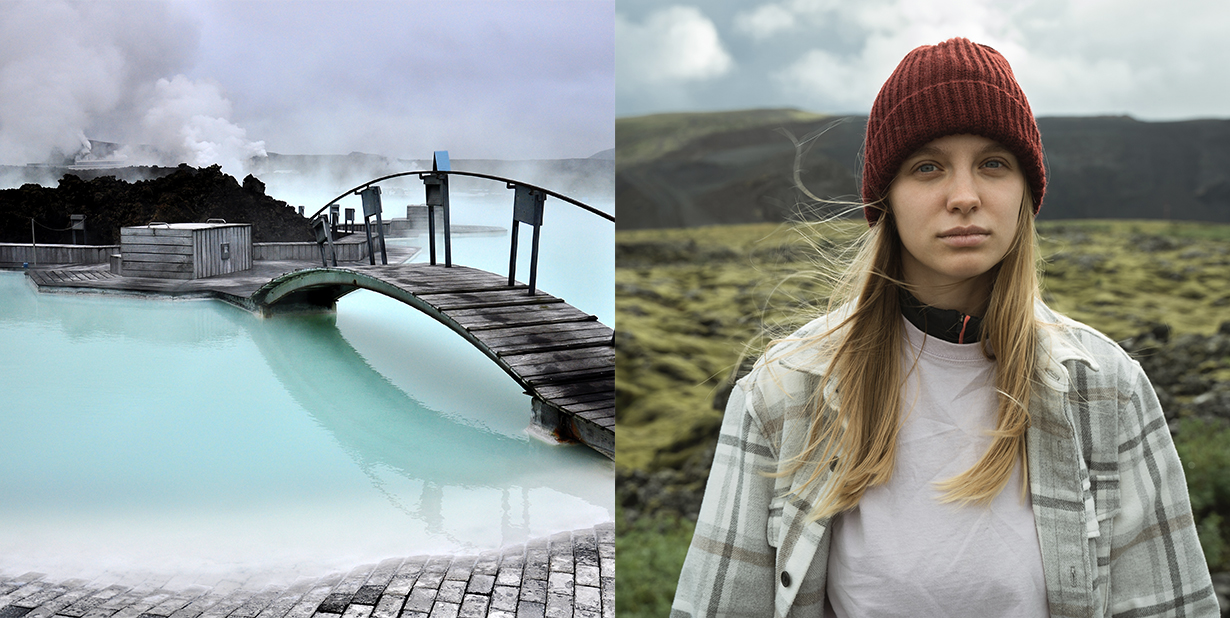
Iceland, the stunning Nordic gem, known for its beautiful lagoons, waterfalls, and their magnificent night sky.
But did you know that there’s no McDonald’s in Iceland? Or that pretty much the entire country is on a first-name basis?
Here are 45 weird and interesting things you should know about Iceland, The Land of Fire and Ice .
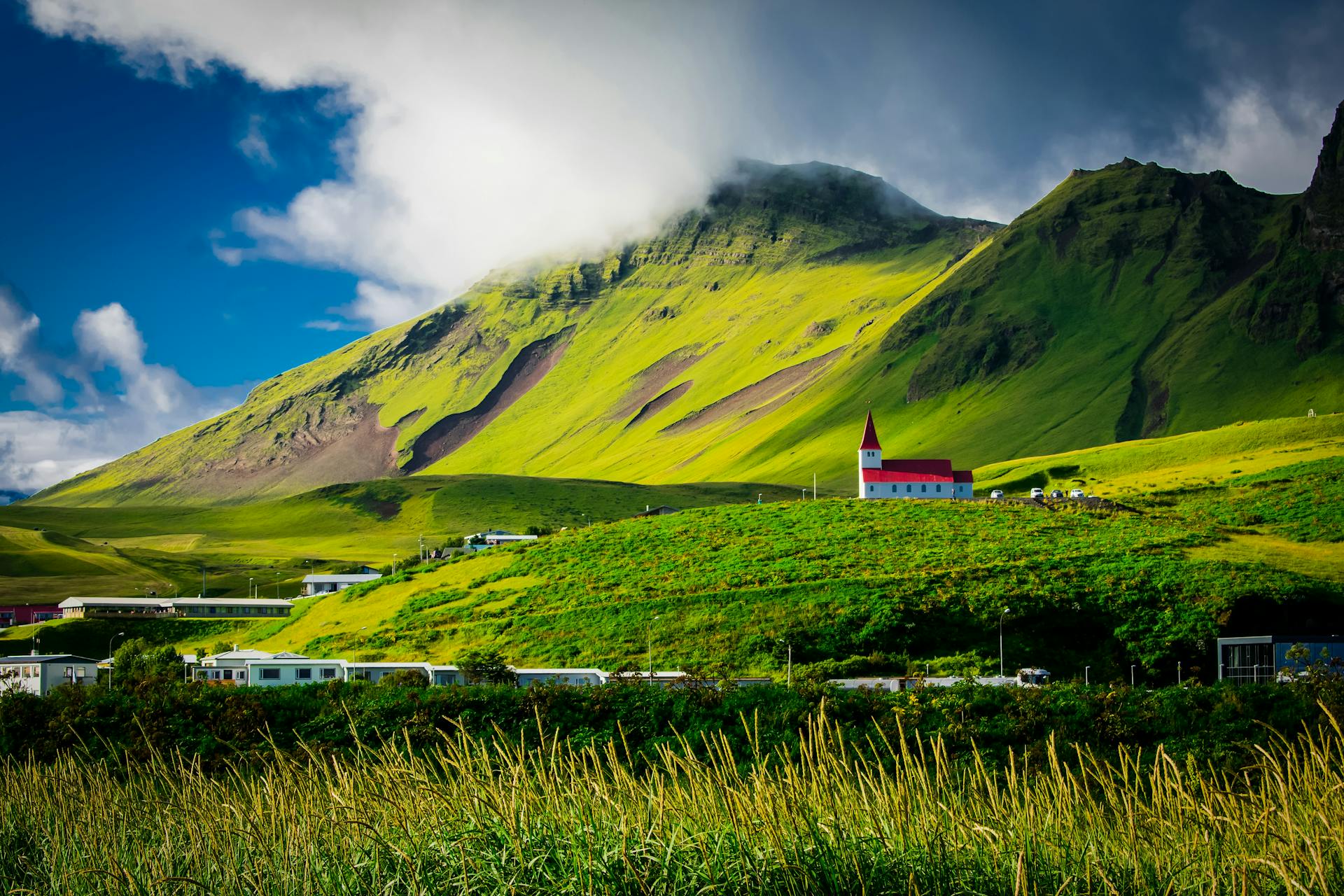
Iceland is One of the Last Countries to Have Human Settlers
Iceland is one of the last counties in the world to have human settlers. It was still uninhabited long after the rest of Western Europe had been settled.
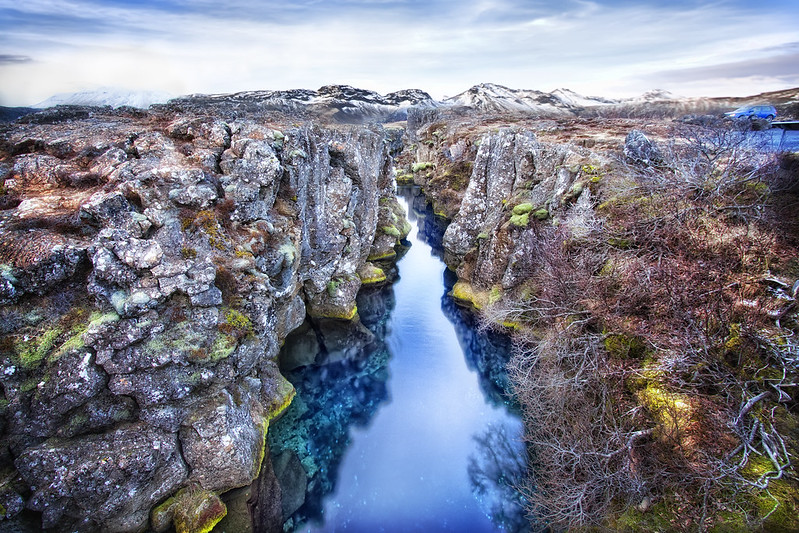
Iceland Had the First Parliament
Iceland has one of the oldest known parliaments in human history.
Dating all the way back to the year 930, the first national parliament was founded in Thingvellir—which is now a national park.
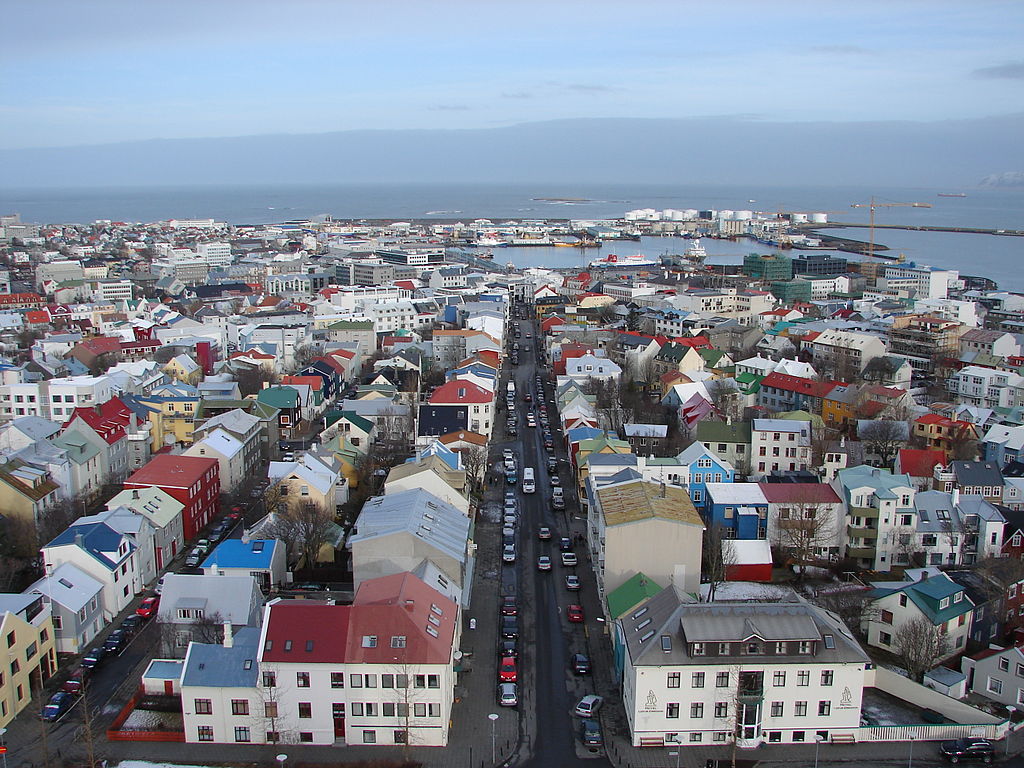
Iceland Has a Low Population
Iceland’s population is only about 350,000 —which is around 1/10th of the population of San Francisco.
They have about 8 people per square mile, with Reykjavik housing roughly one-third of the country’s entire population.
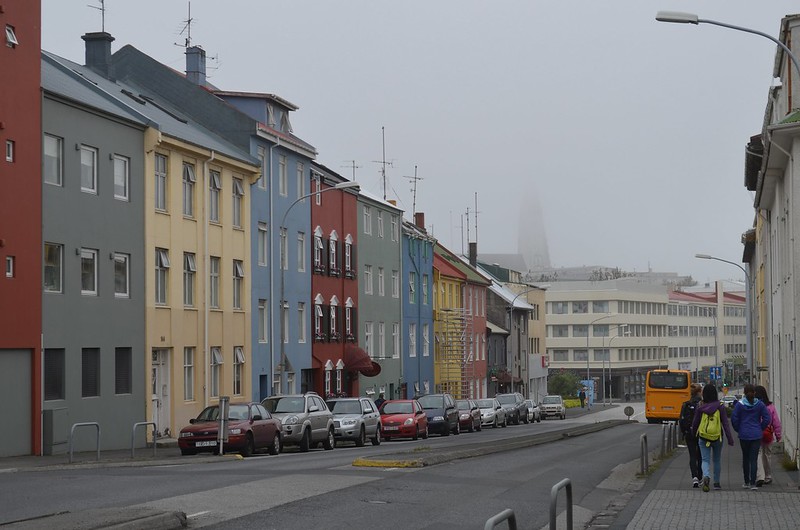
There is No Standing Army in Iceland
Iceland is known to be a fairly laid-back country with minimal unlawful activity going on—thankfully, because is it the only NATO country to not have a standing army, air force or navy.
It does have a small Crisis Response Unit (ICRU), but the staff do not carry arms or wear a uniform in most circumstances.

There is No McDonalds in Iceland
At one time, Big Macs were available—until the financial crash in 2008. Imported ingredients were hard to come by and prices soared leading to the shut down of all McDonalds restaurants in the country (which weren’t very many to begin with).
Even after things seemingly got better, Iceland chose to keep McDonalds outside their borders.
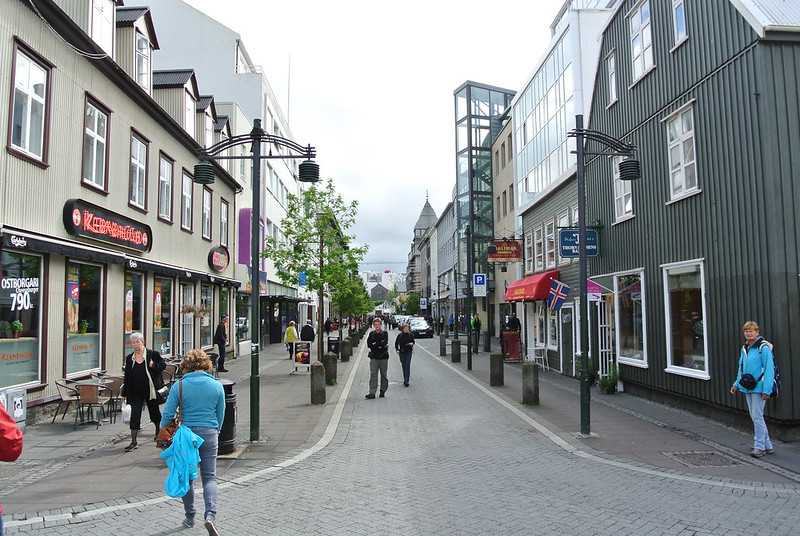
Iceland is a Free Country
Iceland is known as one of the freest countries in the world. It was ranked 4th in the 2019 Index of Economical Freedom, with high rankings for “labor freedom” and “government integrity”.
The country ranked 3rd in the world in a Personal Freedom chart by the Legatum Prosperity Index.
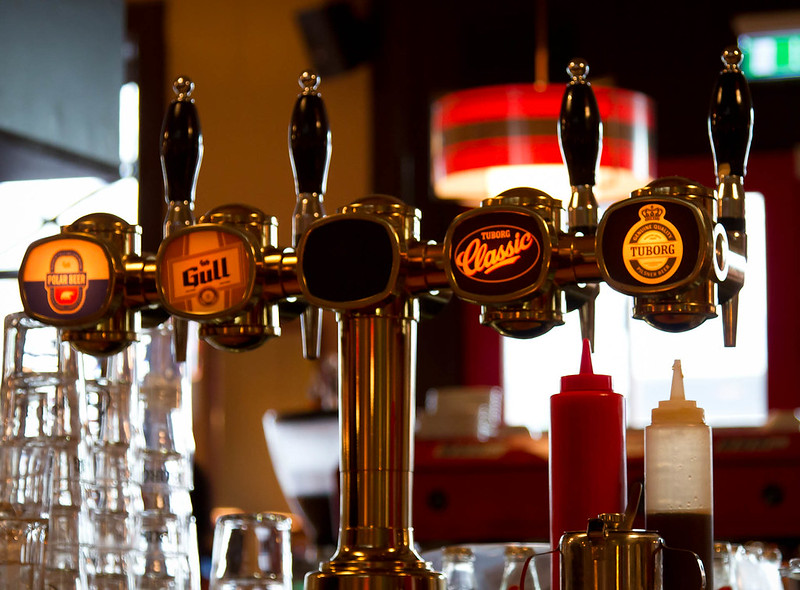
Iceland Has a Celebratory Brew Day
Back in 1908, Iceland voted on an alcohol ban—but that didn’t stick around because it started to affect their import/export business. So, instead, they put the ban on beer only.
The beer ban stuck around for 74 years, finally being squashed in 1989. The country now celebrates “ Beer Day”, on March 1st.

Iceland Had the First Female President
Vigdís Finnbogadóttir is an Icelandic politician who served as the fourth president of Iceland from 1980 to 1996. Vigdís is the first woman in the world to be democratically elected as president.
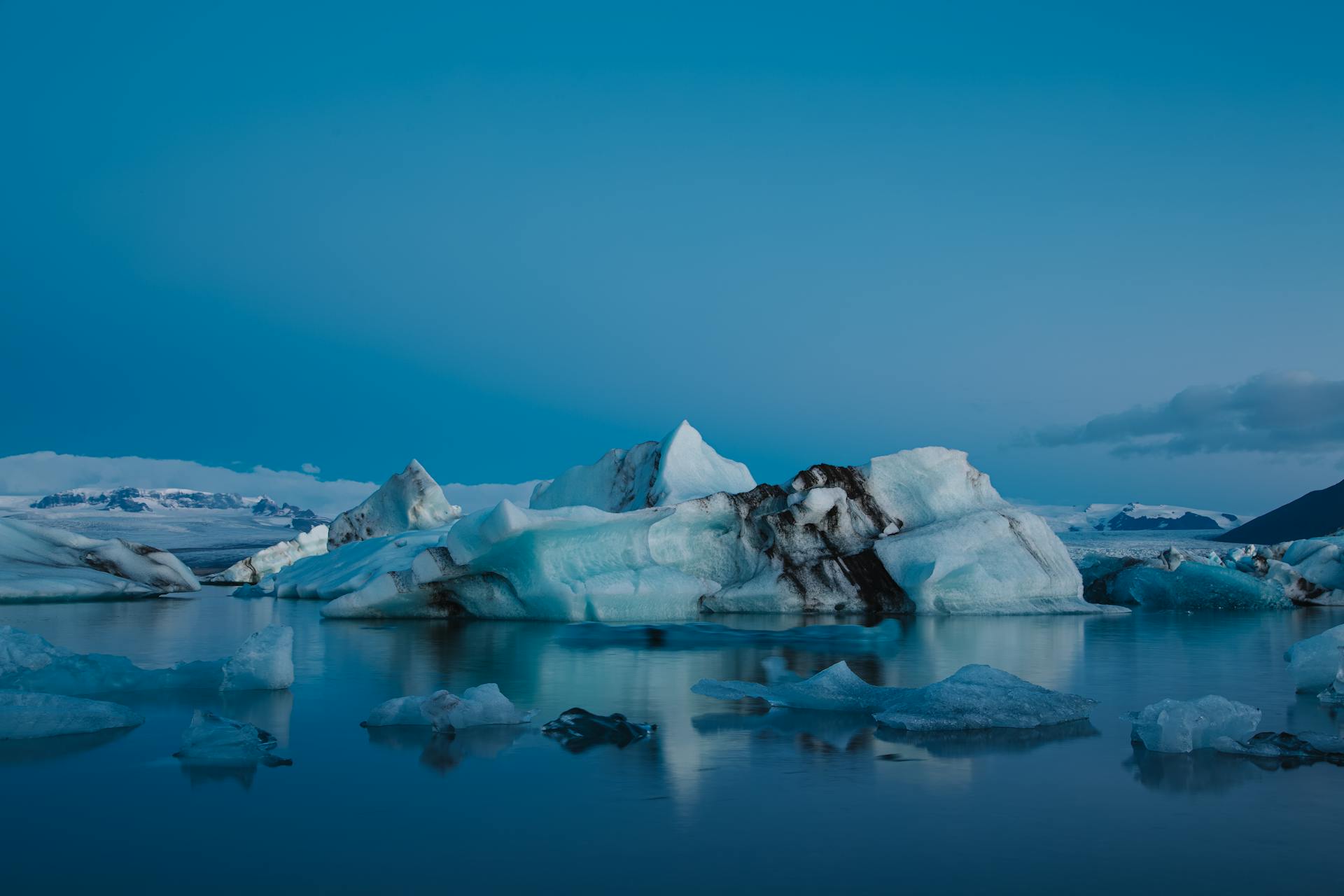
Iceland Has the Largest Glacier in Europe
Vatnajökull is the largest glacier in Europe . It covers over 8100 square kilometers and has around 30 outlet glaciers.
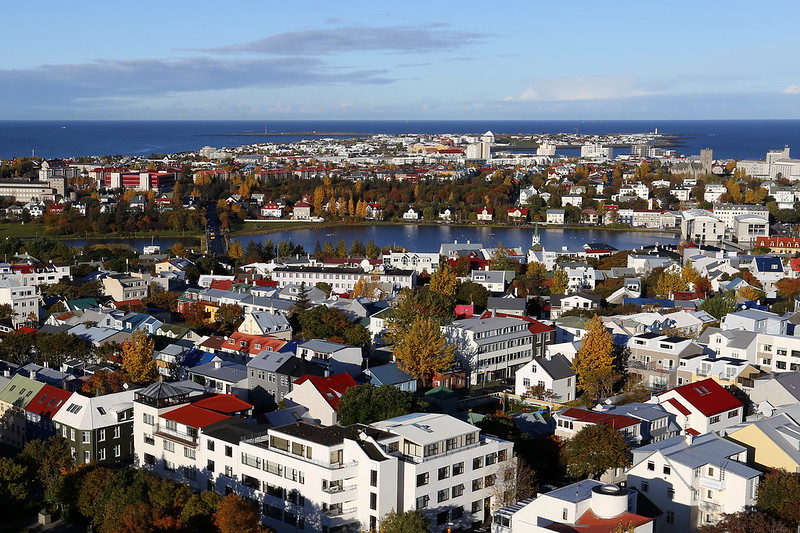
Iceland Has a Naming Committee
Iceland has a naming committee that approves or declines people’s names. There is an official register of approved Icelandic given names, and specific names that are not allowed.
For example, the letter C is not included in the Icelandic alphabet, so any name that begins with that letter is not allowed.
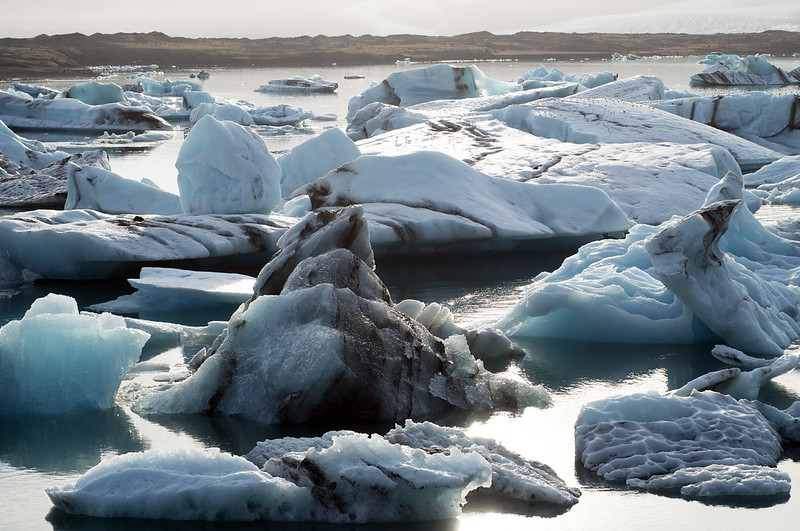
Iceland Has the Purest Water
Almost all of the water in Iceland is pure, refreshing and you can drink it from any and every tap in the country. There is no need for water purifiers, and bottled water is not regularly purchased or consumed by Icelanders, as there is no need.
The tap water is pure, and free!
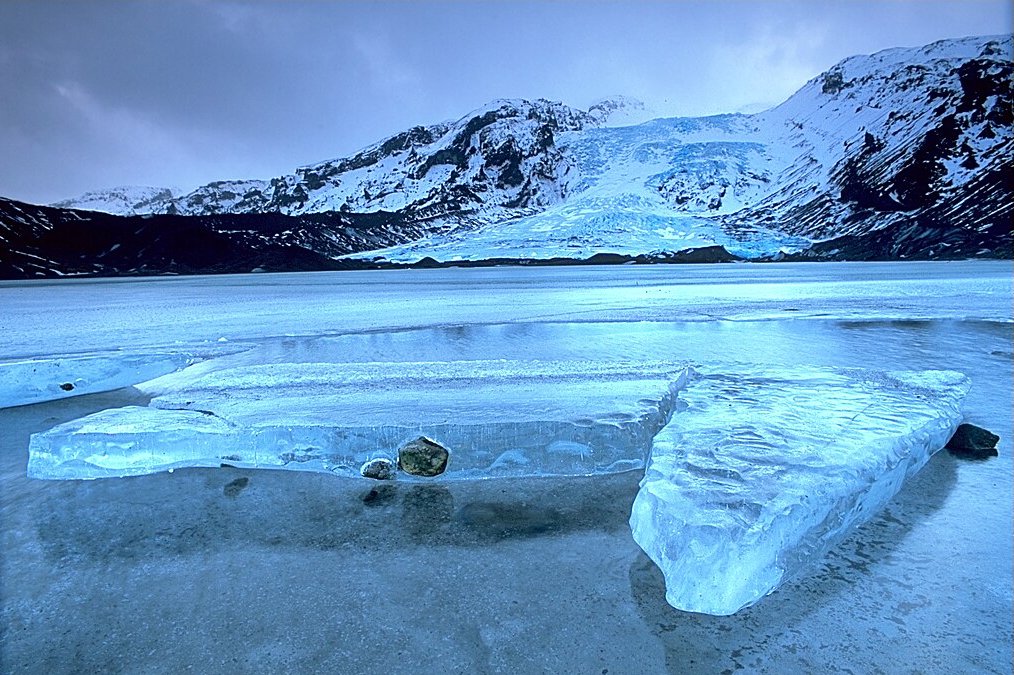
Iceland Was Named After Its Landscape
Its fairly obvious where Iceland got its name—the ice. Over 10% of country is covered in glaciers. In total, there are about 269 recognized glaciers in Iceland.
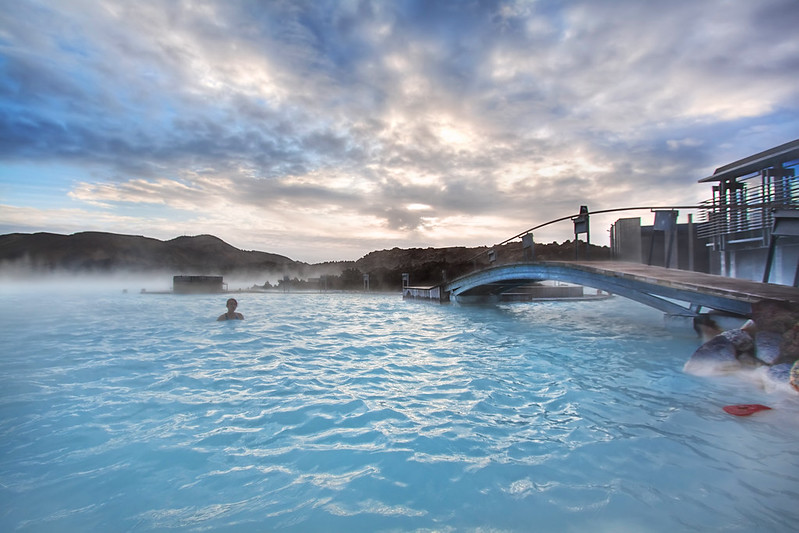
You Can Swim Outdoors All Year Round
Even though it is almost always cold in Iceland, you can swim outdoors at any time of the year. This is because there are natural geothermal swimming pools —and there is one in nearly every town in the country.
Geothermal swimming pools are hot springs where the water temperature varies between warm and fairly hot, depending on its location.

Icelanders Favorite Snacks
This may not be true for all Icelanders, but it is a common belief that the most popular snacks in Iceland are ice cream and black licorice.
There is a historical reason for this: the first settlers did not have sugar or honey, so they used licorice root as a sweetener. The flavor stuck, and it is now in all sorts of candy and snacks around the country.

Iceland Has No Dangerous Wildlife
Due to its climate, it’s no surprise that Iceland has almost no dangerous wildlife. There are no snakes, bears, mosquitos, or poisonous bugs in the entire country.
The most dangerous animal would be polar bears—but they are typically far from city life and pose very minimal threat to humans.
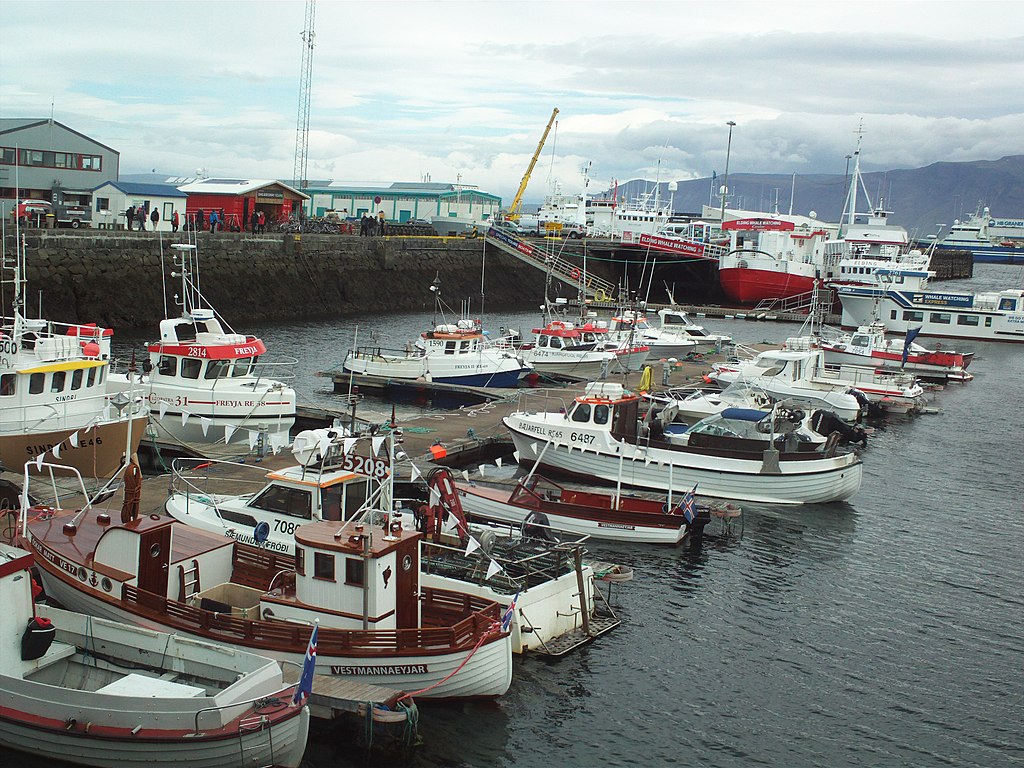
There Are No Trains in Iceland
There are no trains or railway system in Iceland. The only way to get in and out of the country are by air and sea. Travel from one city to another is typically by bus or domestic flight.
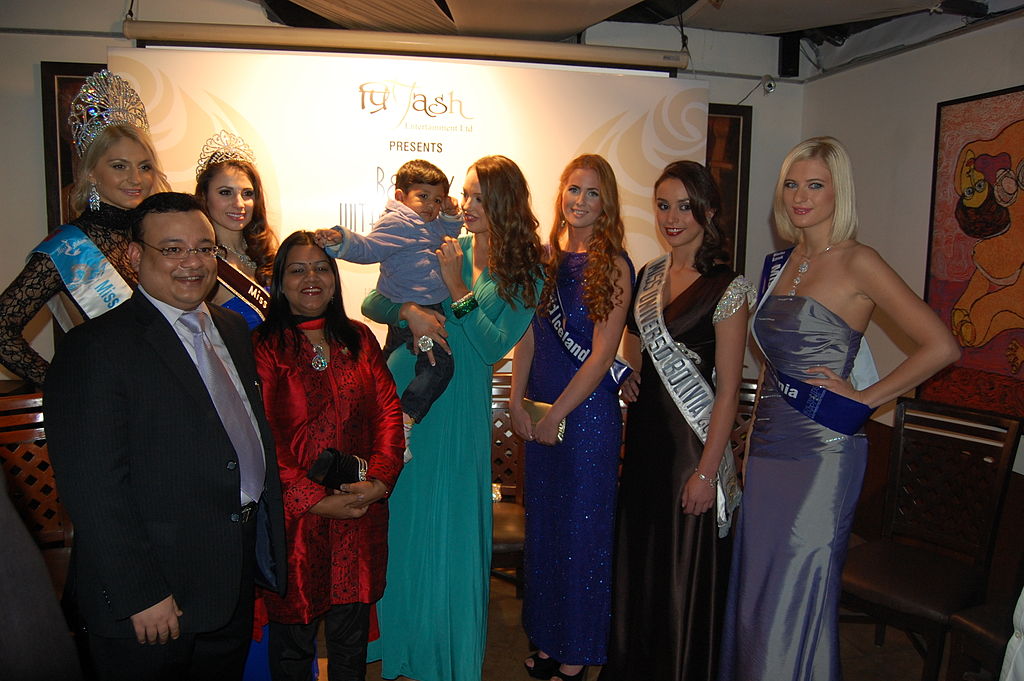
Iceland is Home to Global Beauties
Even with Iceland’s fairly small population, they still took the crown in several Miss World competitions. It is one of the most successful countries at the Miss World pageant with three victories.
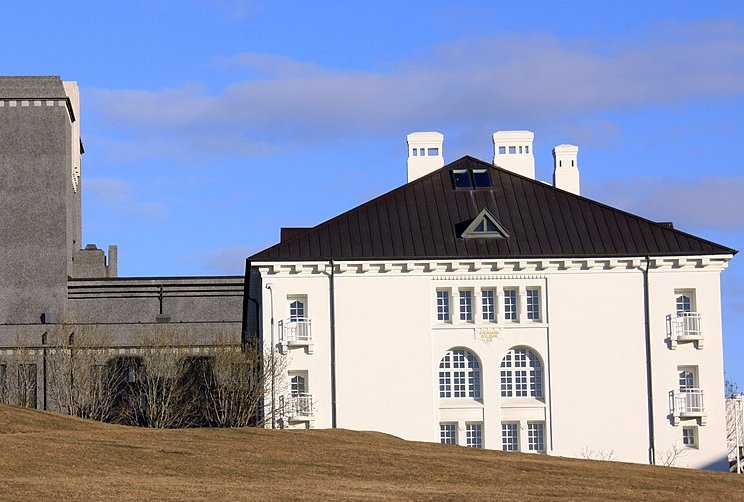
Iceland Holds a Record for Published Books
Icelanders publish more books per capita than any other nation in the world. They even have a book-giving holiday – Jolabokaflod – on Christmas Eve.
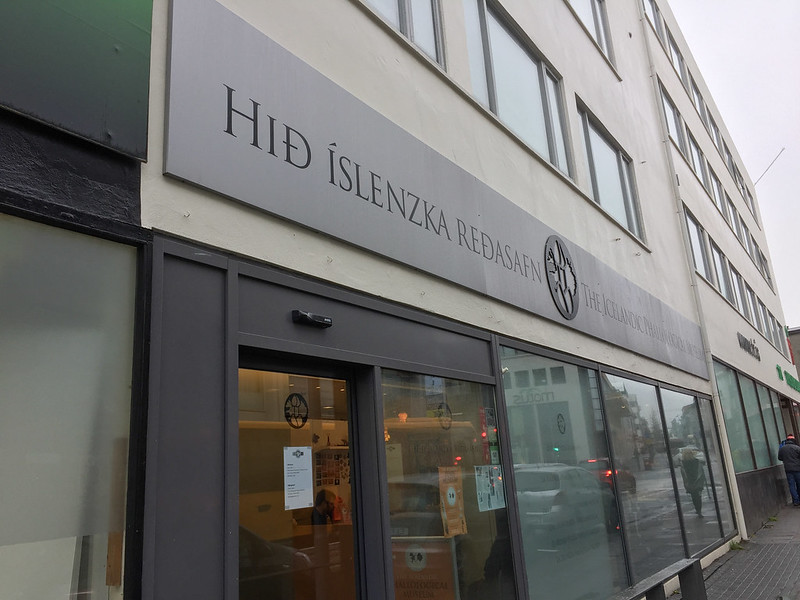
Iceland Has a Phallological Museum
This museum is like nothing you’ve ever seen before. It is the world only genuine “manhood” museum.
According to its website, The Icelandic Phallological Museum, is “dedicated to collecting, studying and presenting actual phalluses and all things phallic.”
It’s complete with bistro that serves penile shaped food, and a gift shop with all things penile.
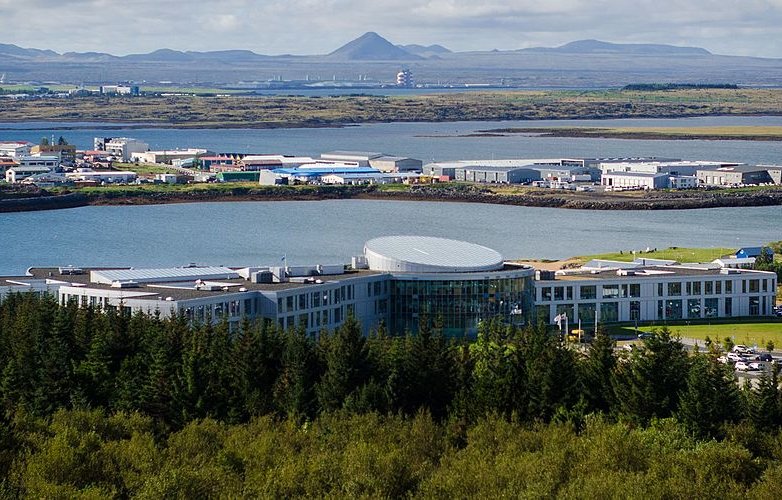
Iceland Has One Seriously Long Word
The longest word found in the Icelandic language is: vaðlaheiðarvegavinnuverkfærageymsluskúraútidyralyklakippuhringur.
It word refers to, “the key ring to the tool work shed in the road works of Vaðlaheiði”. It is often been considered a joke, but road workers maintain that the word refers to the actual key ring for the shed they use.
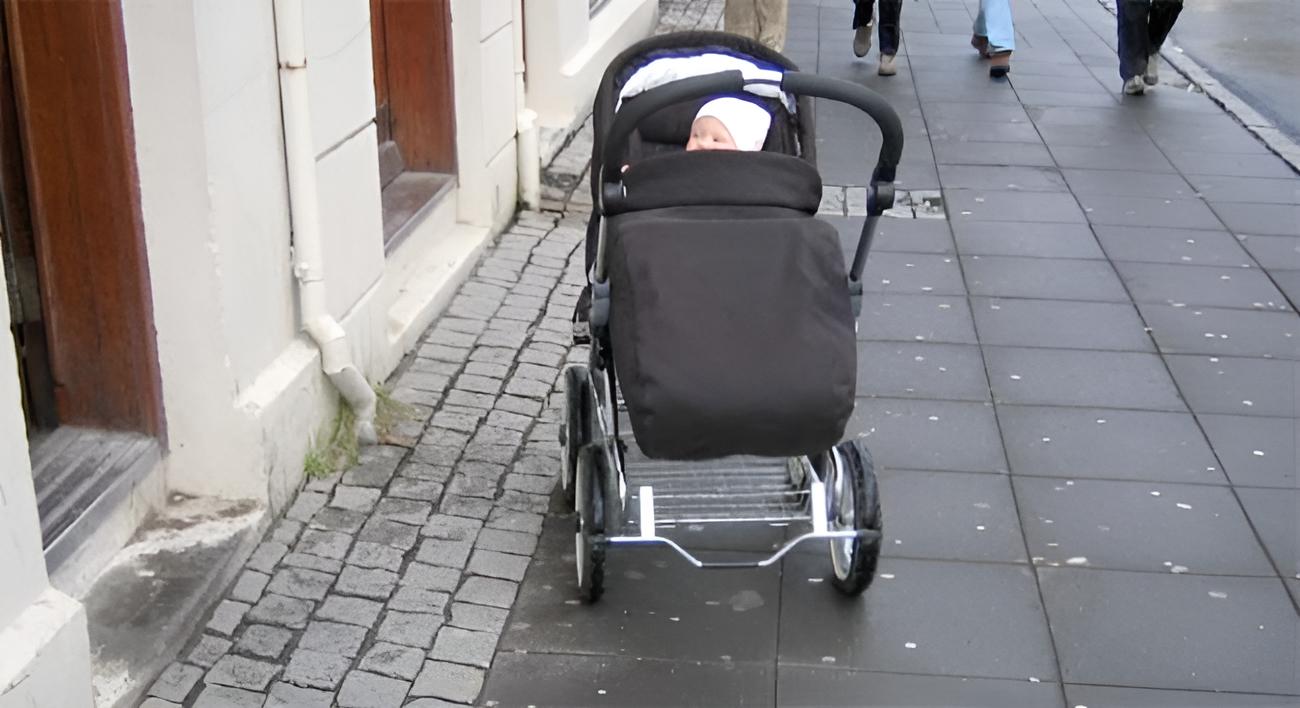
Babies Nap Outside in Iceland
From infancy to about 2 years old, Icelandic children sleep outside in baby carriages for their noon nap. This is on the belief that fresh air is imperative for a good sleep, and child development.
It also builds trust, as babies are left alone, and promotes openness.
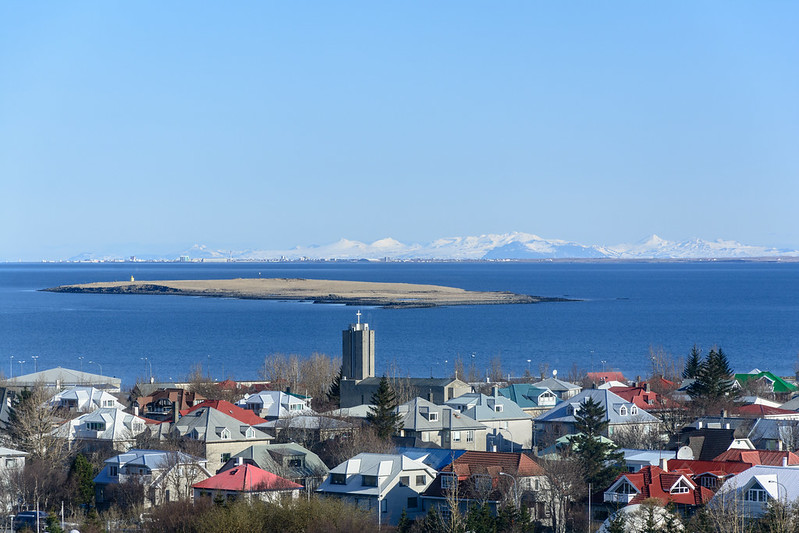
Icelanders Can Easily Trace Their Heritage
All Icelanders can access a website called Íslendingabók to trace their heritage back to the Vikings and even see how they are related to other Icelanders.
Typically, the question is not if they are related, it is how much they are related.
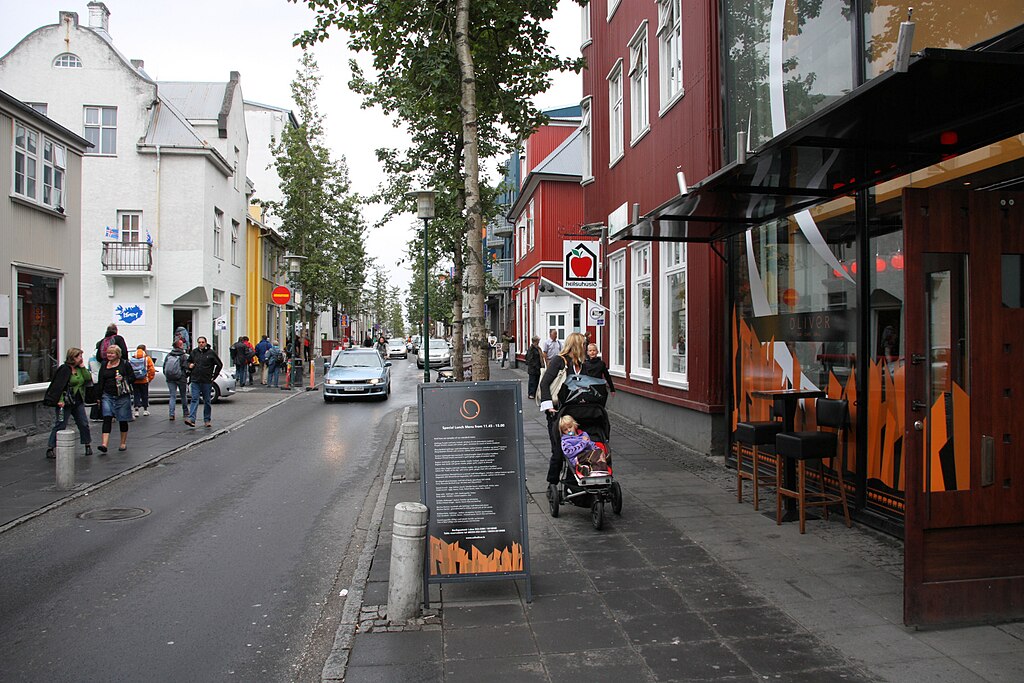
Icelanders Are on a First Name Basis
Icelanders always address each other by their first names. This is the same for all Icelanders, even if they might be speaking to the president. Their culture is very laid back.
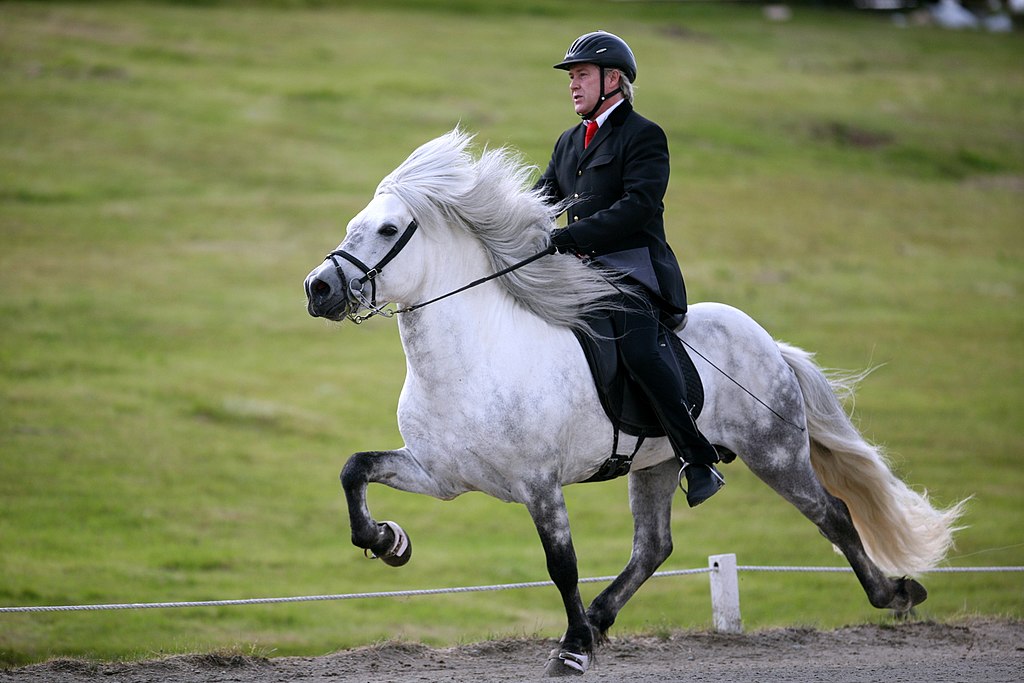
Icelandic Horses Are Unique
Icelandic horses have a unique gait—referred to as tölt—and have not been mixed with other breeds for over 1,000 years.
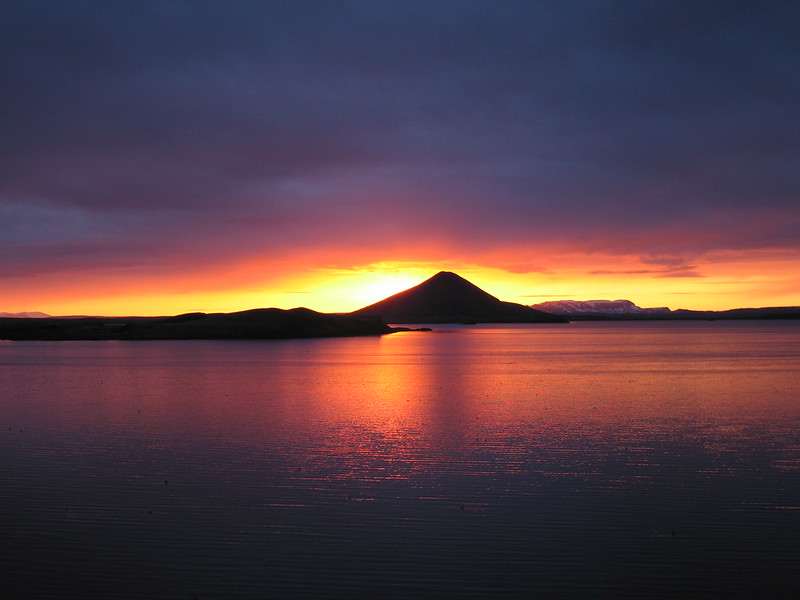
Iceland Has a Midnight Sun
The Midnight Sun is an annual occurrence taking place from June to July. This means you can witness light for 24 hours a day during that one-month period.
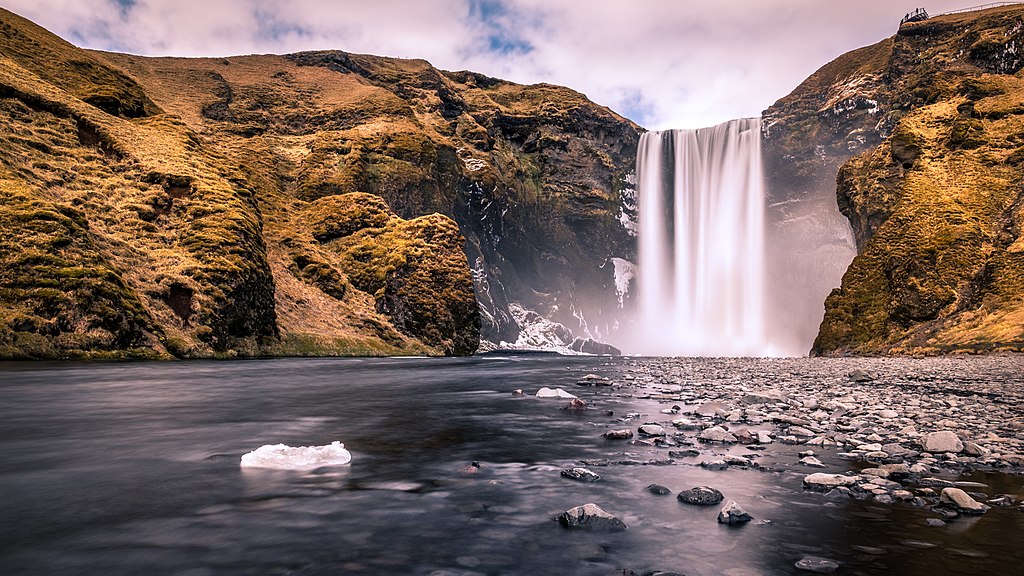
Men Are Commonly Named After Elves
Traditionally, a lot of male Icelanders were named “Alfur”, which translates to “Elf”. This dates back to their early beliefs about elves—having some sort of control over good and bad things that happen to the community.
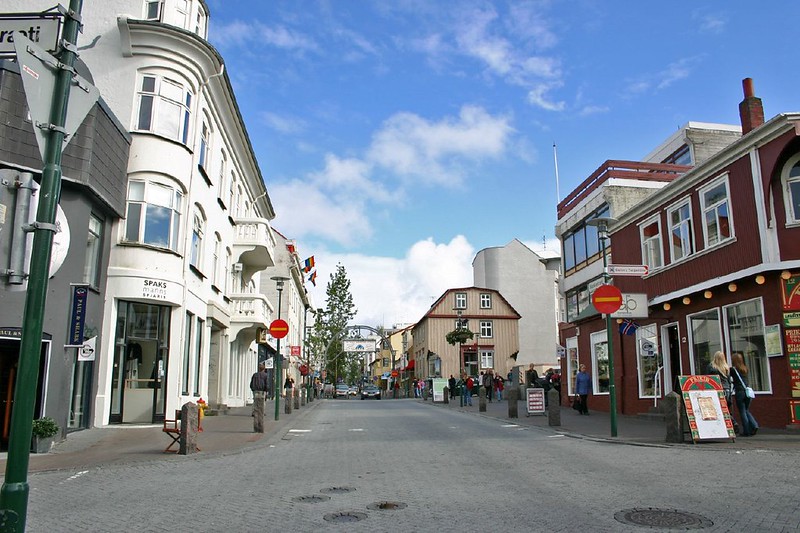
Female Clubs Are Banned in Iceland
Clubs where women typically take off their clothing are completely banned in Iceland, specifically “all businesses that profit off unclothed employees”.
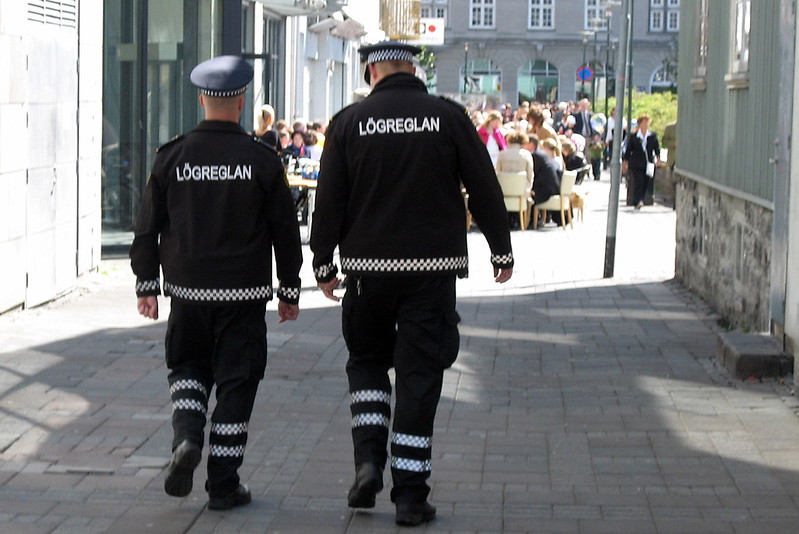
Local Authorities Are Unarmed in Iceland
Given that the country is known as one of the safest countries in the world, the local authorities do not feel it is necessary to bare arms.
Most unlawful activity in Iceland is not dangerous and authorities are able to do their job without using force.
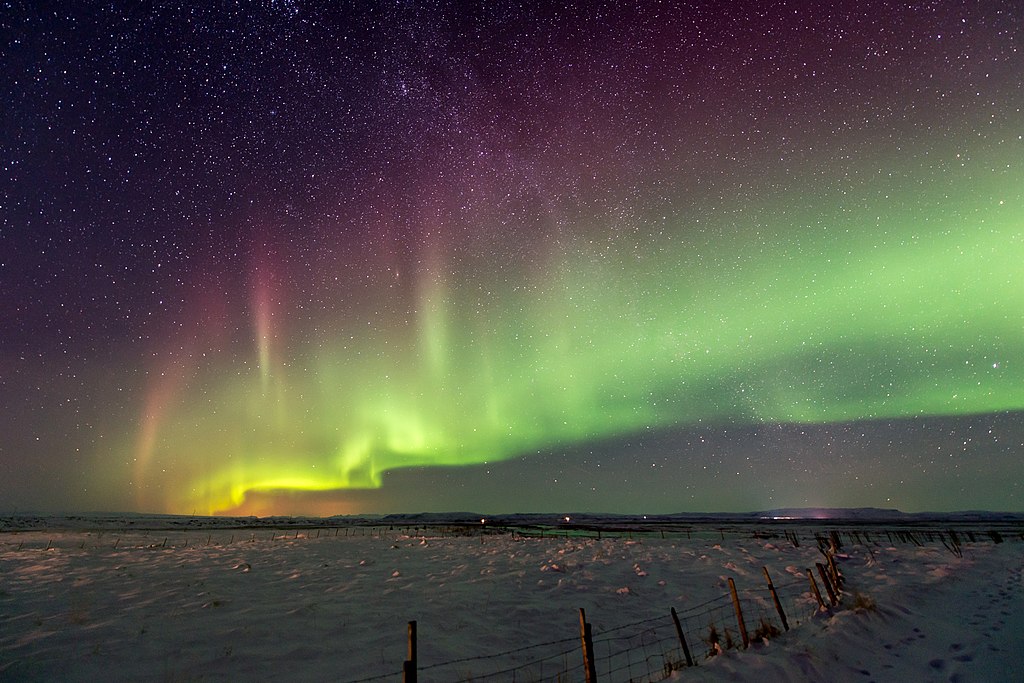
The Northern Lights in Iceland Are Different
The Northern Lights you typically see from most parts are the globe are usually green with some yellow. But the Northern lights you witness in Iceland shows stunning hues of red, purple and pink.
This is due to altitude.
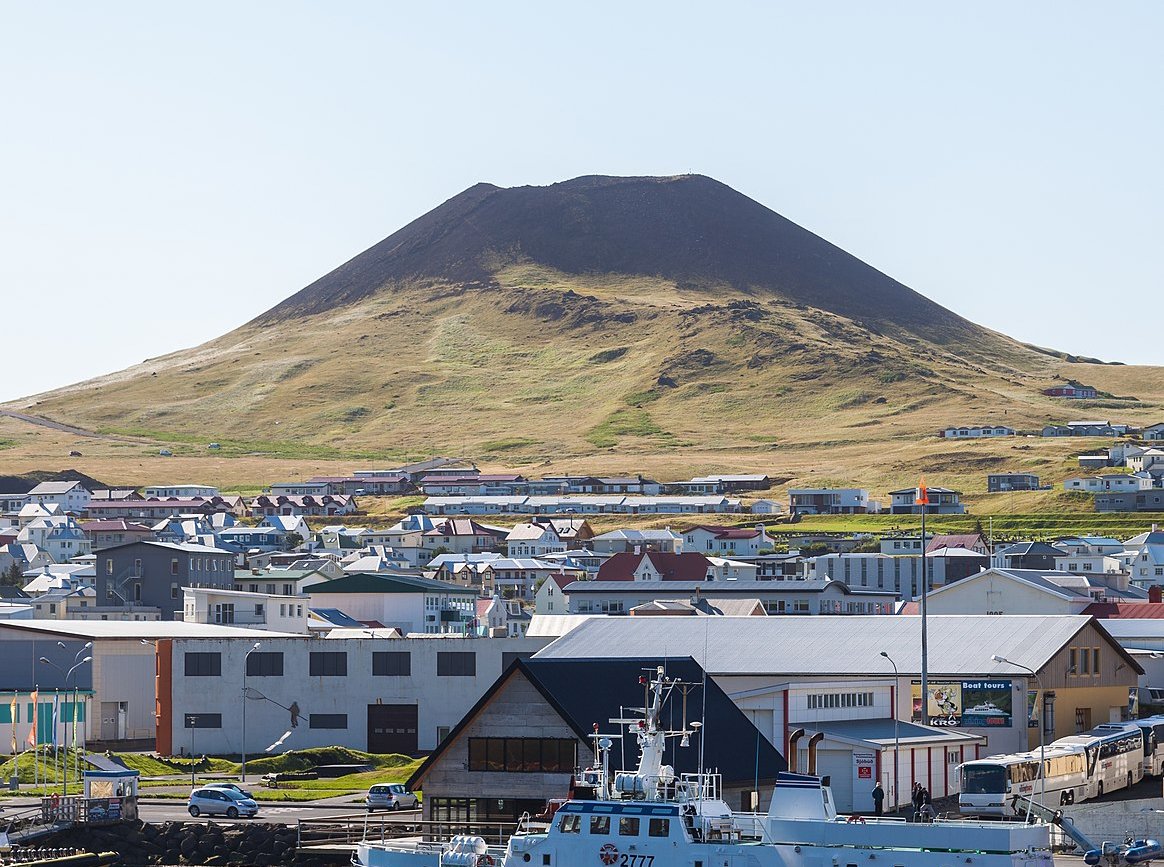
Earthquakes and Volcanoes Are Common in Iceland
Earthquakes and volcanic eruptions are fairly common in Iceland. So, the locals are trained to react appropriately from a young age. Their homes are built with this in mind, and children are taught not to overreact to common rumbles and vibrations.
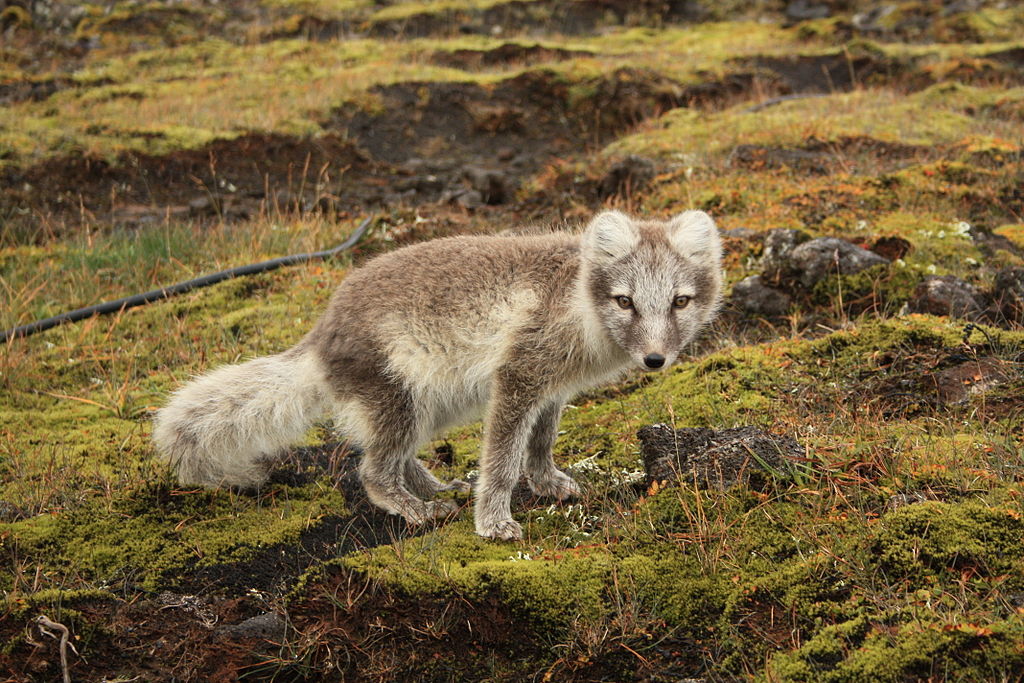
Iceland Only Has One Native Mammal
The Arctic fox is the only species of land mammal native to Iceland.
It apparently survived on the island through the last ice age and stuck around once the thick glacial ice receded.
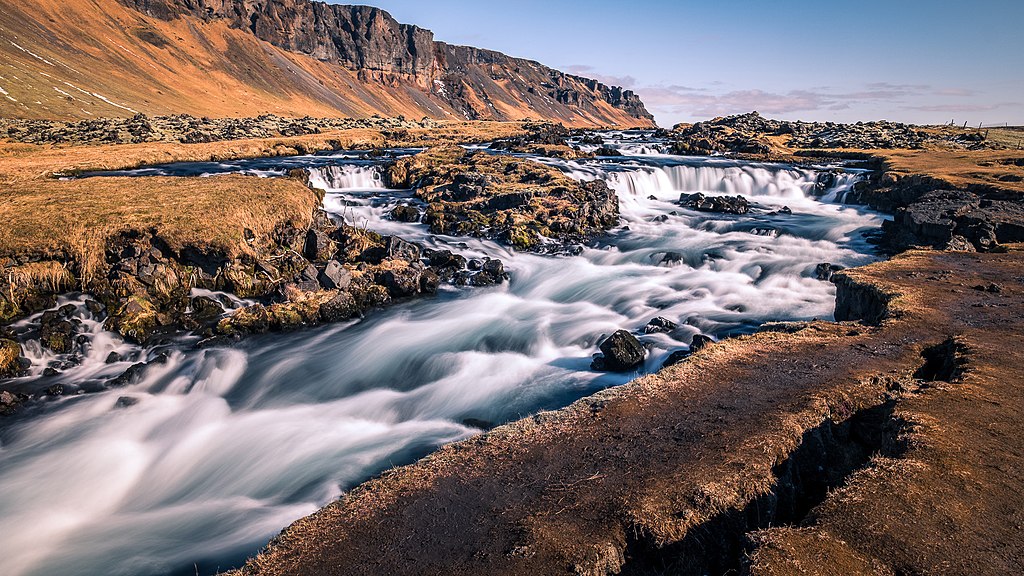
Iceland Sits on Two Tectonic Plates
Iceland sits on the meeting of two tectonic plates, one is the North American plate and the other is the Eurasian plate.
It is also the only place in the world where you can snorkel between two tectonic plates.
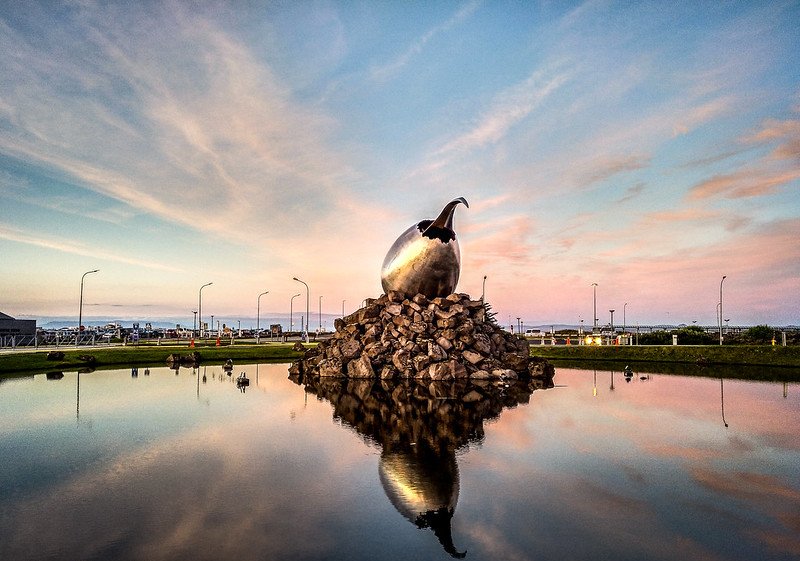
Iceland’s Airport Sits in a Lava Field
Iceland only has one international airport, and it sits in the middle of a lava field. In fact, a volcano in the area has erupted several times, sometimes twice in one year.
Aside from a 2010 eruption that led to widespread airspace closures in Europe, the erupting volcano doesn’t seem to affect air travel.

Many Waterfalls in Iceland Have No Names
There are so many stunning waterfalls in Iceland—many that are actually quite popular among tourists. However, because they are a common sight to see, many of them are not officially named.
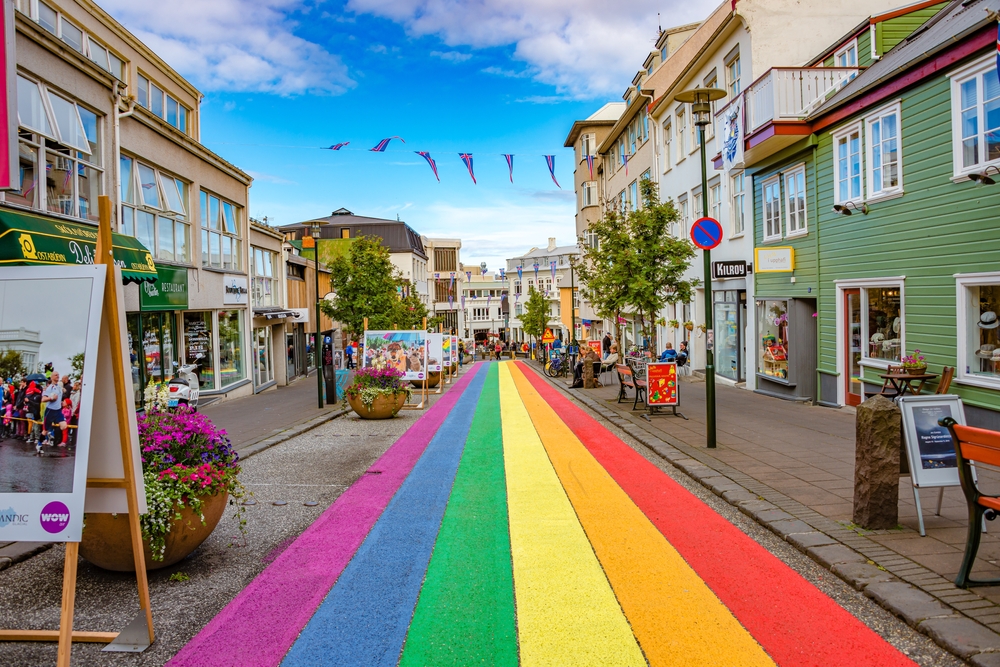
The Icelandic Language is Unique
The Icelandic language is so unique that there are numerous words that do not have any direct English translation. They also have many Icelandic words for one English word, such as “wind”.
Given the county’s isolation, Icelandic is one of the smallest “nation-state” languages in the world.
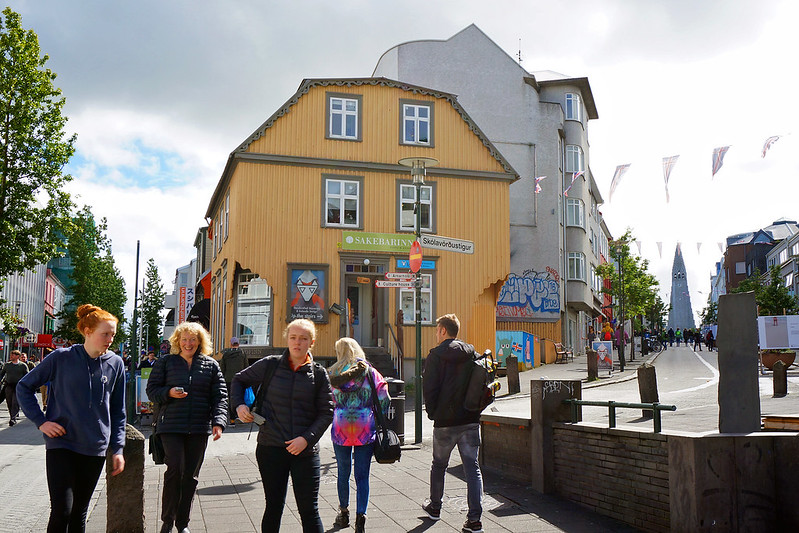
Iceland Ranks High in Equality
Iceland was once voted the best place for women to live. This is because women’s equality is literally protected by law.
The Act on Equal Status and Equal Rights of Women and Men is the reason gender equality is a hallmark of Icelandic culture.

Iceland's Seasons Are Drastically Different
Iceland is a beautiful place to visit all year round, however the best time to travel depends on what you plan to see.
While winter is better for exploring glaciers and seeing the northern lights, summer is better for swimming in geothermal pools and going on long hikes through lava fields.
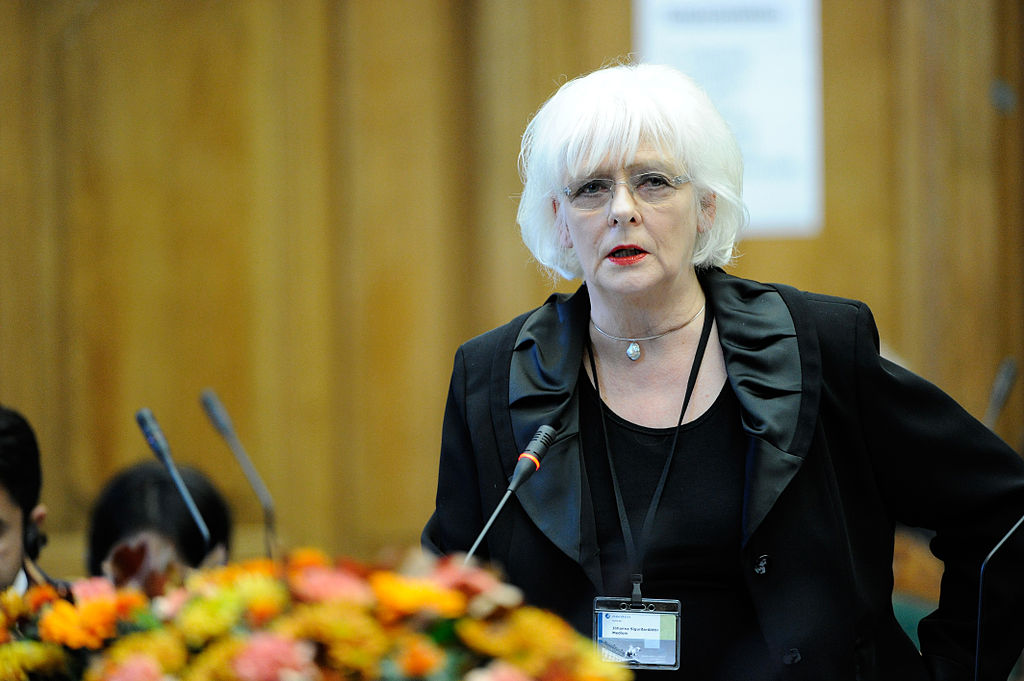
Iceland Was the First Country to Have an Openly Gay Prime Minister
Iceland has a president, who is the head of state, and a prime minister who serves as the head of government in a multi-party system.
Jóhanna Sigurðardóttir became Prime Minister in 2009, and was Iceland's first female Prime Minister and the world's first openly LGBT head of government .
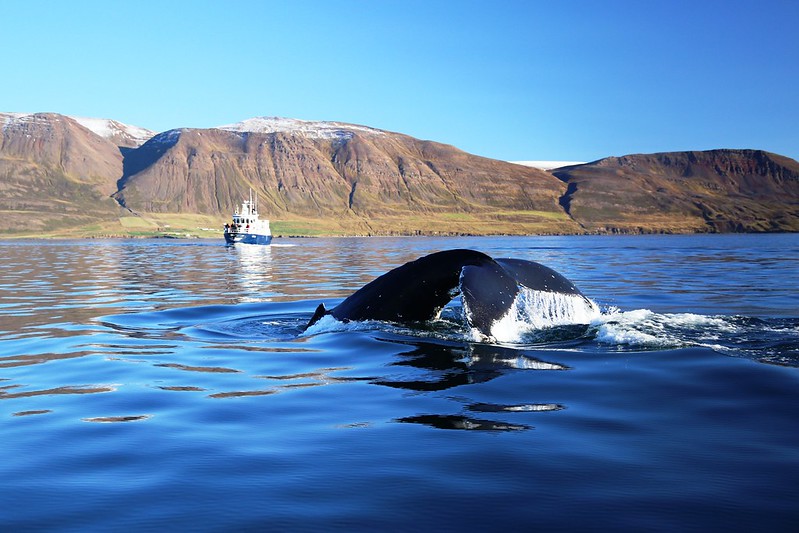
Iceland Has Several Different Species of Whales
Iceland has more than 20 different species of whales that can be found swimming in the sea around the island.

There Were No Dinosaurs in Iceland
No dinosaur bones have ever been found in Iceland as the land mass is only about 20 million years old. The last of the giant dinosaurs died out 66 million years ago.

Iceland Has Universal Healthcare
Iceland has a universal healthcare system (which is paid for via taxes), and does not have any private hospitals on the island.
Everyone is entitled to emergency medical assistance covered by Icelandic Health Insurance (IHI).

Iceland Has Religious Freedom
Freedom of religion in Iceland is guaranteed by the 64th article of the Constitution of Iceland.
Although, it also states that the Evangelical Lutheran Church shall be the national church (þjóðkirkja) and the national curriculum places emphasis on Christian studies, the constitution still protects the right to form other religious associations.
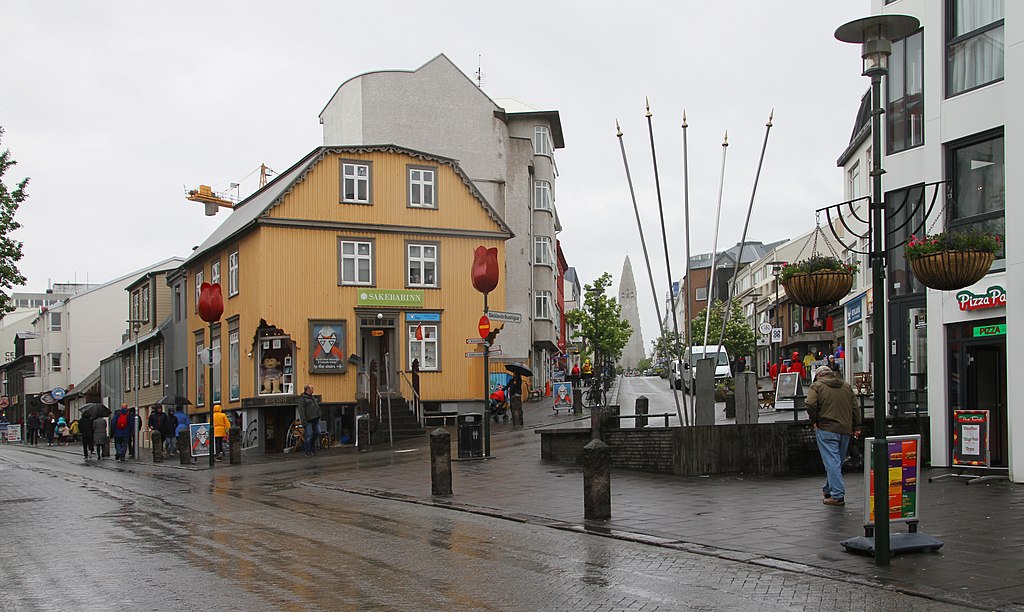
Iceland is Expensive
Iceland is the eighth most expensive country in the world with a cost of living 15.8% higher than the US, according to Numbeo's global cost of living index.
The country has fairly high costs of food, housing and transportation, and they also have a limited job market, particularly for foreigners.
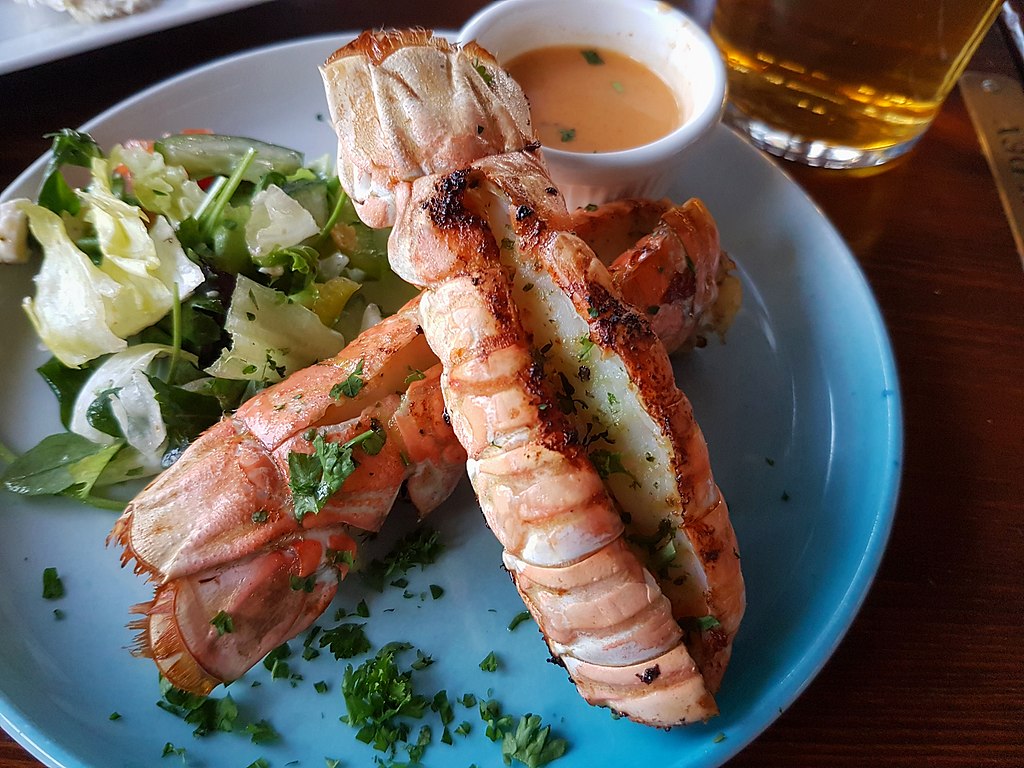
Icelanders Love Sauce
This may not be true for all, but it is said that Icelanders love their sauce. Apparently, they enjoy covering their food in all kinds of sauces, but mostly gravy and bearnaise sauce.
They have a sauce for everything—even ice cream!
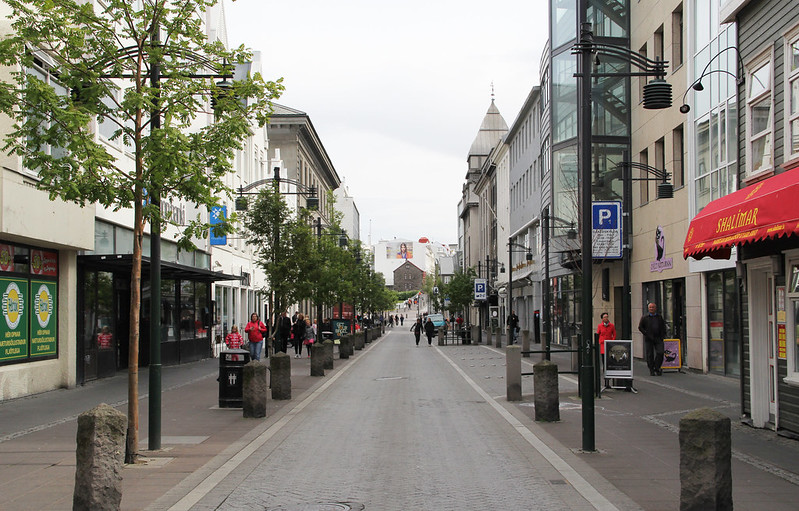
Icelanders Enjoy Being Unclothed
As with many European cultures, unclothed Icelanders is not an uncommon sight, in fact, it is quite normal.
It is common to shower, without swim suits, prior to swimming in the public geothermal pools in order to keep them clean. Icelanders are typically not shy and will bare all to whomever is around at the time.
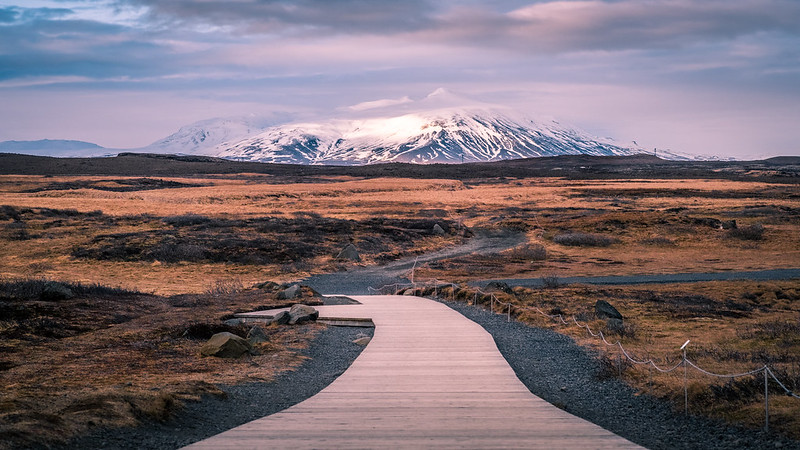
Final Thoughts
While Iceland is a relatively cold climate, it remains one of the best countries to live in. While it may be an expensive country to reside, Icelanders are one of the happiest cultures who take pride in equality and love their sauces.
More for You
I Was Told My Father Was A 'Deadbeat.' After He Died, I Found Out Everything I Knew About Him Was Wrong.
We Ordered 7 Fast-Food Breakfast Sandwiches to Find the Best One
‘Poor people are not stupid’: I grew up in poverty, earned $14 an hour, and inherited $150,000. Here’s what I have learned from my windfall.
Democratic Governor Suggests Biden Admin 'Persecuting' Her State
What Are Mono Mono Twins?
29 common human foods you may not realize are poisonous to your dog
Kirk Cousins comments on Falcons' decision to draft QB Michael Penix Jr.
These Massive Companies Are Laying Off Hundreds of Employees
I’m a Bank Teller: 3 Times You Should Never Ask For $100 Bills at the Bank
Liz Cheney's Message to Supreme Court After Donald Trump Hearing
A Cracked Piece of Metal Healed Itself in an Experiment That Stunned Scientists
5 Things That Happen When You Eat Avocado Every Day
This man claims Tom Brady’s sloppy signature turned $500,000 worth of collectibles into defaced keepsakes
Remembering Fran
Cuban mercenaries eliminate Russian regiment commander in Donetsk region
Hersh Goldberg-Polin's mother speaks out after Hamas releases hostage video of her son
2024’s Canceled Shows, for Your Final Consideration
The top 10 superfoods for brain health, weight loss and more
A man who 'hopes he runs out of money' before he dies explains why you may not need as much cash to retire as you think
Actor Chazz Palminteri dismantles Mayor Adams' claim NYC is in its 'best' shape ever: I am in 'disbelief'
Protect Your Trip »
The 18 best places to see the northern lights.
Check the aurora borealis off your bucket list.
The Best Places for the Northern Lights

Getty Images
The northern lights, known as the aurora borealis, are a spectacular natural light show visible at certain times of the year in the Northern Hemisphere. They occur when electrically charged particles from the sun collide with gases in the Earth's atmosphere, creating vibrant streaks of blue, green, pink and violet dancing across the night sky. 2024 and 2025 are an excellent time to catch the northern lights: Solar activity will be at a peak, making for a more impressive experience, if you're in the right place.
The best places to see the aurora borealis have little light pollution, clear skies and no precipitation. The lights are only visible at northern latitudes when it's dark outside, so the months from September to April are best for seeing the aurora. There's also a Southern Hemisphere counterpart, the aurora australis; there are fewer easy spots from which to view this phenomenon, but if you're lucky, it can be equally brilliant.
For more information on the northern lights, scroll down to the FAQ section at the bottom of this page. Read on to discover the top destinations where you can see the kaleidoscopic northern and southern lights.
Fairbanks, Alaska

Fairbanks is by far one of the best places in the world to view the northern lights, as it's located directly under the auroral oval. This ring-shaped zone sits around the Earth's geomagnetic North Pole and is generally associated with the most vibrant aurora sightings. Visitors can expect to see the lights on an average of four out of five clear nights during aurora season, which lasts from late August to late April.
You can book a northern lights tour to see the aurora from the springs and tubs at Chena Hot Springs Resort. This excursion includes round-trip transportation to the resort from town, a soak in the hot springs, a visit to the Fairbanks Aurora Ice Museum and an aurora viewing tour; dinner and drinks centered around Alaska produce are an option extra with hot drinks supplied.
There's more to Fairbanks than just the northern lights: If you visit in late summer, consider family-friendly activities like a ride on the Riverboat Discovery or gold panning. For a festive holiday experience in the winter, head around 15 miles out of Fairbanks to visit the Santa Claus House in the city of North Pole. Travelers can also see ice sculptures in February and March at the impressive World Ice Art Championships or take a dog-sledding or snowmobiling tour .
Where to stay: For excellent chances of aurora viewing, book a private igloo at Borealis Basecamp, a top glamping resort located on 100 remote acres of boreal forest about 25 miles from Fairbanks. With activities like dog-sledding on top of aurora viewing, past visitors regularly describe it as a once-in-a-lifetime experience.
Tromsø, Norway

Located about 220 miles above the Arctic Circle, Tromsø is one of several top spots to view the northern lights in Norway. At the darkest point of the aurora season – which runs from September to early April – the sun doesn't rise in this northern part of the country, although there is twilight during the day. With this level of darkness, there are more opportunities to see the aurora.
Tromsø itself is a small but lively city, so there's plenty to see and do when you're not looking up at the sky, including a visit to the beautiful Arctic Cathedral. In late January to early February, the city hosts the Northern Lights Festival, a 10-day music and performing arts event featuring a variety of musical genres.
Aurora chasers can view the lights on their own while in town, but to get a better view, it's recommended to head away from the city lights. Arctic Circle Tours is one company offering guided trips, with small groups for a more personal vibe. Alternatively, adventure-seekers can embark on an exhilarating husky trekking expedition in the Arctic wilderness.
Where to stay: For accommodations with harbor views, look no further than the Scandic Ishavshotel – guests love it for its convenient central location in the city, as well as its plus-sized breakfast buffet with plenty of choices.
Luosto and Rovaniemi (Lapland), Finland

Lapland is located within the Arctic Circle in the northernmost part of Finland. The northern lights are most visible here between the end of August and April – and approximately 200 times a year – so there are many opportunities for aurora spotting. Finnish Lapland is also known as home to the Sámi people (the only recognized Indigenous group in the European Union region), some 200,000 reindeer and Santa Claus – who can be visited in the town of Rovaniemi, the region's largest city and a great base for your aurora expedition.
Consider venturing roughly 70 miles north of Rovaniemi to the resort town of Luosto, set among the picturesque and hilly landscape of Pyhä-Luosto National Park. Here, you can also spend a magical evening outdoors under star-filled skies during a reindeer-drawn sleigh ride through the snow-covered forests. Jaakkola Reindeer Farm offers a reindeer sleigh tour to spot the aurora once weekly; it includes a stop to warm up at a bonfire camp with snacks, hot beverages and local fireside stories.
Where to stay: For a bucket list experience, watch the impressive light show from a glass igloo at Santa's Hotel Aurora & Igloos in Luosto. Past visitors love the cozy atmosphere here, boosted by amenities like saunas and log fireplaces. If you're sticking to Rovaniemi, the Arctic TreeHouse Hotel is a stunning choice, with designer cabins perched among the snow-covered taiga forest.
Orkney, Scotland

This group of captivating (and mostly uninhabited) islands, located about 10 miles off Scotland's remote northern coast, is one of the best places to see the northern nights in the U.K. Fall and winter are the best seasons to witness the aurora, also known in local Shetland dialect as the "Mirrie Dancers," with fall bringing the highest proportion of clear nights. A few places to see the spectacular light show include along the coast at Birsay or the Broch of Gurness, an archaeological ruin on a sweeping and dramatic coastline.
In addition to the aurora, Orkney is home to breathtaking coastal landscapes and more sheep than you can count (try some local lamb, if you can). Travelers can also visit the Heart of Neolithic Orkney, a UNESCO World Heritage Site with several monuments dating back 5,000 years.
Where to stay: During your visit, plan to stay in the historic town of Kirkwall, the capital of the Orkney Islands: The no-fuss Ayre Hotel offers harbor views, and past visitors compliment the hearty meals in the hotel restaurant. Spot the aurora close to town at Inganess Bay and Wideford Hill.
Yellowknife, Canada

Yellowknife, the capital of Canada 's Northwest Territories, dubs itself the "Aurora Capital of the World." Thanks to its position in the middle of the auroral oval, the city puts on one of the world's most awe-inspiring light shows. The period from mid-November to the beginning of April is the recommended time to spot the aurora, but it's also possible to see the aurora during more hospitable weather from late summer to early fall as the lights are visible up to 240 days a year.
Located on the northern shore of Great Slave Lake, Yellowknife boasts winter sports such as ice fishing and cross-country skiing. If you visit in March, plan to attend the monthlong Snowkings' Winter Festival, which features events and activities like a snow-carving competition, a snow castle, live music and more.
For a unique experience, book a tour through Aurora Village to view the lights. The property will pick you up from your hotel and take you to its site, where you can stay warm in a tent while sipping hot beverages. The Aboriginal-owned Aurora Village also offers activities such as dog-sledding or snowshoeing excursions.
Where to stay: Warm up in the fireside lounge at The Explorer Hotel in Yellowknife. Previous visitors note the warm and helpful staff as a strength here.
Jukkasjärvi, Sweden

The optimal time for seeing the illuminated skies in the northern part of Sweden, known as Swedish Lapland, is between early September and late March. The small Swedish village of Jukkasjärvi sits around 125 miles above the Arctic Circle on the Torne River and is an ideal locale for aurora viewing. You'll fly to the nearby Kiruna Airport to get here. With the village's origins dating back to the 17th century, you can still find some of the original homesteads, including an old timber cottage. Today the village boasts 800 residents – and more than 1,000 dogs.
Where to stay: If you're up for a chilly overnight adventure, reserve accommodations at the world's first permanent ice hotel, the aptly named Icehotel 365. Each of its artist-designed suites is sculpted from ice with a unique theme and maintains temperatures around minus 5 degrees Celsius (about 23 degrees Fahrenheit). The rooms also feature beds with reindeer hides and thermal sleeping bags so you can bundle up during the night. While you're at the property, take advantage of the guided "Northern Lights Safari on Snowmobile" or embark on the "Moose Safari on Horseback" atop an Icelandic horse.
Reykjavik, Iceland

October through March is the best time to chase the aurora borealis in Iceland . There are numerous natural parks and attractions throughout the country where you can view the show during the long and dark winter, but the capital city of Reykjavik also offers many options for accommodations, restaurants, tours and other activities for your visit. For optimum aurora viewing in the city away from the light pollution, head to Öskjuhlið. This wooded and hilly area in Reykjavik sits at 200 feet above sea level and has walkways and paths where you can see the nighttime show.
Atop this hill sits Perlan, which houses the only planetarium in the country and a museum featuring exhibits about Iceland. Perlan is also home to the world's first indoor ice cave and glacier exploratorium. During your visit, don't miss the panoramic views of the city from the building's fourth-floor observation deck. From this vantage point, you'll be able to see the Snæfellsjökull glacier; Keilir, a volcanic mountain; and Esja, the mountain of Reykjavik.
Where to stay: While in Reykjavik, splurge on an overnight tour with Buubble Tours. This experience includes breathtaking sightseeing spots and a night spent under the magical northern skies in a transparent bubble at the 5 Million Star Hotel. For longer stays, consider the eco-friendly Eyja Guldsmeden Hotel, with sweeping views of the city – guests love it for its cozy yet chic Scandinavian design.
Southern Iceland

While Reykjavik is a great aurora-viewing spot if you like having amenities close by, consider getting out into Iceland's stunning, otherworldly countryside for a unique backdrop for the northern lights. One unique place to see them is the black sand beach at Reynisfjara (but watch out for the dangerous waves here). Alternatively, head to Jökulsárlón, a glacial lagoon and seal habitat, where the aurora's reflections in the icy water are truly beautiful.
There's no shortage of tours that will stop by these locations and more for possible aurora sightings. Consider a 10- or 13-day tour around the country with Fun Travel, or a four-day option from Arctic Adventures. If you want to do things at your own place, it's also possible to self-drive – just know that road conditions can be icy, particularly in the depths of winter (although Icelandic roads are generally well-maintained).
Where to stay: Hotel Rangá is a formidable option for aurora-spotting. It offers a variety of special amenities, such as aurora wake-up calls, a lookout deck and snowsuits to keep you warm if you're outside viewing the lights. Past visitors praise Rangá for being a comfortable yet luxurious place to relax, be it in the outdoor hot tubs or the cozy and sociable bar.
Kangerlussuaq, Greenland

Greenland may not be the most accessible place to travel for viewing the northern lights, with limited flight options (mostly via Iceland), but those who make it here will be thrilled they did. The tundra of Kalaallit Nunaat – the Greenlandic name for the country – is one of the best places on the globe to see the aurora from September to early April.
For the more adventurous aurora seekers, head to the top of the Greenland Ice Cap for spectacular views of the lights. This impressive glacier covers 80% of the country and is accessible via the tiny town of Kangerlussuaq. Located on a fjord right along the Arctic Circle, the town, often described as a gateway to Greenland, was a former U.S. Air Force base and is now home to Greenland's main airport. The town is known for having clear skies on some 300 nights per year, so chances of a sighting are particularly good here.
Tour company Guide to Greenland offers various tours, from two-hour aurora-viewing trips to a tough but rewarding multi-night dog-sledding expedition across the ice. For a less strenuous experience, companies like Nordic Saga Tours offer cruises through the Arctic landscapes around Kangerlussuaq.
Viking cruise along Norway's coast

Courtesy of Viking
Embrace the winter and set sail for the Arctic Circle to experience the aurora in northern Norway. The 13-day "In Search of the Northern Lights" cruise itinerary with Viking departs from London for the North Sea with stops in ports of call that are top aurora-viewing locales, including Tromsø, Alta and Narvik, plus a stop in Amsterdam en route. The cruise ends in Bergen, Norway.
While on land, take in the natural beauty of the snow-blanketed landscapes and book bucket list excursions like a night spent in an igloo or a reindeer sledding adventure. You can also chase the lights into the wilderness by snowmobile, take a dog sled ride under the stars or view them from a Sámi tent atop the mountain Pæska in Alta. This Viking Ocean Cruises itinerary is offered with departure dates from mid-January to mid-March.
Headlands International Dark Sky Park, Michigan

Regarded as one of the top spots in the U.S. to see the aurora outside Alaska, Headlands International Dark Sky Park sits at the top of Michigan 's lower peninsula, less than 5 miles from Mackinaw City. While the northern lights are less common here due to the relatively southern location, the best time to catch a glimpse of this phenomenon is typically during the spring and fall – and appearances can usually be predicted a couple of days in advance. The park even maintains an online Clear Sky Chart so you can check the weather forecast before you go.
There are also other stargazing opportunities throughout the year at Headlands. During the summer months the Milky Way is visible across the sky, and late summer evenings entertain visitors with meteor showers.
Where to stay: If you're visiting between late April and the end of October, splurge on a stay at Mission Point Resort on Mackinac Island, where the aurora should also be visible. Guests describe this iconic property situated along the shoreline of Lake Huron as positively charming, thanks to its historic nature and manicured grounds. The resort also offers a host of outdoor activities from bike rentals to swimming.
Tips on Trips and Expert Picks Newsletter
Travel tips, vacation ideas and more to make your next vacation stellar.
Sign up to receive the latest updates from U.S News & World Report and our trusted partners and sponsors. By clicking submit, you are agreeing to our Terms and Conditions & Privacy Policy .
Voyageurs National Park, Minnesota

Martha Shuff | Courtesy of Voyageurs National Park
Located on the international border between Minnesota and Ontario, Voyageurs National Park is an approximately 218,000-acre labyrinth of boreal forests, lakes and streams. Voyageurs is Minnesota's only national park; it's also unique in that the park's interior is accessible only by boat, unless you visit by snowmobile in winter. As a certified International Dark Sky Park , Voyageurs provides opportunities to view the Milky Way on clear evenings, especially in the summer. Year-round aurora viewing is also possible on evenings with clear dark skies, but chances are better during the winter, when it's dark for longer.
For a guided stargazing tour – including the Milky Way, the constellations and (if you're lucky) the northern lights – book with Voyageurs Outfitters. If you're on your own, park officials note that almost any campsite is a good spot for northern lights viewing and stargazing. You can also check out the boat launch areas around Ash River, Kabetogama Lake and the Rainy Lake Visitor Center for top-notch views.
Where to stay: Those who prefer to sleep in a warm, cozy bed instead of camping under the stars can make reservations at the Cantilever Distillery + Hotel, a boutique Trademark Collection by Wyndham property in the nearby town of Ranier, Minnesota. Visitors report that there's a lot to like here, from the industrial-chic rooms to friendly staff to top-notch cocktails in the active distillery on the premises.
Abisko National Park, Sweden

Given its Arctic location, Sweden is one of the prime spots for aurora viewing in the Northern Hemisphere, with Swedish Lapland at the top of the list. The fall and winter months (from September to March) offer the best opportunities to witness the spectacle, as there is more darkness than light during the days.
If you're up for the Arctic adventure, December is an ideal month to visit Abisko National Park, which some regard as one of the best places on Earth to see the lights dance across the sky. The park's mountainous terrain and clear dark skies offer dramatic front-row seats for viewing the northern lights. The Aurora Sky Station is one of the best vantage points to see the aurora in the park. Join one of the expert presentations to learn about the science behind this fascinating phenomenon.
If you'd prefer to chase the lights with a curated tour, professional photographers and aurora-chasing guides at Visit Abisko lead three- to four-hour tours throughout the fall and winter. If you can, try to join the tours in fall, as this time of year offers a unique opportunity to view the lights both in the sky and reflected in the lakes and rivers, which you won't see in the winter months.
Where to stay: For cozy Nordic vibes, stay at Abisko Mountain Lodge, which also offers activities like ice climbing and snowmobile tours in winter. Guests love the excellent restaurant here, which offers Swedish specialties ranging from salmon to moose.
Nellim, Finland

Courtesy of Wilderness Hotels
Located a stone's throw from the Russian border in Finnish Lapland, this remote Arctic destination is a top-rated locale to view the northern lights due to the lack of light pollution. You'll be seriously out of the way of any built-up areas, as there's not even a paved road into Nellim. The best time to visit is between December and early April. This village is a great place to hunker down in a lodge and relax while enjoying a slice of life in the Finnish wilderness.
Where to stay: The Nellim Wilderness Hotel offers a perfect base with year-round activities, including aurora-chasing tours by car, snowmobile or on snowshoes. You can even take a sleigh ride through the snow to a campsite on Lake Inari to spot the aurora in pristine nature.
Beyond standard rooms, the Wilderness Hotel also offers glass-roofed cabins, as well as classic log cabins and bubble-shaped accommodations for two where guests can watch the dancing lights through the glass roof above your warm, cozy bed. When you're not chasing the lights, enjoy other Arctic activities like a husky safari, ice fishing, snowmobiling or a day in the snow meeting the local reindeer.
Saariselkä and Kakslauttanen, Finland

These two towns are around 150 miles above the Arctic Circle, with a prime location under the auroral oval, allowing as many as 200 opportunities per year to see the northern lights (weather permitting, of course). This area in Finnish Lapland is known for its stunning scenery, Sámi culture, cross-country and downhill skiing, and Urho Kekkonen National Park – one of Finland's largest.
Ski enthusiasts can roll two trips into one by hitting the slopes by day in Saariselkä and aurora spotting by night at Finland's northernmost ski resort. March into early April is the best time to view the aurora, as the Finnish Meteorological Institute notes that the weather is usually clearer at this time of year. But it's possible to see the northern lights at any time during the season from late August to early or mid-April.
Where to stay: Seven miles south of Saariselkä sits the village of Kakslauttanen, where you can book two- or four-person Glass Igloos at the Kakslauttanen Arctic Resort. The new Kelo-Glass Igloos, which sleep up to six, mix the comforts of a log chalet with the visibility of the glass roof; enjoy a private sauna, a fireplace and more. There's also an impressive selection of year-round tours and activities at this resort, including northern lights excursions on snowmobiles or by horse-drawn carriage.
Stewart Island, New Zealand

Courtesy of RealNZ
Although they may be isolated, some far-south destinations offer the chance to see the aurora australis – or southern lights. While you might be able to see them year-round in some locations (just as with the northern lights), certain months are better for aurora viewing in the Southern Hemisphere. Stewart Island is regarded as one of the top spots to see the brilliant display in New Zealand , with 85% of the island encompassed by Rakiura National Park, so there are few people and virtually no light pollution. You can reach Stewart Island by flying in from Invercargill or taking a ferry from Bluff.
New Zealand's winter months – June to August – are the best time to see the southern lights; spring and fall are also not bad times to spot them. The brighter summer months, between December and February, make it more difficult to spot the aurora, but there's still a chance you'll catch a glimpse between midnight and 4 a.m.
Where to stay: Consider reserving a room with at Stewart Island Lodge, an intimate bed-and-breakfast. This beautiful property is just minutes by foot from the village of Oban, and the property will pick you up at the ferry terminal for your stay. Past visitors rave about the spectacular views of Halfmoon Bay and the Foveaux Strait from both the rooms and lodge terrace.

Tasmania sits approximately 150 miles south of mainland Australia. This mountainous island is one of relatively few places on the planet where it's theoretically possible to see the aurora 365 days a year due to its latitude, which allows for full darkness even on summer nights. The capital city of Hobart is the easiest point of entry: It's home to Tasmania's largest airport and serves as a convenient base. The city's burgeoning food and cultural scenes will also give you plenty to see and do.
From here you'll be able to reach several great viewing locations with unobstructed and open views of the sea along the southern and southeast coastlines, like Goat Bluff and Tinderbox Bay. When you're not staring at the night sky, splurge on a once-in-a-lifetime helicopter flight with Tasmanian Air Tours. Depending on your whims, your private pilot can whisk you away to soar over the sea cliffs; stop at a local winery to sample local vintages; or head south to the UNESCO World Heritage Site of Port Arthur , Tasmania 's historic and most notorious prison.
Where to stay: Reserve accommodations at The Tasman, a Luxury Collection Hotel, Hobart. The historic luxury property is situated along the lively waterfront area with harbor views. Past guests admired the historic building housing the hotel and loved the heritage rooms featuring gas fireplaces for those cold Tasmanian nights.
Expedition cruise to Antarctica

If you're one of the lucky few people on the planet to travel to the southernmost continent on Earth, it may be pricey, but you'll have an adventure of a lifetime in Antarctica, especially if the aurora illuminates the sky. The southern lights are most visible in the winter months (between March and October), but due to weather conditions, only researchers brave the Antarctic winter – and they mostly stay indoors.
However, all hope is not lost if you seek to view the aurora australis in Antarctica. Late-season expedition cruises to this continent offered in March also bring the opportunity to view the southern lights and enjoy the end of Antarctica's fleeting summer. As the days shorten in length, you may encounter light snow across the extreme landscape and ice starting to form on the water's surface.
When it comes to wildlife viewing, humpback whale sightings are abundant, and you'll still see penguin colonies – including king and gentoo penguins. You can also keep your eyes peeled for elephant seals, leopard seals, wandering albatross and other species of birds. When night falls on clear evenings, look for the light show in the southern sky. Companies that offer March voyages include Swoop Antarctica, Atlas Ocean Voyages, Silversea Cruises , Aurora Expeditions and Hurtigruten Expeditions.
Frequently Asked Questions
There's no one location that's widely accepted as the best place to see the northern lights. However, the strongest light displays are within what's called the "auroral oval": a rough circle around the Earth's magnetic northern pole that tends to occur around 60 to 70 degrees of latitude. The oval's exact size expands and contracts (some more southerly destinations can fall under it when the aurora is particularly strong), but there are certain locations that generally fall within the oval most of the time.
These places include:
- Central and northern Alaska
- Large areas of Yukon, the Northwest Territories and northern Quebec in Canada
- Southern Greenland
- Far northern Norway, Sweden and Finland
Within these areas, it could be argued that Iceland is the best place to see the aurora as it experiences much milder temperatures than some other areas within the oval. But this is subjective, and some travelers may prefer a location like Yellowknife in Canada for a full-on, very cold Arctic experience.
The northern lights are only visible when it's dark out. Since many of the best places to see them are so far north that they experience near-constant daylight in the summer, you'll generally want to schedule a trip between late August and early April. However, within this time period, there's some debate about the best time to catch the lights. For example, the aurora tends to be more active around the September and March equinoxes due to stronger solar winds – but on the other hand, your chances of seeing them may be higher in the depths of winter, since there's longer nights and therefore a longer window in which they might appear.
In more southern locations like Minnesota, it may be possible to see the light show in the summer months, but it's still advisable to go at a time when the nights are longer. It can also be worth trying to schedule your northern lights trip when there's a new moon: While the aurora can shine through moonlight, it may be harder to see if there's a full moon.
Of course, cloudy weather can block the aurora even if you go at the right time of year. So, it may be wise to research the local weather patterns at your chosen destination to find out if there's a month where you can expect clearer skies. In many cases, though, there's a little luck involved.
These two countries can offer excellent views of the northern lights, since both are directly under the typical auroral oval. Yet there are some differences to be aware of.
In Norway, you'll need to head to the north of the country to catch the aurora: While they have been sighted in Oslo , the capital and largest city, it's too far south to be a reliable vantage point. Cities like Tromsø are popular spots, but direct flights there are only possible from some European cities, so North Americans will have to take connecting flights. On the other hand, Iceland is generally easier to reach, with direct flights to its capital, Reykjavik, from a large number of U.S. destinations (particularly from the East Coast) with no further connection required.
Since clear skies are key for seeing the northern lights, weather is another factor to consider. In November, December and March, Reykjavik has statistically slightly more frequent clear skies, while in January and February, Tromsø is a little better, but the difference isn't big: Both places have clear skies only around 25 to 30% of the time in these months. Reykjavik has slightly warmer weather, though, so between that and the ease of access, it has a slight edge over Norway for seeing the northern lights.
Alaska and Iceland are known for stellar aurora light shows, so deciding between them may depend on which destination you find more convenient and more to your tastes. In Alaska , the city of Fairbanks is considered a great spot to catch the northern lights. (They can still be seen elsewhere in the state – for example, in Anchorage, although they're not so common in more southern locations like Juneau). The advantage of Fairbanks is that you won't need a passport , yet there aren't many direct flights from the lower 48 states. Despite being an international destination, Iceland may be more accessible (particularly from the eastern U.S.), thanks to fairly regular flights to Reykjavik from numerous American cities.
Fairbanks does offer statistically better weather for aurora viewing: It has clear skies more often than Reykjavik, particularly in March when the Alaska city experiences them around 45% of the time (compared to about 25% for Reykjavik). But you'll have to be able to tolerate the cold. While temperatures in Reykjavik hover around freezing in midwinter, Fairbanks is a veritable deep freeze, with average highs around 5 degrees Fahrenheit down to lows colder than minus 5 in December.
Why Trust U.S. News Travel
Timothy Forster , as a Canadian who has traveled from coast to coast in that sprawling country, knows all about travel in the cold northern reaches of the world. Forster used his extensive traveling background along with research expertise to curate this article.
You might also be interested in:
- The Top Waterfalls in Iceland
- The World's Top Treehouse Hotels
- The Most Beautiful Beaches in the World
- The Best Travel Insurance Companies
Most Beautiful Landscapes in the World

Tags: Travel , Vacation Ideas
World's Best Places To Visit
- # 1 South Island, New Zealand
- # 4 Bora Bora
If you make a purchase from our site, we may earn a commission. This does not affect the quality or independence of our editorial content.
You May Also Like
Flight canceled or delayed what to do.
Amanda Norcross April 26, 2024

The Best Beach Hats
Megan Johnson and Sharael Kolberg April 26, 2024

The Best Florence Tours
John Rodwan April 25, 2024

The 9 Best Louisiana Swamp Tours of 2024
John Rodwan April 24, 2024

How Much Does a Cruise Cost?
Gwen Pratesi April 24, 2024

The Best Whale Watching in Cape Cod
Lyn Mettler April 24, 2024

Best Whale Watching Tours in Maine
Marisa Méndez April 23, 2024

The Best Wineries in Napa Valley
April 23, 2024

The Best East Coast Beaches
April 19, 2024

The Best Luggage Brands
Rachael Hood April 17, 2024


How To Travel in Iceland | The Top 5 Do's and Don'ts

How Do I Behave Whilst in Iceland?
1. do prepare before setting out, 2. do represent your country positively, 3. do shower before entering the pool, 4. do take a tour, 5. do take responsibility.
- 1.DON'TBelieve Everything You Read
- 2.DON'TBe Afraid To Try Speaking Icelandic
- 3. DON'T Overlook the East
- 4. DON'T Avoid Icelandic Cuisine
- 5. DON'T Shop at 10-11 (Unless it's a necessity)!
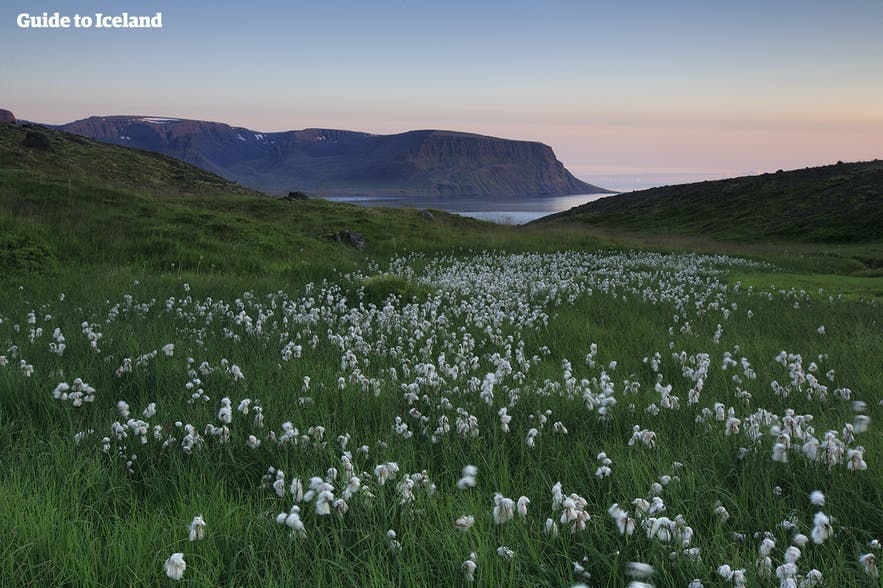
What are the 5 major do’s and don’ts for travel in Iceland? How can you avoid the mistakes of travelers past? How can you make the most out of your experience here? What behavior is considered... unsavory? Read on to find out all there is to know about how to travel in Iceland.
- Read about The Ultimate Guide to Driving in Iceland
- Check out these Tips for Backpacking in Iceland
- Get wise with the Ultimate Guide to Flights in Iceland
- Don't be unprepared and find out What To Pack for Travel in Iceland
Iceland travel should command a great deal of respect. Harbouring a diminutive population of 330,000, this enticing landscape has opened its doors to the world, pulling back the curtain on all that makes this country so special.
Popular self-drive tours
10-day self-drive tour of the complete ring road of iceland with top attractions & snaefellsnes, best 1-week summer self-drive tour of the ring road of iceland & golden circle, best 7-day northern lights self drive tour through south iceland to jokulsarlon ice cave.
Its nature is unlike that found anywhere else, a melting pot of creeping glaciers and gushing waterfalls , steaming volcanic vents and scenic coastlines. Its towns and cities are modern, full of charm, boast unique cultures unto their own and are only a short drive away from some truly fantastic attractions.
But still, Iceland is a quiet, solitary kind of place; it is an island characterised by its mystic qualities, haunted and sweeping, silent. Those arriving from busier locations—and, let's face it, that could be almost anywhere —are quick to forget that 21st century Iceland is a nation experiencing growing pains, tentative but excitedly flirting with the outsider. How these flirtations materialise will come to define Iceland for many, many years to come.
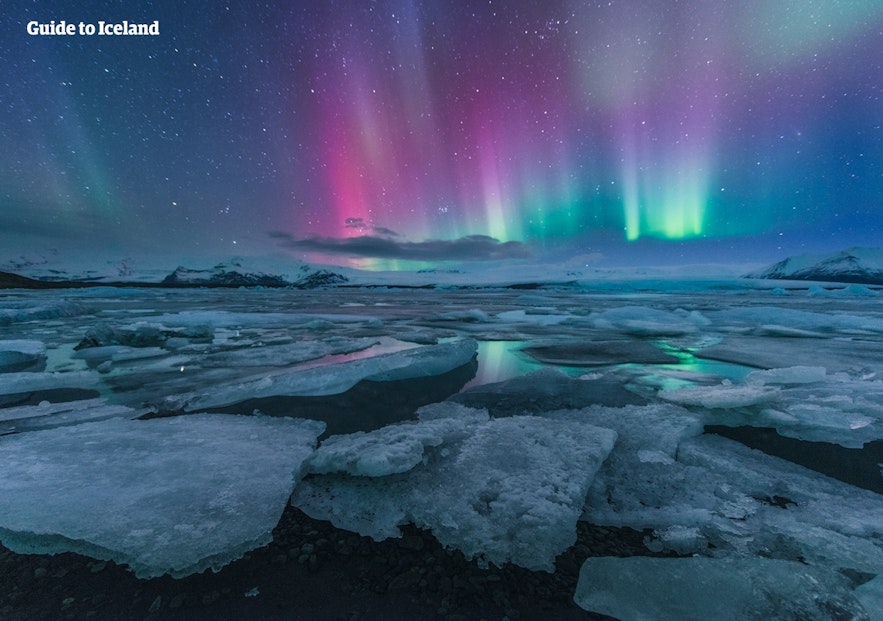
- See also: The 7 Best Spots for Peace, Quiet & Silence
Not that it has many choices; embracing the tourism boom is a must for the Icelandic government, for its economic stability, for political influence and for its future development. With the right attitude, the right support and the right policy decisions, Iceland may have found a lasting provider, pulling away from their reliance on fishing exports and aluminum smelting.
This Golden Goose of outside interest might, one day, cease to exist; in the meantime, Iceland and travelers have become intertwined, interwoven, entangled and infatuated. Both parties have readily accepted the terms of this arranged marriage and, for the most part, both are giving it a real shot at working out.
By traveling in Iceland, you involve yourself in this relationship, and like any relationship, it’s based on mutual attraction, communication and compromise. Your behavior, pre-planning and cultural awareness will, without doubt, affect the nature of your trip, and so it’s best to keep in mind certain sensitivities whilst traveling here.
If not, you might very well face the wrath of the Vikings... or the weather... or just your own incompetence, and that’s not good news for anyone.
- See also: Sustainable Tourism in Iceland
Frequent travellers roundly understand that there is a little thing out there called ‘ travel etiquette ' , (we have an article designated to it— Travel Etiquette in Iceland —for those who are unaware).
People, in general, seem to understand the overarching concept of etiquette , at least—we are civil to one another most of the time, after all—but there is something about the experience of travel, of swanning off abroad to far-off and exotic locations, that will often bring the worst out in people's behaviour.
- See also: Top 11 Travel Tips in Iceland

We’ve all witnessed the passengers who fail to grasp this notion—the tourists who treat the aircraft as their personal gentleman’s lounge, who expect special treatment at restaurants and attractions, merely because they happened to have been born elsewhere... (“Well, where we’re from...”).
The ones who leave their biscuits wrappers flapping in the wind. The ones who use both armrests on the aeroplane. Those who cut queues, demand their own language, sneer at menus and, generally, distrust the locals. You know of the tourist breed I speak of, I'm sure... call it a break from the monotony of daily existence, call it a fear of the outside, it doesn't matter... they exist, and they must be educated.
As I’ve suggested, we're not pretending to be saints here. What we can do, however, is learn from our past mistakes; to try to stick to a principled, moral code on how we conduct ourselves around our overseas contemporaries. Really, it comes down to making the world a more tolerable place, and who doesn't like the sound of that whilst on vacation?

During your time here, if, for reasons best known to you, you happen to find yourself in the company of an Icelandic boy scouts troupe, you might hear the declaration “ Ávallt viðbúinn! ”, in English, “ Always Prepared! ”
This is one of the better slogans to arise from the youth organization, and travelers would do well to keep such wisdom in mind long before setting out for the airport. That means one word; organization.
Where is your passport? Where is the boarding pass? Do you have your travel itinerary? How many knickers did you pack? Have you left the cats enough food? Is the currency exchanged? All of these questions should be racing through your mind before leaving the house.
Setting aside preparation to the last minute is bound to increase your anxiety levels and may even tarnish your holiday experience should something have been overlooked. So stop procrastinating and prepare; as the Icelanders say, " Áfram með Smjörið ", or " Get on with the butter !"

The fact of the matter is, Iceland is a country that willingly punishes those who fail to do so. Amidst the flurry of multi-layered, wool-attired pedestrians, one will lay sight on that sorry soul who has now learnt what he once failed to grasp; that Iceland might be a little on the chilly side.
He will stand in his knee-length shorts and a band-tee, a look of glassy-eyed misery masking his features, wondering why just why, he hadn’t had the forethought to, maybe, pack a jumper? Perhaps an extra pair of socks? Even some common sense?
Aside from rudimentary clothing requirements, Iceland also demands of its visitors that they follow the law of the land; no off-road driving, no speeding, no terrorising the locals, don’t drink beer before 1989, don’t engage in a boxing match, don’t name your baby something that can’t be conjugated according to Icelandic grammar rules… all of these must be followed, otherwise, guests can expect a memorable, guided tour around the inside of an Icelandic police station.
Some basic research on Iceland, its major attractions, and its logistical realities will go a long way before arriving here. For example, it's important to both find and book accommodation, and a vehicle, that will meet your itinerary requirements. Only 4x4s can access the Central Highlands, for instance, and only in the summertime when the region is accessible. Information of this kind is invaluable and only comes with setting aside time beforehand to keep yourself updated on what is and is not possible during your time in Iceland.
So too will the number of days you have here, determining just how much time you have to explore this country's many gorgeous natural features. Before booking your trip, make sure to research the many waterfalls, glaciers, coastlines and activities that Iceland offers; that way, you are in the best position to choose exactly how many days you will need here in order to fulfil your holiday ambitions.
We all have gripes when it comes to travelling. Personally, I cannot help but be embittered when I happen to stumble across a crowd of my fellow countrymen, loudly declaring to, say, the streets of Nice, or even somewhere further—Nairobi, for instance—the tribal chanting of home: “ENGLAND! ENGLAND! ENGLAND ENGLAND ENGLAND!” I'm sure you've been somewhere, far away from the UK, and heard this; it's rather difficult not to.
- See also: What is an Icelander?
Now, for all the confusion this brings about to me— do they know where they are? Are they trying to get home? —I can’t lay all the blame at my countrymen’s feet. In truth, every country possesses a handful of ambassadors who, unfortunately, can’t help but represent the less appropriate qualities of their homeland.
I’m sure you, dear reader, boast certain cultural traits equally unmanageable within the arena of travel.
- See also: Where Did Icelanders Come From?
Like it or not, we ARE judged by others, judged by both the things we can help (i.e; our manner, our aptitude for kindness and compassion) and the things we cannot (i.e. our race, our nationality, our background). It's not fair, and it's not right, but it is, unfortunately, a part of human nature.
Though we shouldn't wallow too much in the judgement of others, being a positive cultural ambassador will simply make your life easier, and will likely educate others out of stereotypical thinking. After all, deep down, past the trivialities of race, colour and creed, we're a big human family. Tourism teaches us that like nothing else. So be kind, keep an open mind, respect the culture and try to keep a healthy level of awareness; remember, you ain't in Kansas anymore.
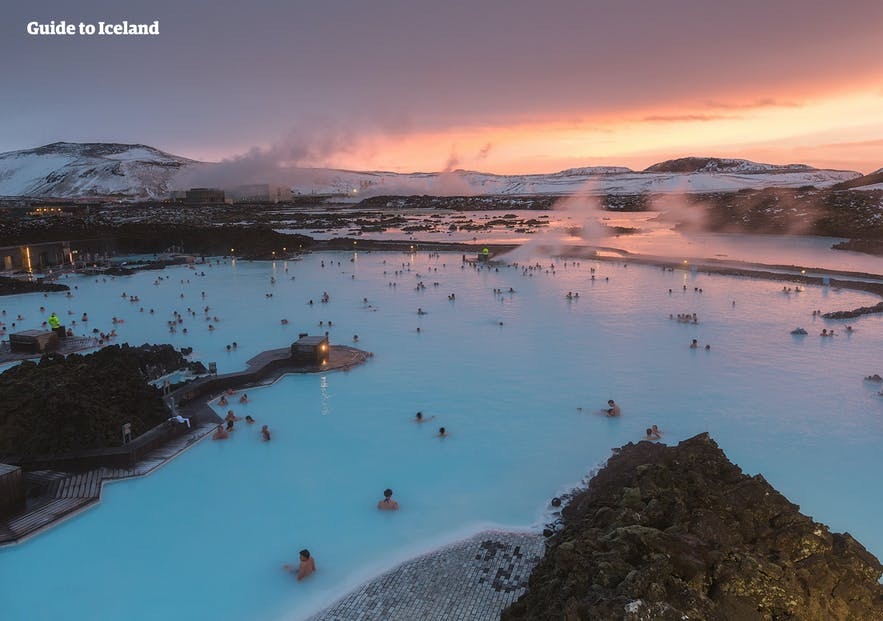
Bathing, relaxing, soaking in the country’s pools; it is a staple pastime amongst the locals here, be it in the clean and modern facilities of the city or the natural, geothermally-heated pools found dotted about the countryside. For an island often defined by its harsh and inhospitable climate, who can really blame the Icelanders for loving hot pools so much? It's a natural remedy, a means of escape and contemplation and, most importantly, reliable warmth.
- See also: The Best Swimming Pools in Iceland
This passion for bathing is very much something visitors will want to adopt; it is an authentically Icelandic experience and is one of the best means of getting a true insight into Icelandic culture.
Unlike elsewhere, visiting the pools is a social activity, a chance to catch up with friends and family and even meet new people—it can get awkward in a six-person hot tub if no one presents a conversation topic. Given this social atmosphere, the pools offer an opportunity to meet Icelanders on their home turf, away from the frantic energy of the city's bars and dance floors.
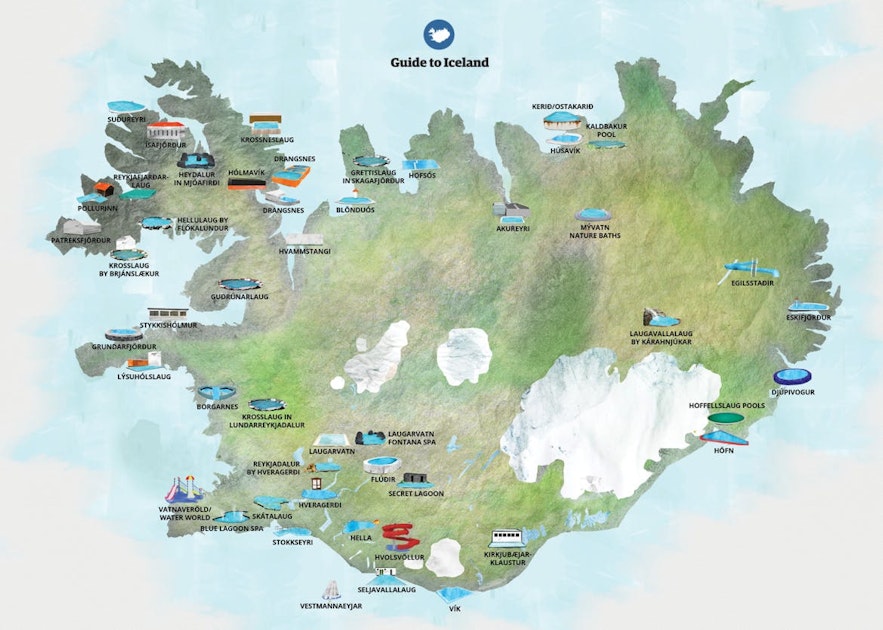
On top of that, Iceland's pools are often accompanied by fantastic panoramas of nearby mountains or coastlines. For those within city limits, guests will likely enjoy a series of hot tubs (of differing temperature), a large swimming pool, a kid's pool, steam rooms, saunas and even water slides. Given such facilities, it's hard to find anything about the pool-going experience that's worth critiquing.
- See also: The Best Swimming Pools in Reykjavik
That is, except one minor precondition...
Showering your filthy filthy filthy body is a requirement before entering Iceland's city pools; despite the reservations, you might have about all this public nudity, the reasons are actually quite rational and act as a preventative measure for the spread of infectious diseases. That’s not to say stripping down in front of a room of strangers is comfortable, nor indeed particularly sought after; it is simply necessary.
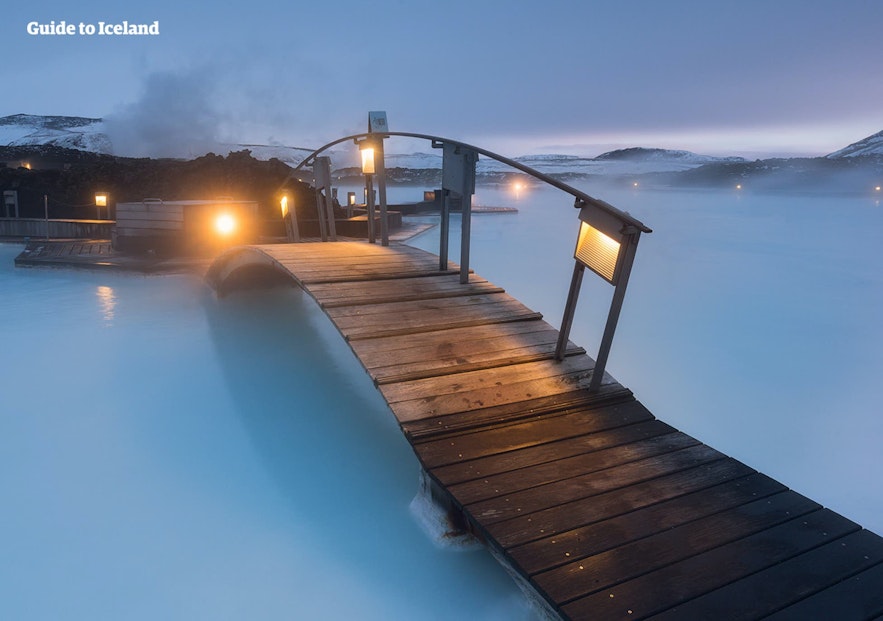
For those of you out there who think you might manage to escape this, you will be roundly seized upon by the changing room attendant. The attendant is an individual whose lucky job it is is to make sure that you are cleaning your various areas thoroughly. He, or she, will likely be situated in a small observation booth, a position from where they can keep a watchful eye over the showers.
There's little chance of escaping; with the pinpoint gaze of an Eagle, the attendant is considered, by some, as the watcher on the wall for Iceland's swimming complexes.
Being told off by the changing room attendant is, in many ways, as embarrassing as revealing your treasures to a room full of people. Besides, what’s not to see that’s not already been before?
Embrace the nudity, embrace the cleanliness, embrace the changing room attendant— if they'll let you —and you might find yourself enjoying the best swimming/bathing experience you’ve ever had.
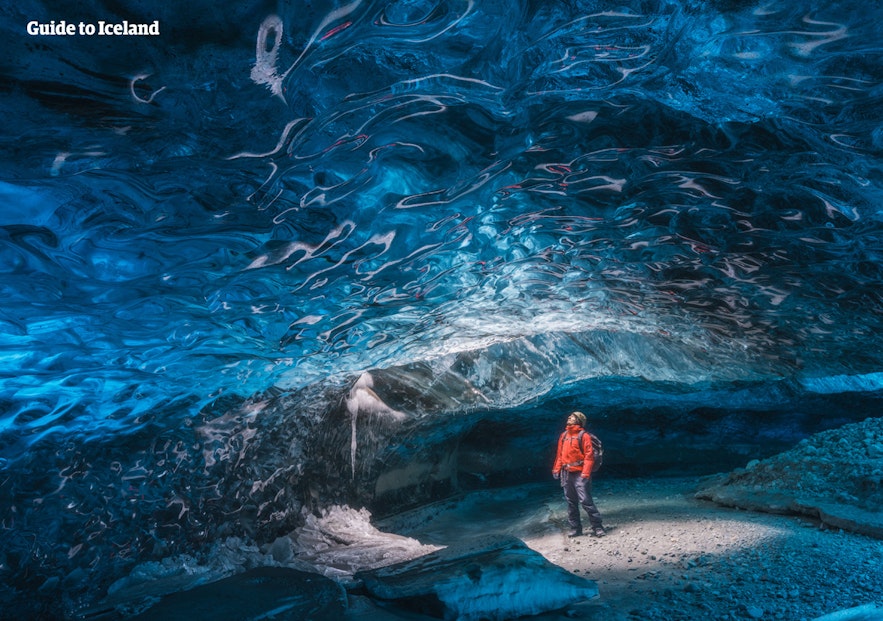
Travelling to Iceland is all very well and good, but what activities you choose to partake in here will come to define your holiday experience. Thankfully, the list to choose from is truly diverse; one could fill your time scuba diving , glacier hiking , ice-climbing , horse riding , mountain biking, ATV driving , helicopter flying …
Which tour(s) you choose to partake in will provide a unique perspective on the Icelandic nature. For instance, there’s no real way to experience the crystalline majesty of the glacial spring, Silfra Fissure , without go either snorkelling or scuba diving. There’s no better insight into Iceland’s geological history than descending into the volcano where one can observe the kaleidoscopic colours imprinted into the magma chamber’s rock walls.
Guides across Iceland, whatever their discipline, are knowledgeable, passionate, experienced and qualified in their activity, as well as first aid and emergency response. This ensures that tours in Iceland are as safe as possible, and is one of the leading reasons as to why it is forbidden to try and partake in certain activities without a guide present. Glacier hiking, for one example, involves a thorough awareness of the terrain, including the locations of hidden crevasses, thin ice and gorges.
Top Adventure Tours in Iceland
Let’s face it, it can be challenging to take personal responsibility whilst in a foreign country. After all, you’re not going to stay for long, are often moving from one destination to another and harbour little intention to return. Besides, this is your holiday, right? Who's to tell you how to behave when you're taking some time off?
It’s certainly easy to take what one wants from Iceland’s many attractions—their transient beauty, photographic potential and esteem among global sites—but an entirely different thing altogether when it comes to ensuring it is left the same way as you found it.
- See also: Iceland's Troubled Environment.
But what does taking responsibility really mean? For what? Well, responsibility, in this case, can be broadly sculpted down to using your common sense. Littering, for instance, is an obvious crime, both legally and morally, as is disregarding any safety warnings you might spot at the attractions or by the roadside—a number of tourists have taken to endangering themselves recently in a bid to capture dramatic and unique photographs, an ambition that's just not worth a human life.
1. DON'T Believe Everything You Read
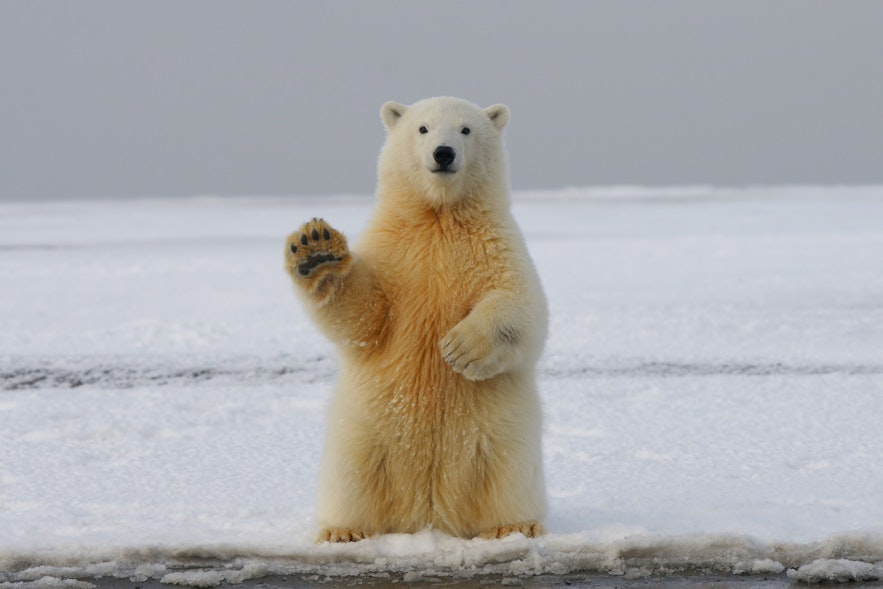
Reading about and researching a location—as one is prone to do before travelling—is an excellent means of getting a base knowledge of your destination, allowing you to plan out itineraries, store useful titbits about its history, culture and people, and even to cultivate the impression you’re already there.
There can be no dissuading any prospective traveller from doing this; it is, in fact, one of the tenets of being a sustainable tourist. With that being said, however, one should not believe everything that one reads.
- See also: Icelandic Literature for Beginners
For instance, we here at Guide to Iceland are quick to rectify our mistakes should they slip through the editorial process. Still, they do happen from time to time, so dictates the era of rapidly produced content.
Of course, the rest of the internet is not so willing to repair the ripped seams of untruth that permeate about Iceland. Quite frankly, there are certain myths prevailing on the internet that should be ignored, scoffed at and shared as prevailing examples of Fake News.

One is that the Icelandic government will pay foreign men to marry an Icelandic woman. This is, unequivocally false, and thus cannot be relied upon as a secondary income. So too is the presumption that Icelandic women are somehow ‘easy’, ready to drop their frillies at the first sign of exotic interest. As a single man with an accent, let me tell you, sincerely, that this has also proven to be reliably untrue.
- See also: Happy Hour | Reykjavik's Cheapest Beers
2. DON'T Be Afraid To Try Speaking Icelandic
It is common knowledge that Icelanders are adept at language. Not only do they have an incredible tradition of oral and written storytelling—all the way up from the ancient Sagas to Halldór Laxness' 'Independent People'— but they also speak fluent English, with many also fairly proficient in Danish and other European languages.
- See also: How Difficult is the Icelandic Language?
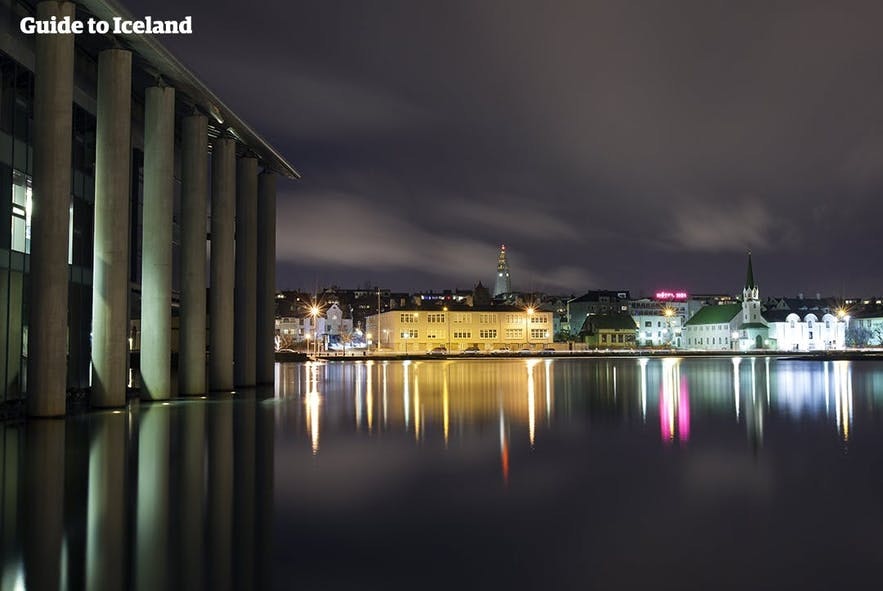
The fact the population speaks English (and other languages) so eloquently has kept travelling here largely free of miscommunication. Asking for directions or advice is a simple affair, as is ordering food and freely conversing with the Icelanders you meet.
For the hell of it, before travelling, you may have looked up some useful Icelandic phrases. To do so, again, is to prepare yourself as a sustainable tourist and a positive cultural ambassador. Even so, a quick look at these phrases likely cemented in your mind that Icelandic is a notoriously difficult language.
"My name is" ... Ég heiti ... "I'm from" ... Ég er frá ... "Hello" ... Halló ... "Have a nice day" ... Eigðu góðan dag ... "Please say that again" ... Gætirðu sagt þetta aftur? ... "How much is this?" ... Hvað kostar þetta? ... "Thank you" ... Takk / Takk fyrir ... "My hovercraft is full of eels" ... Svifnökkvinn minn er fullur af álum ...
Largely unchanged since the Settlement period, the Icelandic language resembles Old Norse very closely, using the same alphabet and many of the same pronunciations. This makes it particularly inaccessible to the native English speaker, who must get their tongue around a host of new sounds and tongue positions.
3. DON'T Overlook the East
East Iceland, while the largest region, is also the least populated. It is also visited the least out of all the regions in Iceland, no doubt in large part due to it being on the polar opposite end of the country from the capital, Reykjavík, and Keflavík International Airport. Those who choose to leave East Iceland from their itinerary will be missing out on one of the most distinctive areas of the country, however.
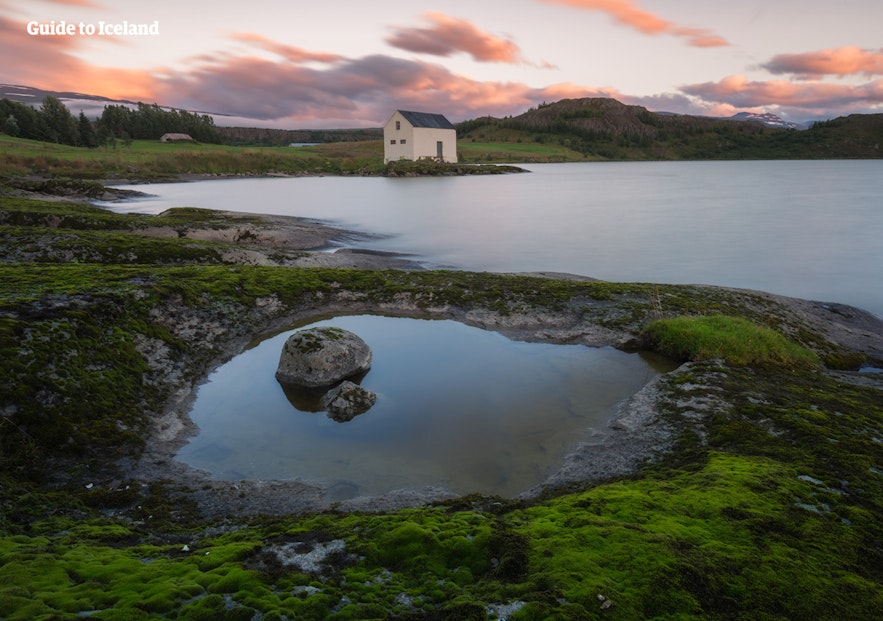
The furthest most travellers will venture is Jökulsárlón Glacier Lagoon , known as " The Crown Jewel of Iceland " for its glittering icebergs and tranquil atmosphere, as well as the adjacent Diamond Beach , where said icebergs drift outward to the Atlantic Ocean.
- See also: Top 10 Places to Visit in East Iceland
Though undoubtedly beautiful, the journey back and forth from Reykjavik will often take up to ten hours—given the number of beautiful spots along the way—and so Jökulsárlón has become the de-facto ending for most people's Icelandic adventure.
The Ring Road goes on, however, leading to a host of unique and fascinating attractions. Guests to the East can expect to visit such known features as Lake Lagarfljót , Stórurð ("The Giant Boulders"), Víti Crater Lake , Hengifoss waterfall, the dome-shaped mountain Búlandstindur and Hallormsstaðaskógur National Forest , to name just a handful. There is also the naturally warm waterfall Laugarvellir (with accompanying hot pool) and the dramatic, coastal mountainscape, Vestrahorn.
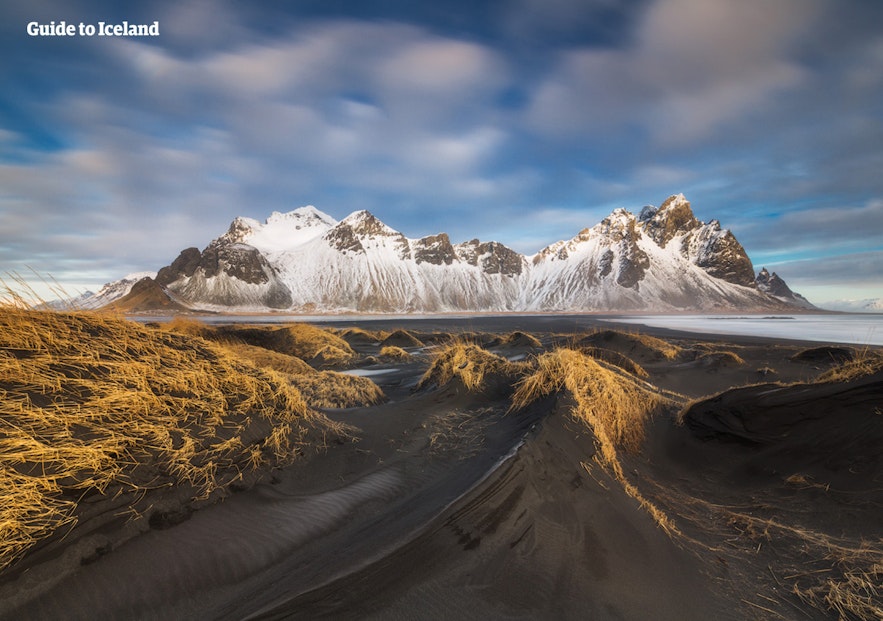
For the rare few who are not travelling to Iceland by aircraft, you will arrive by ferry to the shores of East Iceland, in the town of Seyðisfjörður . The ferry, Norræna, sails from Denmark to Seyðisfjörður and back every week, with a stop made at the Faroe Islands.
Seyðisfjörður itself is a prime example of the many quintessential fishing villages that dot East Iceland; surrounded by waterfalls and hiking trails, this artistic settlement ( approx. population: 700) also boasts a post office, swimming pool, hotels, supermarkets, two cinemas, two museums and a hospital.
4. DON'T Avoid Icelandic Cuisine
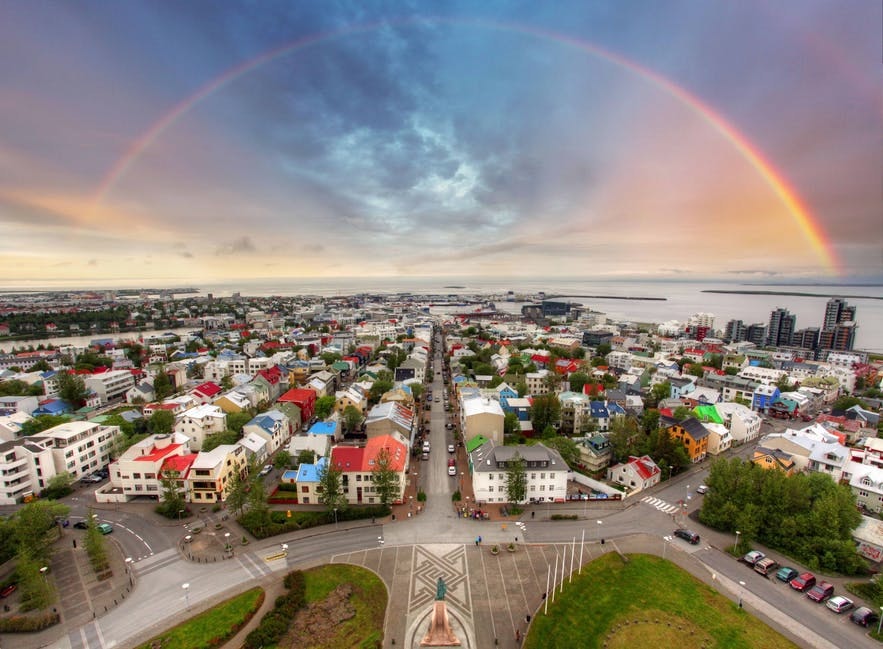
Okay, granted, there are some peculiar looking dishes when it comes to eating in Iceland. If you happen to look in the freezer of some supermarkets, you might come across Svið , a traditional dish that comprises of a split, boiled sheep’s head. This popular and authentic dish should not put you off at all—culinary delights await around every corner of Iceland’s larger towns.
- See also: Top 21 Vegan & Vegetarian Restaurants in Reykjavik
Fish is, of course, an enormous contribution to the Icelandic diet; having sustained themselves for centuries on ocean bounty, the Icelanders are more than experienced in serving up some truly unique fish-based dishes. This isn’t surprising, given that Iceland’s economy has, more or less, survived on fishing and fish processing since the island’s settlement.
The most infamous fish dish in Iceland is, undoubtedly, Hákarl , otherwise known as fermented shark. Served up with a shot of the Icelandic schnapps, Brennivín. Many visiting Iceland for the first time consider trying a mouthful of this "delicacy" something of a challenge... a trial of fire, if you will. Hákarl makes up part of þorramatur, a tradition of seasonal Icelandic foods.
- See also: The World's Most Disgusting Icelandic Food
Most food shops and convenience stores will also sell packets of Dried Fish, wildly popular amongst the local population and a cause of mild anxiety for everyone else. Despite their arresting odour, the dried fish is incredibly tasty, making for an authentic snack during your time here. Besides these traditional food items, we also heartily recommend checking out some of Iceland's fine dining restaurants.
- See also: The Best Restaurants in Reykjavik
5. DON'T Shop at 10-11 (Unless it's a necessity)!

By now, it is well established that Iceland is an expensive country, not only to visit but to stay in, to be born into, to exist in. The looming, omnipresent expense of it is, of course, the curse of all islands... food items must be brought into the country, and there is a lot of ocean to cross.
Despite that, there are a number of supermarkets that, at least, allow the purchase of groceries for relatively normal prices, amongst them being Bónus , Hagkaup and Krónan . One establishment that categorically does not fit this mould, yet somehow manages to continue its spread across the country, is the 24-hour store, 10-11.
- See also: Shopping for Groceries in Iceland
Instantly recognisable by its circular green signage, you would think 10-11 is selling capsules of heroin, given it's intense, often hysterical popularity. Open throughout the night, the service at 10-11 could roundly be described as dismal, with the odd touch of humanity sometimes shining through in, perhaps, 1 out of 11 staff.
But now, I feel a little guilty. It is hard, after all, to blame the cashiers. No, it is the corporation we're dismissing here. It is the provincial, opportunistic flair in which 10-11 will prey upon the ignorance of its' customer base.

But who suffers? Not those who live here, you can be assured of that. No, it is you, dear reader, because you have been ill-informed, and you are all to quick to jump into 10-11 when a far cheaper Bónus is only a street away. It happens as quick as a flash; one moment you're stepping into 10-11, the next, you're 4000 króna out of pocket, with little to show for it.
10-11 has even been known to up their prices 8% in the nocturnal hours, meaning those seeking a convenient afterparty snack will find themselves paying a rather immoral price... (a third of the businesses' outlets were found to be doing this). Even during daylight hours, visitors here can expect to pay an extra 50% on their shopping bill. And who needs that?
Given the business' reputation as a manipulator of prices, stock and people, it comes as little surprise that 10-11 must be ever on the alert for shoplifting. This is clearly observable; security guards linger around the entrance like bouncers, shiftily giving you the eye as you walk in.
It is quite the atmosphere for a local convenience store, about as joyous and full of life as one of its day-old pizza breads. But, given our vitriol, perhaps this final "DON'T section" should instead be retitled "DON'T Shoplift from 10-11" .
Though, quite frankly, that's a difficult one to take personal responsibility for.
Did you enjoy our article on How to Travel in Iceland | The Top 5 Do's and Don'ts? What were the tips that helped during your stay, and is there anything else you might advise? Make sure to leave your suggestions and questions in the Facebook comment's box below.
Popular articles

Guide to Iceland | The Story of the Leading Travel Agency of Iceland

The Complete Guide to the Midnight Sun in Iceland

Top 20 Most Beautiful Waterfalls in Iceland

22 Photos of the Aurora in Iceland

Mountains in Iceland
Other interesting articles.
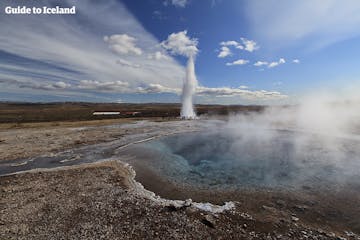
18 Tips on How to Save Money in Iceland
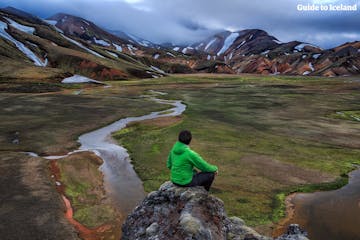
Solo Travel in Iceland | Going it Alone!
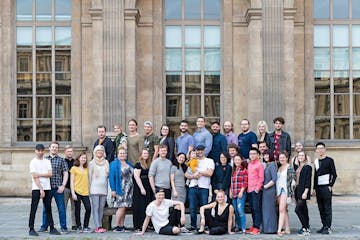
7 Crucial Tips for Group Travel in Iceland

Download Iceland’s biggest travel marketplace to your phone to manage your entire trip in one place
Scan this QR code with your phone camera and press the link that appears to add Iceland’s biggest travel marketplace into your pocket. Enter your phone number or email address to receive an SMS or email with the download link.
Top things to do in Iceland
Book your complete trip with the best companies only

Explore an Ice Cave

Visit a Live Volcano

Find the Northern Lights

Visit the Blue Lagoon

Go on a Road Trip

Do the Golden Circle

See the Glacier Lagoon

South Coast Tours
About Iceland
Visa information, geography of iceland, general information, the northern lights, volcanic eruptions, sustainable travel, iceland academy, plan your trip, how to get there, accommodation, things to do, map your journey, getting around, visitor numbers, carbon footprint, destinations, the regions, scenic routes, national parks, trip suggestions, towns & villages, inspiration, food and beverages, lbgt+ travel, find a flight to iceland.
A number of international airlines maintain regular scheduled flights to Iceland from both Europe and North-America. Find a list of all airlines offering flights to Iceland here.
I am travelling to Iceland from
Czech republic, faraoe islands, netherlands, north america, switzerland, united kingdom.

Delta Airlines
New York JFK and Minneapolis

Baltimore, Boston, New York, Chicago, Seattle, Toronto, Vancouver, Washington
Denver, Detroit, Halifax, Minneapolis, Orlando, Pittsburg, Portland, Raleigh-Durham
Boston, Baltimore, Orlando, Toronto and Washington
United Airlines
New York (Newark) and Chicago
You might also be interested in:
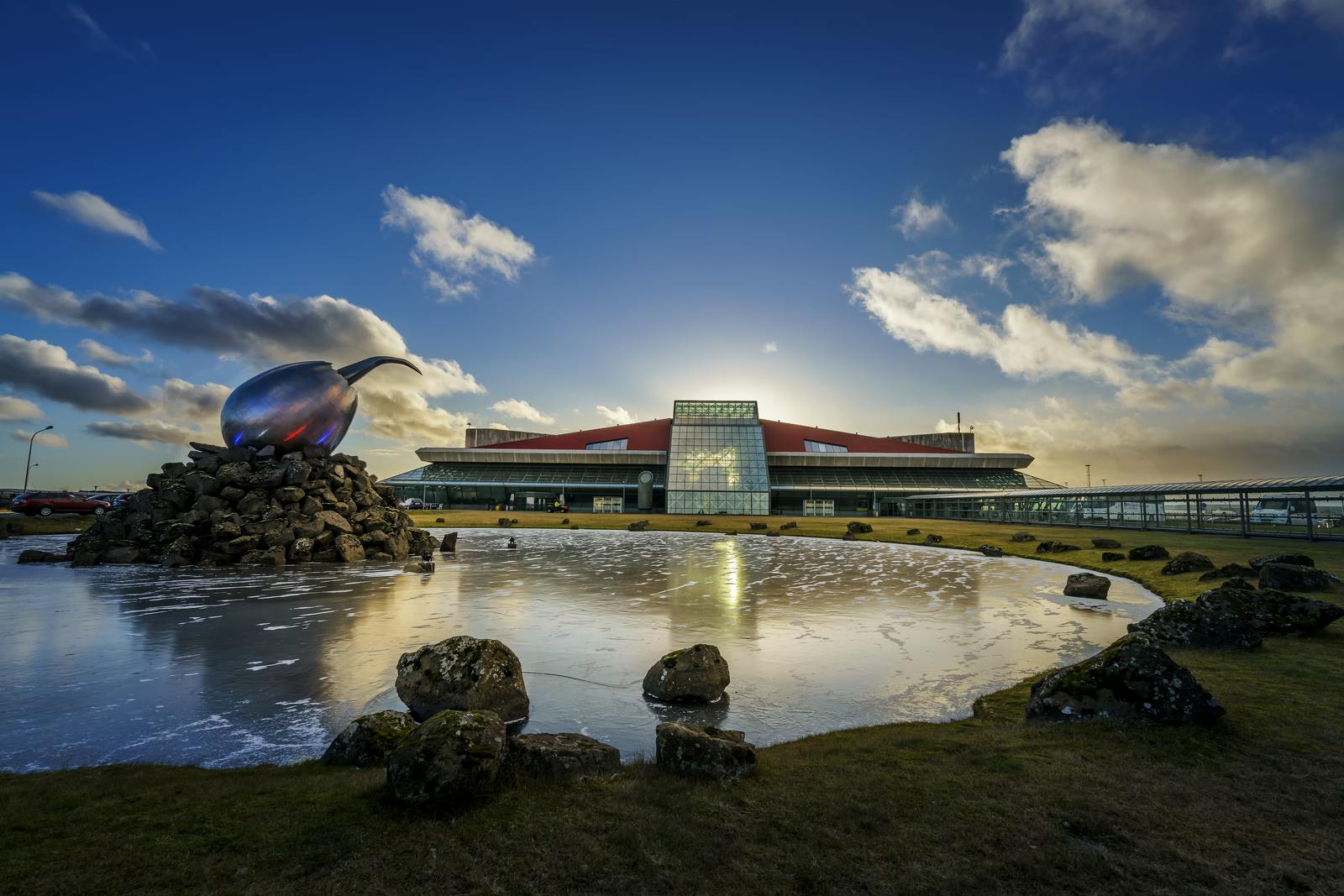
Arrival in Iceland
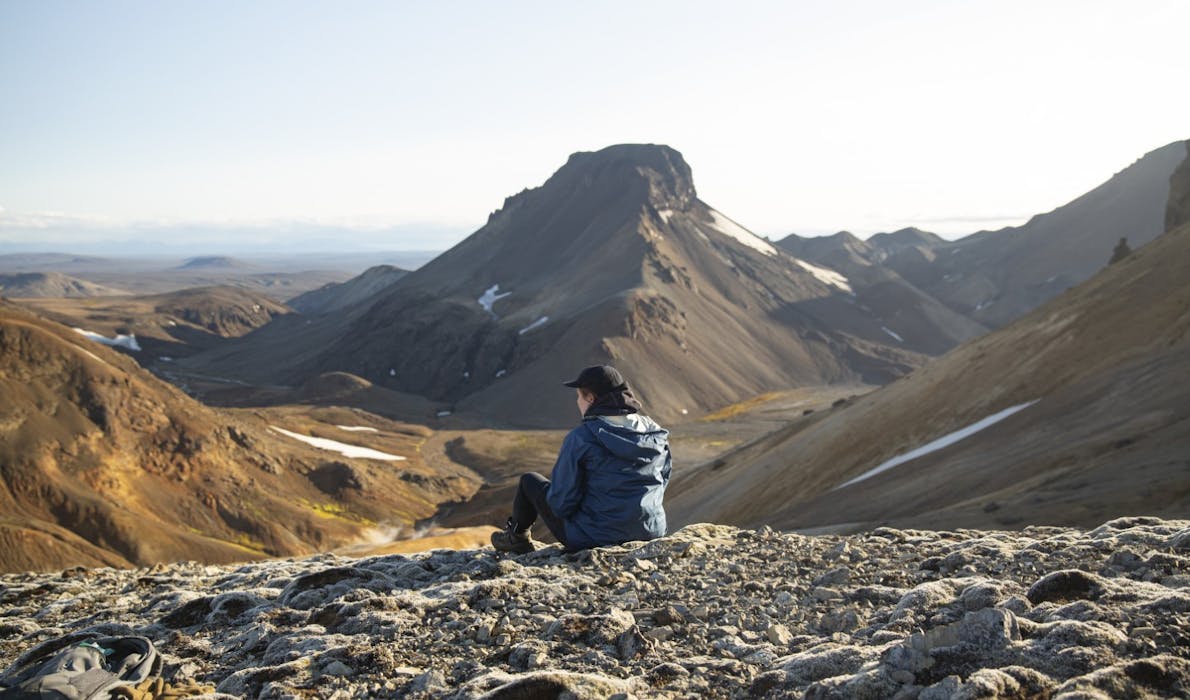
Planning a trip to Iceland
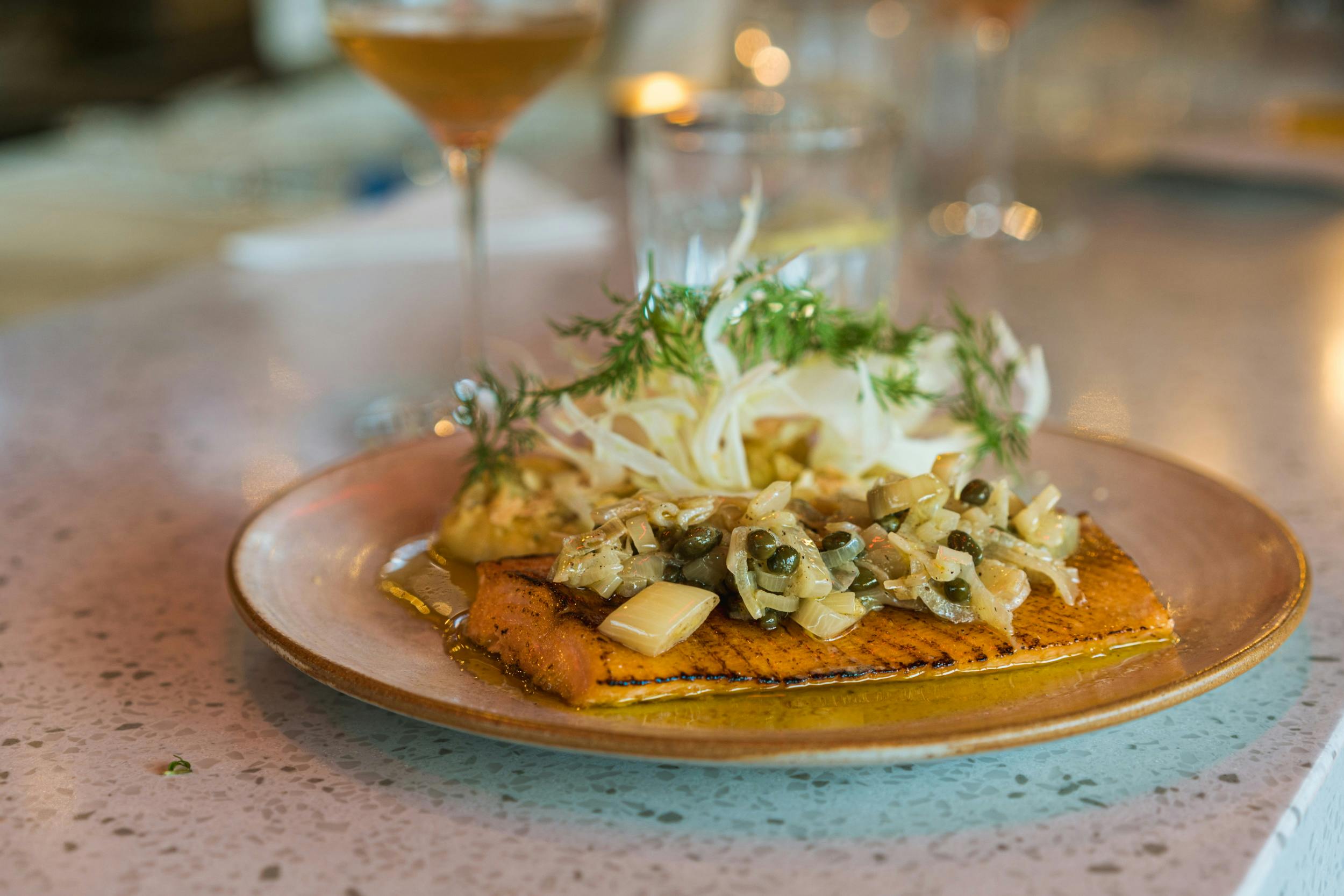
Mapping the best places for food and drink in Reykjavik
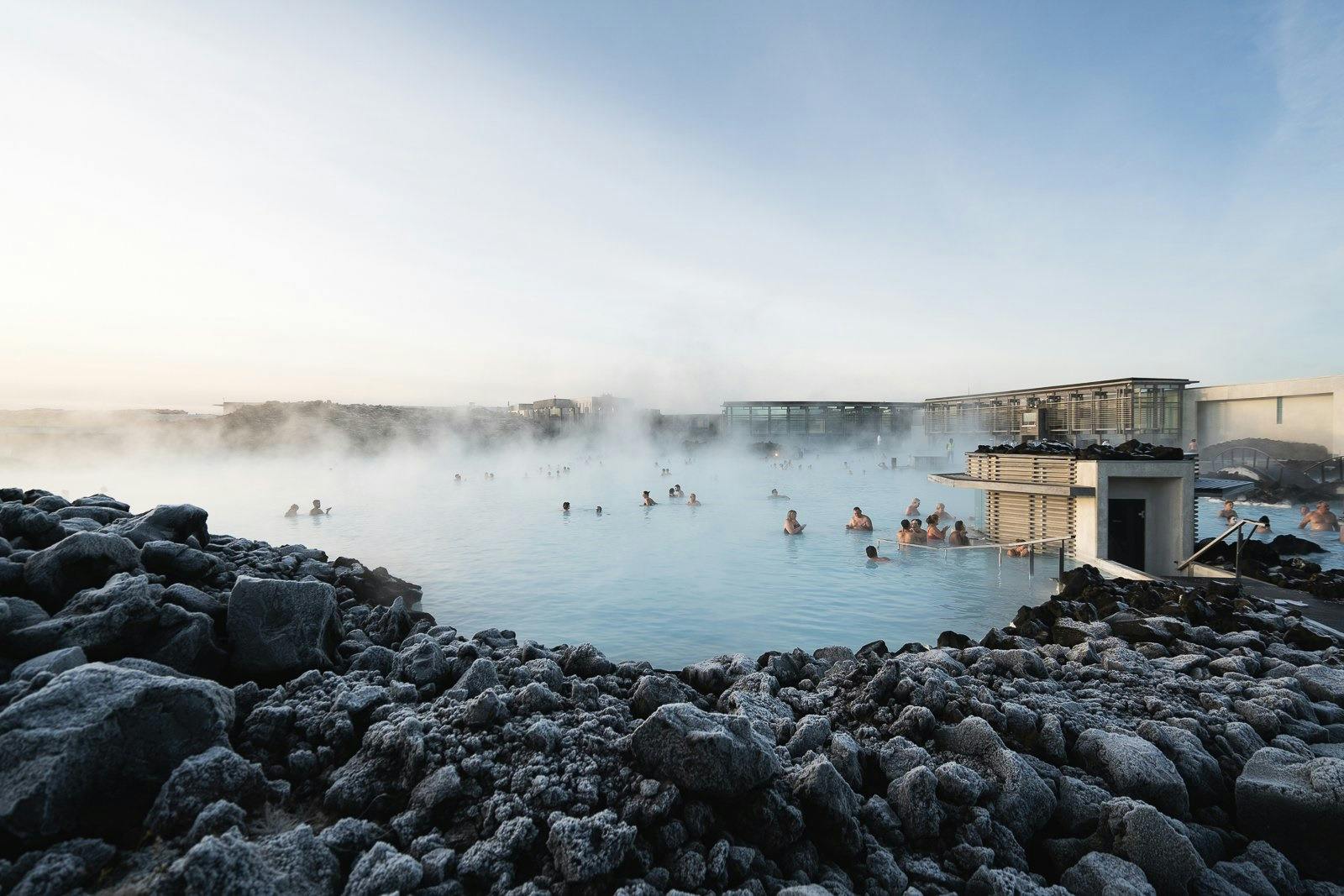
Geothermal Wellness in Iceland

Safe travel in Iceland
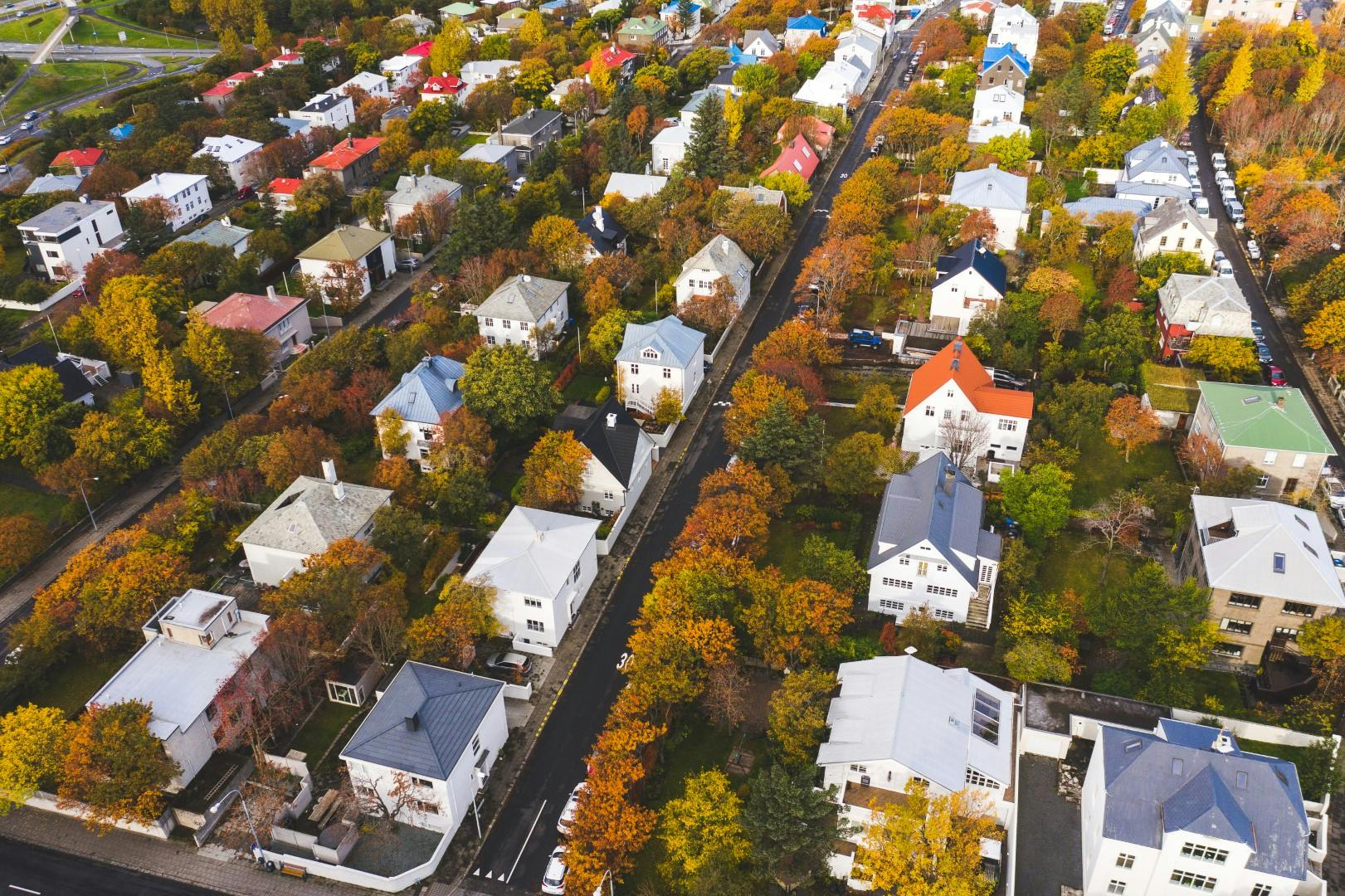
Iceland in numbers

The best souvenirs from Iceland
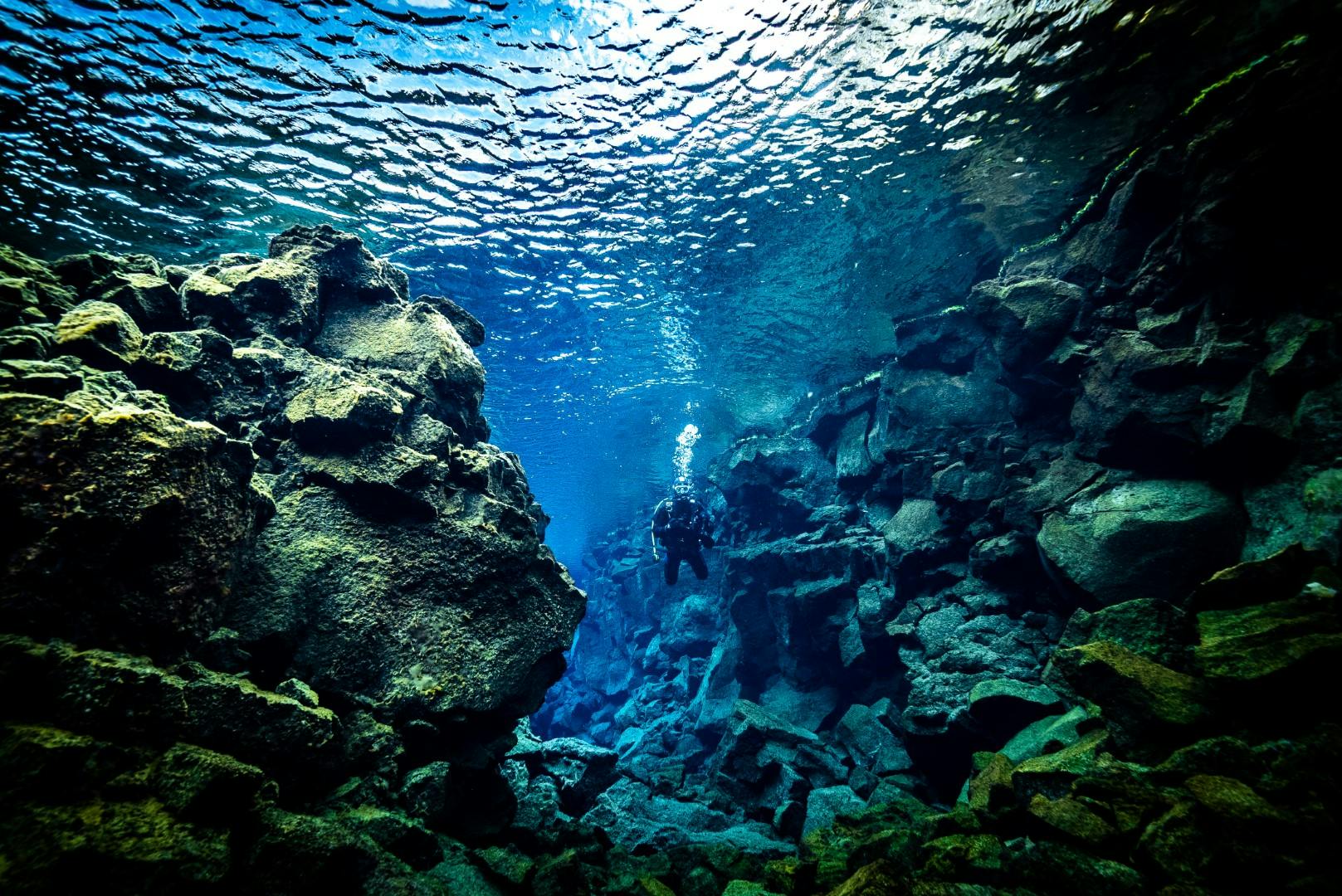
Diving and snorkeling in Iceland
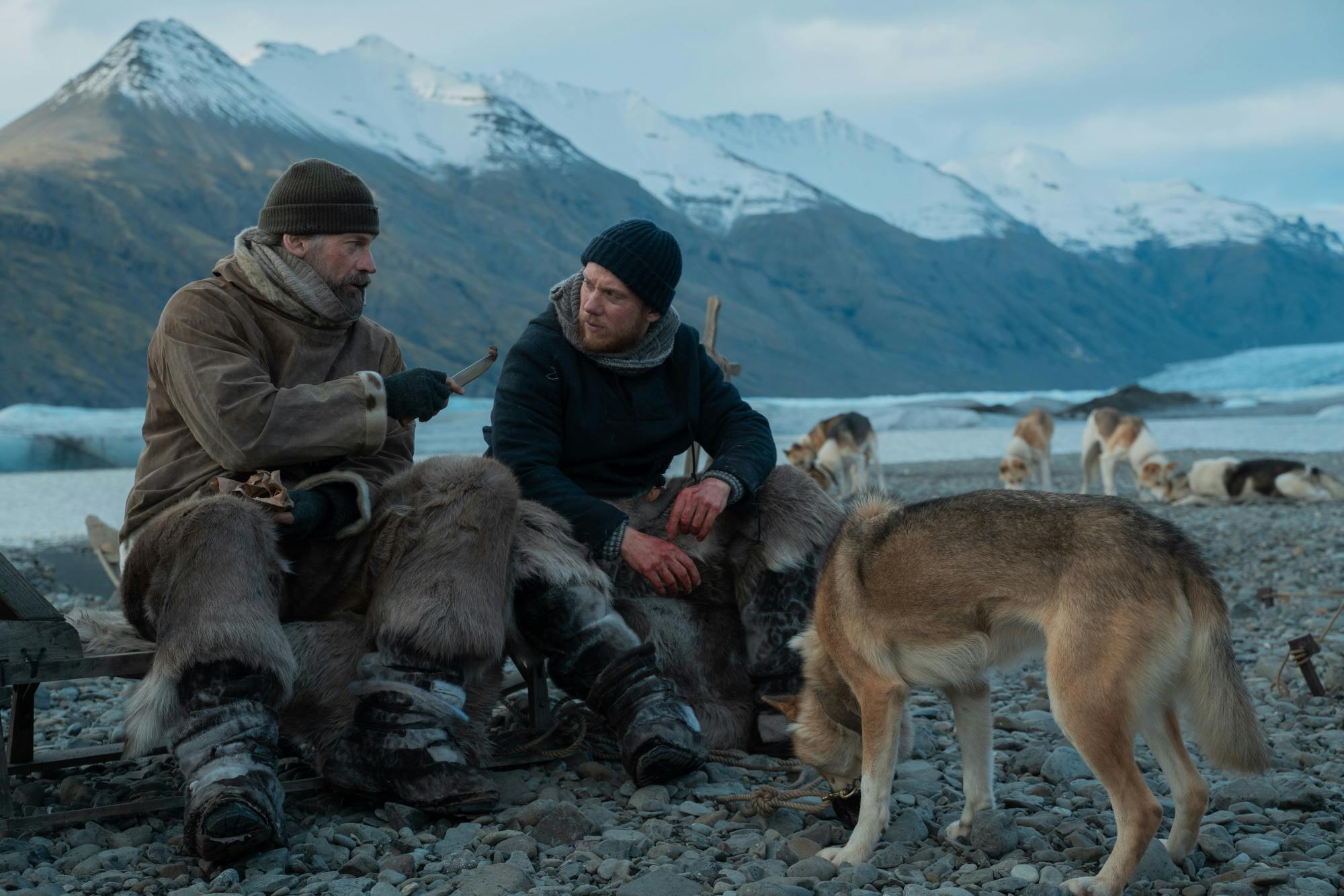
Famous film sights in Iceland

IMAGES
VIDEO
COMMENTS
Dyrholaey is just one of the many top places to see puffins in Iceland. 12. See the Largest Glacier in Europe. One of the best places to visit in Iceland is the Vatnajokull glacier, the largest glacier in Europe. It makes up 8% of Iceland's landmass with countless stunning ice caves, each a marvelous feat of nature.
Visitor numbers. Iceland is a popular travel destination. Sometimes, certain places can be busier than others. Skip the hectic tourist traffic at the most popular destinations and plan your trip to make the most of your time in Iceland. Use our tourist counter to see peak visitor times and plan accordingly. Find the best time to visit!
See all tours. 12. Go On a Whale Watching Tour. Whale watching is one of the best things to do in Iceland. Over twenty species of whales, dolphins, and porpoises call the Icelandic coastal waters home, ranging from the small harbor porpoises to the earth's largest animals, blue whales.
Here are our favorite places to visit in Iceland in 2024. 1. Mosfellsbær. Best for a quiet escape near Reykjavík. Reykjavík's friendly rural neighbor is Mosfellsbær. Its biggest attractions are the small mountains that surround the town, including Úlfarsfell, Mosfell, Helgafell and Reykjafell - all great for short hikes.
A year round destination. Every day, there is an adventure waiting to happen in Iceland. With it's abundance of mountains, volcanoes, glaciers, rivers, lakes, caves and otherwise rough terrain waiting to be tackled, Iceland is truly and outdoor enthusiast's paradise. But, it is also warm and welcoming place for the rest of us.
Download Iceland's biggest travel marketplace to your phone to manage your entire trip in one place. Your complete travel guide to Iceland. Find tips, book trips, affordable holidays or a self drive tour. Rent a car and find accommodation. Contact people, see pictures,
Planning tip: If you'd prefer to visit Iceland in the summer, the midnight sun provides for spectacular views, especially in north Iceland.For the summer solstice (June 21) find a good location for observing the sun bouncing off the ocean surface. One idea is the Arctic Henge in Raufarhöfn, which was designed as a giant sundial to capture the midnight sun in perfectly aligned gateways.
Must-see attractions. Vatnajökull National Park. Iceland. ... Read on to find out if you need a visa to visit Iceland, and more information if you do (and even if you don't). Budget Travel. 14 ways to experience Iceland on a budget. Apr 4, 2024 • 7 min read. Activities.
Travel Trade Media & Press Icelandic Met Office Road Conditions Icelandic Tourist Board. Follow us. Expansive Glaciers. Shimmering Northern Lights. Hot springs and geysers. Vibrant culture and Viking history. Vast volcanic landscapes and black sand beaches.
Summer. Many people consider the summer months of June to August the best time to visit Iceland. This is when the weather is warmest, although that doesn't mean it's hot. In Reykjavik average temperatures in July range from 9 - 14ºC (48 - 57ºF) and it can be colder in the north.
Visit Iceland for an unforgettable adventure. Discover the best hotels, restaurants and things to do with this highly curated Iceland travel guide.
Rauðisandur beach in the Westfjords. Dynjandi waterfall - Westfjords region. 11. Skaftafell National Park. Skaftafell NP is one of the easiest-accessible and most beautiful National Parks in Iceland. It, therefore, deserves a mention on every list of the best places to visit in Iceland.
While the beginning of the month is still as warm as July, temperatures start to go down by the end of the month. August is the best time to go to Iceland if you do not mind the crowds due to the fairly standard daylight hours. The sun sets around 9 PM and rises around 5 AM. August has the least cloudy days as well.
See more. 4. The Icelandic Whales. The ocean around Iceland provides ideal living conditions for over twenty species of whales, and in recent years, Iceland has steadily grown to become Europe's whale watching capital. Whale watching in Iceland is renowned for the high chances of spotting the magnificent sea giants.
Courtesy of Visit Iceland. Best Time to Visit Iceland for the Northern Lights . You'll need three essential factors to see the aurora borealis: darkness, clear conditions, and a surge in solar ...
1. Keep up-to-date on Iceland's volcanic eruptions. Travelers heading to Iceland in 2024 will be aware there has been a series of volcanic eruptions on the Reykjanes Peninsula in south-west Iceland, not far from Keflavik International Airport, the main entry point to the capital Reykjavik . No flights have been affected so far, and the rest of ...
Depending on the season and how many days you can stay, there are many options for seeing Iceland's top attractions. You can visit some of Iceland's most famous sights, including the Blue Lagoon and Golden Circle route, with as little as 3 days in Reykjavik. Guided excursions from the capital city are available year-round, even at Christmastime.
Babies Nap Outside in Iceland. From infancy to about 2 years old, Icelandic children sleep outside in baby carriages for their noon nap. This is on the belief that fresh air is imperative for a ...
If you're a T-Mobile customer on qualifying plan, you can add an International Pass to get more high-speed data and unlimited voice calling in 215+ countries and destinations. 1-Day (512MB) International Pass: 512MB of high-speed data and unlimited calling, to be used up to 24 hours, for $5. 10 day (5GB) International Pass: 5GB of high-speed ...
Top things to do in Iceland. Book your complete trip with the best companies only. Find useful information related to your trip to Iceland with our wealth of travel articles, ranging from driving tips to what to wear, the best time to visit, and the.
See all articles. Safe travel in Iceland. Public transport. Practical things to know when planning a trip to Iceland. The Ring Road. Iceland and Covid-19. See all articles. There are two ways of getting to Iceland; by airplane or by ferry. There are two ways of getting to Iceland; by airplane or by ferry. ...
Located about 220 miles above the Arctic Circle, Tromsø is one of several top spots to view the northern lights in Norway. At the darkest point of the aurora season - which runs from September ...
It is near Sells and Kitt Peak Observatory. The beautiful Vista United Methodist Church Labyrinth was built and dedicated in July 2005. Karl Anderson, a former SaddleBrooke resident, designed the ...
3. DON'T Overlook the East. East Iceland, while the largest region, is also the least populated. It is also visited the least out of all the regions in Iceland, no doubt in large part due to it being on the polar opposite end of the country from the capital, Reykjavík, and Keflavík International Airport.
See all articles. Arrival in Iceland. Planning a trip to Iceland. Mapping the best places for food and drink in Reykjavik. Geothermal Wellness in Iceland. Safe travel in Iceland. Iceland in numbers. The best souvenirs from Iceland. Diving and snorkeling in Iceland. Famous film sights in Iceland.